Search Questions
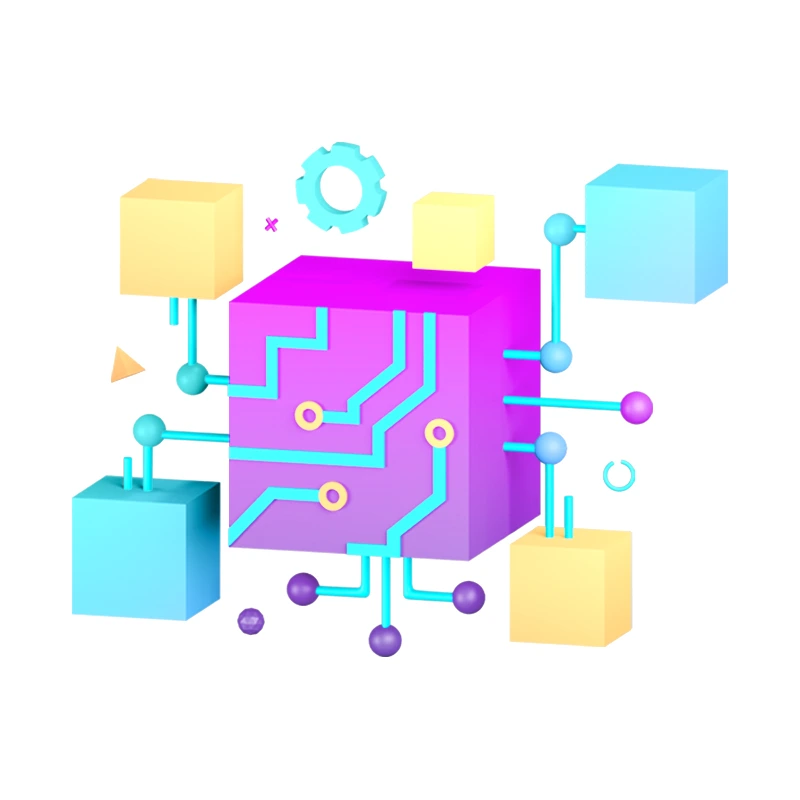
The Benefits of Fractional NFTs
Non-fungible tokens (NFTs) have exploded in popularity over the past few years. From digital art and collectibles to virtual real estate and gaming assets, NFTs are shaking up multiple industries. However, the high prices of desirable NFTs put them out of reach for many people. This is where fractional NFTs come in.Fractional NFTs allow people to own a portion of an NFT, making them more accessible and opening up new opportunities. In this blog post, we’ll explore what fractional NFTs are, their use cases, and the benefits they offer compared to whole NFTs.What are Fractional NFTs?A fractional NFT represents partial ownership of an NFT. Let's say there is a rare CryptoPunk NFT worth $100,000. This is far too expensive for most people to afford.With fractional NFTs, that single CryptoPunk can be divided into smaller pieces, like 100 shares worth $1,000 each. Now, 100 different people can each own 1/100 of the CryptoPunk NFT.So in summary: Fractional NFTs split a single NFT into multiple shares or tokens Each fractional token represents partial ownership of the underlying NFT Owners of fractions share rights to the NFT based on the percentage they ownThis opens up NFT investing and collecting to more people by reducing the buy-in cost.What is an Example of a Fractional NFT?One of the most well-known fractional NFT platforms is Fractional. art.Here's an example of how it works: An artist mints an NFT of their artwork called "Golden Gate Bridge" The NFT is listed on Fractional. art for $100 Fractional. art programmatically splits the NFT into 100 fractions each worth $1 Collectors can buy the fractional tokens on the platform with a minimum purchase of $1 Ownership and rights to the underlying NFT are divided based on the number of fractions each collector holdsSo instead of one person owning the "Golden Gate Bridge" NFT for $100, now 100 people can own a piece of it for just $1 each. This makes the artwork much more accessible.Many other fractional NFT platforms work on similar principles, slicing up digital assets into more affordable pieces.What is the Use Case of NFT Real Estate?One of the most promising use cases for fractional NFTs is virtual real estate. Full virtual land NFTs can be extremely expensive, with premium plots going for hundreds or even millions of dollars.Fractional real estate NFTs allow investors to buy into coveted areas like Metaverse boroughs or virtual world parcels at a lower cost. Even owning 1% of a highly-valued piece of virtual land could be lucrative as the metaverse grows.For example, Republic Realm bought a virtual Atari gaming world called Atari Island in Decentraland for $900,000. They fractionalized it into parcels, with the cheapest plot costing around $20. This allowed over 1,600 individual investors to get a piece of the valuable metaverse land.Virtual real estate is still speculative, but fractional NFTs make it possible for more people to get exposure to this emerging digital asset class. The fractions can be traded freely, creating secondary market opportunities.What is a Fractionalized NFT?Fractionalized NFTs and fractional NFTs refer to the same concept - splitting an NFT into smaller ownership shares.Some key points about fractionalized NFTs: The fractions act as ERC-20 tokens on Ethereum, while the underlying NFT is an ERC-721 token The fractions represent ownership rights and access to the original NFT based on the percentage owned Fractionalized NFTs allow shared ownership of NFTs without having to split the asset itself On-chain standards like ERC-1155 (multi-token standard) enable NFT fractions functionalityFor example, fractionalized CryptoPunks are ERC-20 tokens that represent partial ownership of CryptoPunk NFTs. Each fraction tracks ownership of the punk graphic, commercial rights, and the ability to display it.Fractionalizing creates smaller bite-sized tokens rooted in scarcer assets like top NFT collections, metaverse land, and more.What is an Example of a Fractional Share?Fractional shares are a traditional finance concept similar to fractional NFT ownership.With stocks, fractional shares represent owning part of a single share of stock.For example: Company XYZ is trading at $500 per share An investor buys 0.5 fractional shares for $250 They now own half of one full $500 share The investor gets dividend payments based on owning 50% of a shareFractional stock programs from brokerages like Robinhood, SoFi, and Charles Schwabb increase equity access for small investors. Someone with just $100 can own slivers of expensive stocks like Amazon.Similarly, fractional NFTs split expensive digital assets into accessible bite-sized interests. Owning 0.1 of a rare NFT can be easier than affording a whole one.Both fractional shares and NFTs benefit smaller investors by removing high entry barriers. Fractional ownership is a powerful concept that's expanding from stocks to alternative assets.What is an Example of Fractional?Here are some common examples of fractional ownership and assets: Fractional real estate - own part of a property through crowdfunding Fractional art - own sections of a large piece of art Fractional sports cards - own fractional interests in rare collectibles Fractional stock shares - own portions of full shares Fractional NFTs - own percentages of NFTs Timeshares - shared ownership of vacation properties Fractional yacht ownership - co-own and share yachts Fractional private jets - own hours on a private jetAnything scarce and expensive can potentially be fractionalized. This makes ownership more flexible, accessible, and liquid. Instead of one person owning something outright, fractions enable shared ownership.Benefits of Fractional NFTsNow that we've covered the fractional NFT basics, let's dig into the unique advantages they offer compared to whole NFTs:More Affordable Entry PointThe number one benefit of fractional NFTs is reduced cost. As we saw earlier, dividing a $100,000 NFT into 1,000 $100 fractions drastically lowers the buy-in price.Affordability opens up investing and collecting opportunities to more individuals. Whole NFTs with high price tags can exclude many from participating.Fractional NFTs have no minimum investment amount. Platforms let people own fractions starting at just a few dollars. This is perfect for small investors and collectors.Access to Rare and Elite NFTsAnother major perk is accessibility to rare blue chip NFTs. Items like Bored Apes and CryptoPunks are attainable only for wealthy crypto holders. Their prices can run into the millions!With fractionalization, anyone can own a piece of elite NFTs. Every day investors couldn't dream of buying a whole $200k CryptoPunk. But snagging a 0.5% fraction is possible and offers exposure to a top brand.Platforms focusing on blue-chip NFT fractions give broader access to sought-after digital assets. The ability to own fractions of rare collectibles adds more diversity to portfolios.Greater LiquidityFractional NFTs tend to be more liquid than whole NFTs. It's easier finding buyers for smaller $50 or $100 fractions than $50k+ full NFTs.Lower transaction costs also improve liquidity. Trading a $100 fraction triggers much lower gas fees than transferring an entire NFT.With fractional real estate NFTs, for example, investors can cash out of individual parcels while keeping ownership in larger metaverse properties. This piecemeal liquidity isn't possible when holding full virtual land plots.Overall, the bite-sized and affordable nature of fractional NFTs attracts more users, buyers, and sellers. This results in more active secondary markets compared to many whole NFTs.Shared Ownership ExperienceOwning fractionals creates a shared experience around coveted NFTs. Instead of a single whale owning an asset, a community of holders share rights.Fractional platforms often have social features that let fraction holders chat, collaborate, and jointly manage assets. Shared custody can make owning NFTs more fun and engaging.For real-world collectibles like cars or watches, fractionalization enables new social dynamics. Small groups can co-own an asset and coordinate sharing it.Shared interests strengthen communities around valuable NFTs and digital goods. This communal aspect is unique to fractionals.Potential for Investment GainsAlthough risky and speculative, fractional NFTs offer investment upside potential. If the value of the underlying NFT rises, the increased demand applies to all fractions.Let's say you own 1% of a fractionalized Bored Ape currently valued at $300k. If that Bored Ape later sells for $500k, your 1% stake price effectively doubles as well.Despite just owning a sliver, your fractional interest gains value aligned with the NFT itself. This turns fractions into leverageable plays on rising blue chip prices.Governance RightsMost fractional NFT platforms grant governance rights proportional to the percentage owned. Major decisions about the underlying NFT are put to a fractional holder vote.For example, owners of a fractionalized metaverse parcel could vote on whether to develop virtual buildings on the land. This ability to weigh in on asset use cases isn't possible when owning tiny slivers of stocks.Allowing fractional owners to vote, make proposals, and share management decisions helps engage the community. It also reduces centralized control by fractional platforms.Overall - More Participation in Web3At a high level, fractional NFTs promote wider participation in web3 and decentralized ownership models. By lowering buy-in costs, fractionalization makes the blockchain more inclusive.With whole NFTs and many tokens, wealth tends to concentrate among a few early movers and crypto whales. Fractionals enable a more distributed user base to benefit from digital asset growth.For creators, fractional NFTs unlock new direct-to-consumer revenue streams. Fans can directly support artists and causes by buying affordable tokenized creations.Widely available fractional NFT investing and collecting could be a game changer for mass Web3 adoption.Evaluating Fractional NFT PlatformsAs fractional NFTs gain traction, more platforms are launching to allow minting and trading fractions. Here are some key factors to evaluate:Security - Does the platform use leading security and custody solutions?What measures prevent fractional scams? Team - The team's blockchain expertise and track record with asset fractionalization. Underlying Asset Quality - Top platforms secure rare, sought-after NFTs and virtual lands for fractionalization. Community Trust - Strong support and usage from collectors, metaverse enthusiasts, and NFT influencers. Ease of Use - Smooth onboarding, accessible trading, and intuitive user experience even for crypto newcomers. Social Features - Ways to engage with other fraction holders like forums and collaborative management. Fees - Fractional platforms should charge reasonable fees for minting, transactions, and other services. Technical Implementation - Ideally utilizes standards like ERC-20, ERC-721, and ERC-1155 to integrate well across web3 apps.The fractional NFT space is still young and evolving. But picking trusted platforms with strong technical chops and community ties is key, like with any crypto sector.ConclusionFractional NFTs expand access and open up opportunities in Web3. By splitting expensive blue chip NFTs into more attainable pieces, fractionals enable broader participation. While risky as a speculative asset class, fractional NFTs allow smaller investors to gain exposure to rare digital goods.We've only scratched the surface of use cases like fractional virtual real estate and collectibles. New metaverse and NFT projects can consider fractionalization to drive consumer adoption. Overall, fractional ownership models have the potential to make Web3 more inclusive.Consider adding fractional NFTs as a small portion of your crypto portfolio. Shop for deals, track promising collections and join vibrant communities co-owning coveted digital assets. Just like their whole counterparts, fractional NFTs are an exciting new frontier.NFT Marketplace Development is one of the promising blockchain development services to help brands kick-start their journey in the NFT space.
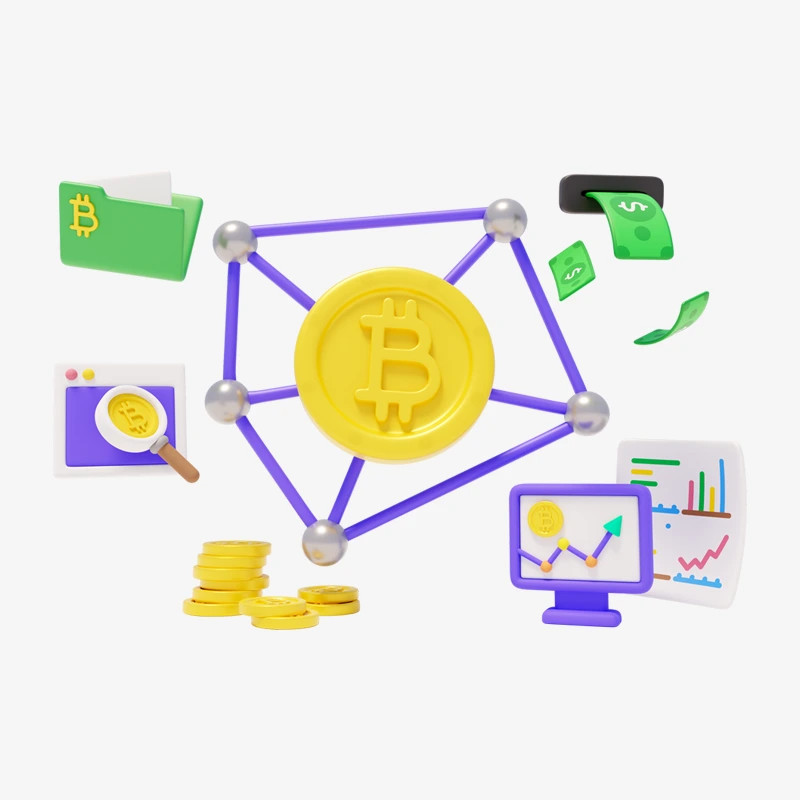
Demystifying Token Standards: A Beginner's Guide to Finding the Right Fit for Your Blockchain Project
Starting a blockchain project can feel overwhelming with all the technical decisions you need to make. But experienced folks in the space know one of the most important choices is picking the right token standard. This will shape what your token can do and how it works within the blockchain ecosystem.So how do you wrap your head around choosing as a blockchain newbie? This guide aims to walk through the key considerations in straightforwardly help you find the optimal standard for your project goals.Introduction to Token StandardsEssentiallyToken Standards are rules and functions that enable tokens to operate on a blockchain network. The ERC-20 standard lays out how to create fungible tokens on Ethereum. Fungible just means each token is identical and interchangeable, like dollars. The ERC-721 standard defines how to build non-fungible tokens (NFTs) with unique attributes. Think of them like rare collectibles.Overview of Standards on Different BlockchainsNow different blockchains have their specialized standards based on their capabilities. Ethereum has robust options like ERC-20, ERC-721, ERC-1155 and more. Binance Smart Chain copies Ethereum’s style with standards like BEP-20 and BEP-721. Other players like Cardano, Polkadot, Tron, and Solana - have all customized standards optimized for their networks.How to Choose the Right Standard - Step-by-StepSo where do you start in picking the right one? Here’s a step-by-step approach: Project Requirements Assessment: First, reflect on your project’s goals and needs. Are you looking to create a utility token that can be traded interchangeably? Or unique digital collectibles? Outlining core requirements like that gives you direction. Interoperability Needs: Next, think about if you need to interact with other blockchains. For example, if you want users to easily trade tokens across different exchanges, standards like TRC-20 or BEP-20 enable better cross-chain abilities. Ecosystem and Community Support: Do some research on which ecosystem best aligns with your project’s path. Ethereum has rich developer resources, tools, and educational materials to leverage. But for some use cases, a newer ecosystem like Solana focused on speed may suit you better. Community Engagement: Evaluate each standard’s community support. An engaged community actively building, communicating, and sharing helpful materials can really uplift your project’s experience. Future-Proofing and Evolution: Consider future-proofing too. More advanced standards like ERC-777 have cool features like meta transactions that you may want down the road. Newer ones are still maturing so do your homework. Platform Considerations: Remember that each blockchain has unique capabilities around fees, transaction speeds, security, etc. Make sure the one you choose matches your technical needs. Consult with Experts: If you’re still unsure, talk to blockchain experts. Their experience can help connect the dots on which standard checks all your boxes.Let’s solidify this with a few real-world examples:Say you’re creating a decentralized crypto exchange. You’ll need a fungible token for trading between users, so ERC-20 or BEP-20 would fit. But you also want users to easily trade across other exchanges. So opting for cross-compatible standards like BEP-20 or TRC-20 makes sense.Alternatively, if you're building a platform for artists to mint digital collectibles, you'll want to prioritize NFT functionality. ERC-721 is a good match here since Ethereum already has a thriving NFT ecosystem.Or maybe you're developing an NFT trading card game that requires unique tokenization for individual cards but also fungible tokens for in-game currency. ERC-1155 supports both NFTs and fungible tokens in one standard - very handy!As you can see, really evaluating your project’s needs and researching your options is crucial for identifying the right token standard. The blockchain space changes rapidly so take the time to fully understand your project before committing. And don’t hesitate to pick the brains of experts like the team at RWaltz - their experienced perspectives can illuminate things you may have overlooked.While the array of token standards seems overwhelming at first, breaking down your project goals methodically will reveal the perfect choice. The standard you select lays the foundation for your product. Put in the legwork early on to make an informed decision - it’ll pay off as your project grows and gains users. And partner with seasoned teams who can steer you toward the optimal standard for your project’s specific needs.If you're seeking professional guidance and expertise in Token Development services, our experienced team is here to assist you in making the most informed decisions for your blockchain project. Feel free to reach out to us for tailored advice and support on your tokenization journey.
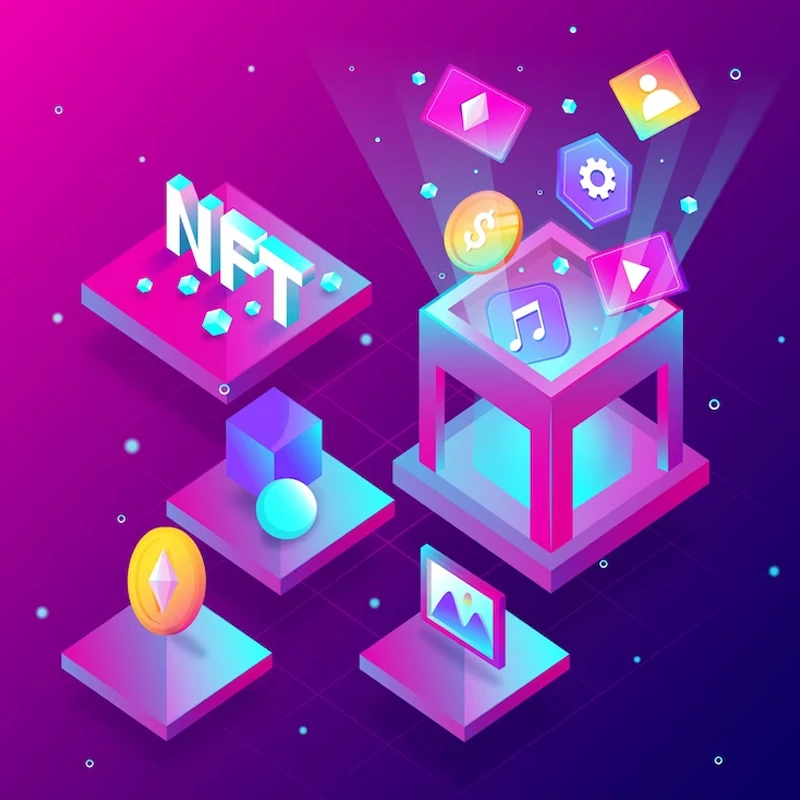
250+ Gaming NFT Ideas to Engage the Users
Non-fungible tokens (NFTs) have exploded in popularity over the last couple of years, especially in the gaming industry. Major gaming companies and indie developers are rushing to incorporate NFTs into games as players seek to truly own unique in-game assets. NFTs represent ownership of digital items like character skins, weapons, real estate parcels, and more. But coming up with fresh gaming NFT ideas that resonate with players requires strategic thinking. In this post, we’ll explore innovative gaming NFT ideas and opportunities to consider.From exclusive collectibles to customized creations, explore fresh ways to reward players and boost engagement through non-fungible tokens Ownership and Scarcity: NFTs grant gamers true ownership of in-game assets, fostering a sense of rarity and exclusivity, which can lead to increased player engagement and value perception. Interoperability and Cross-Game Utility: NFTs can be utilized across multiple games, allowing players to carry their assets and achievements from one game to another, creating a seamless gaming experience. Player-Driven Economies: NFT-enabled gaming platforms empower players to create, buy, and sell in-game assets, fostering player-driven economies that can stimulate engagement and create a sense of entrepreneurship. Gamified Collectibles: Introducing NFT-based collectibles, such as character skins, weapons, and accessories, encourages players to engage in specific activities or challenges, driving gameplay and competition. Exclusive Events and Rewards: NFTs can serve as rewards for completing in-game achievements or participating in special events, incentivizing users to immerse themselves further in the gaming world. Limited Edition Content: Offering limited edition NFTs with unique attributes can drive anticipation and excitement among players, boosting engagement and participation in time-sensitive activities. Collaborative Creation: NFTs enable the collaborative creation of in-game content by players, including custom levels, mods, and virtual real estate, fostering a strong sense of community and shared ownership. Celebrity Partnerships: Partnering with celebrities or influencers to release exclusive NFTs can attract new players and create buzz, expanding the user base and increasing engagement. Real-World Value: The ability to trade NFTs on external marketplaces can attract collectors and investors, adding a layer of real-world value to in-game assets and increasing engagement. Limited-Time Events: Hosting time-limited NFT events, where players can earn or purchase unique assets, can create a sense of urgency and drive consistent user participation. Dynamic Gameplay Mechanics: NFTs can introduce dynamic gameplay mechanics, where the attributes of in-game assets can influence player performance, strategy, and outcomes. Enhanced Social Features: Integrating NFTs with social features, such as gifting or trading assets with friends, can foster a sense of camaraderie and social interaction among players. Player-Centric Monetization: NFTs allow gamers to monetize their skills and time investment by selling valuable assets, providing an additional incentive for engagement and dedication. Localized Events and NFTs: Creating region-specific NFTs or events can cater to the preferences of different player communities, increasing engagement among diverse user groups. Lore and Storytelling: NFTs can be tied to the game's lore and storytelling, enticing players to uncover hidden narratives and explore the game's world in-depth. NFT-Backed Competitions: Hosting competitive events where players wager or stake NFTs can amplify the player engagement, turning gameplay into a high-stakes, immersive experience. Dynamic Crafting Systems: Introducing NFT-based crafting systems, where players combine assets to create unique items, adds a layer of complexity and strategic thinking to the gaming experience. Seasonal and Thematic NFTs: Releasing NFTs that align with seasonal themes or game updates can maintain user interest over time and encourage continuous engagement. Virtual Land Ownership: Implementing NFT-based virtual land ownership can stimulate player creativity and collaboration, driving engagement through user-generated content. In-Game Governance: Allowing NFT holders to participate in decision-making processes regarding game updates or changes can empower players and strengthen their connection to the game. Emergent Gameplay Possibilities: NFTs can unlock emergent gameplay possibilities, where players discover new strategies or interactions through the unique attributes of their assets. Charitable Initiatives: Introducing limited edition NFTs tied to charitable initiatives can not only engage players but also contribute positively to real-world causes. Educational NFTs: Using NFTs to offer educational content, tutorials, or guides can incentivize players to learn and improve their skills, enhancing engagement and retention. Personalized Avatars and Customization: NFTs allow for highly personalized avatars and customization options, encouraging players to express their individuality and engage with the game on a deeper level. Augmented Reality (AR) Integration: Integrating NFTs with AR technology can create unique, interactive experiences that bridge the gap between the virtual and physical worlds, driving user engagement. Player-Generated Challenges: Allowing players to create and share challenges or quests using NFTs can foster a sense of community and competition, encouraging ongoing engagement. Virtual Fashion and Lifestyle: NFTs can introduce virtual fashion and lifestyle elements, such as clothing, accessories, and virtual spaces, allowing players to curate their digital personas and enhancing engagement. Localized NFT Economies: Creating localized NFT economies based on specific regions or cultures can cater to diverse player preferences and amplify engagement within targeted communities. Time-Limited NFT Events: Hosting time-limited NFT events, auctions, or sales can create a sense of urgency and exclusivity, encouraging players to participate actively during specific periods. NFT-Backed Tournaments: Organizing tournaments where NFTs act as rewards or entry tokens can boost competitive engagement and drive participation among skilled players. Integrated Blockchain Mini-Games: Incorporating mini-games or challenges that utilize blockchain technology and NFTs can diversify gameplay and maintain player interest. Dynamic Narrative Choices: NFTs can influence the branching narratives and choices within the game, encouraging players to explore different paths and enhancing replayability. VIP and Loyalty Programs: Rewarding long-term players with exclusive NFTs as part of VIP or loyalty programs can foster a strong sense of dedication and continuous engagement. Dynamic NFT Events: Introducing NFT events that respond to real-world events or trends can create a dynamic and relevant gaming experience that resonates with players. Player-Centric Marketplaces: Implementing NFT marketplaces where players can easily buy, sell, and trade assets can create a vibrant ecosystem that encourages engagement and interactions. NFT Challenges and Quests: Incorporating NFT-based challenges and quests within the game can prompt players to explore different aspects of the game world and interact with diverse content. Live NFT Showcases: Hosting live showcases or events where players can exhibit their rare or unique NFT assets can drive community engagement and create a sense of prestige. NFT-Enhanced Virtual Events: Using NFTs to enhance virtual events, such as in-game concerts or exhibitions, can draw players into immersive experiences and amplify engagement. Player-Generated Content Marketplace: Creating a marketplace where players can sell their self-generated NFT-based content, such as artwork or mods, can incentivize creativity and deepen engagement. Cross-Platform NFT Integration: Enabling NFTs to be seamlessly integrated across different gaming platforms and devices can broaden player engagement and accessibility. NFT-Enabled Achievements: Assigning NFTs as rewards for completing challenging in-game achievements can motivate players to strive for excellence and maintain engagement. Personalized Storylines: NFTs can introduce personalized storylines and interactions based on a player's acquired assets, creating a tailored and immersive gameplay experience. Seasonal NFT Challenges: Offering seasonal NFT challenges or competitions can encourage players to participate actively during specific times, injecting freshness and excitement into the gaming environment. Community-Driven NFT Events: Involving the gaming community in the creation and execution of NFT events can enhance player engagement and foster a sense of ownership. Evolving NFT Mechanics: Implementing NFTs with evolving attributes that change over time or based on player actions can intrigue players and incentivize continuous engagement. NFT Leaderboards and Rankings: Integrating NFT-based leaderboards and rankings can spark healthy competition among players, driving them to improve and engage more deeply with the game. Narrative-Driven NFTs: Designing NFTs with embedded narratives or lore can captivate players, enticing them to explore the game world and uncover hidden stories. NFT-Infused Challenges: Designing challenges or quests that require the use of specific NFT assets can introduce a layer of strategy and decision-making, enhancing player engagement. Time Capsule NFTs: Offering time capsule NFTs that unlock unique content or benefits after a certain period can encourage players to remain engaged over the long term. Interactive NFT Auctions: Hosting interactive NFT auctions within the game can generate excitement, encourage player participation, and create memorable in-game events. Dynamic NFT Ecosystem: Designing an evolving NFT ecosystem with regular updates, additions, and events can ensure a continuous stream of engaging content for players. NFT-Powered Social Features: Enabling players to showcase their NFT assets in social spaces within the game can foster a sense of community and create opportunities for interaction. Emerging Gameplay Strategies: NFTs can introduce emergent gameplay strategies that require players to adapt and evolve their tactics based on the attributes of their assets. NFT-Driven Lore Expansion: Using NFTs to expand the game's lore and world-building can pique player curiosity and prompt them to delve deeper into the game's narrative. NFT-Based Time Trials: Introducing NFT-based time trials or challenges where players use specific assets to compete for records can create an engaging competitive environment. Localized NFT Lore: Creating region-specific NFTs with unique lore and significance can resonate with players from different cultures and backgrounds, driving engagement. Limited Edition NFT Quests: Designing limited edition NFT quests with unique rewards can create a sense of urgency and anticipation, motivating players to participate actively. NFT-Enhanced Mini-Games: Introducing mini-games or activities that utilize NFT assets can diversify gameplay and provide players with new avenues for engagement. Integrated NFT Storytelling: Weaving NFT-based storytelling elements into the game's main narrative can captivate players and encourage them to explore the game's lore. Exclusive NFT Partnerships: Collaborating with renowned artists or brands to release exclusive NFTs can attract attention, elevate the game's status, and drive engagement. NFT-Infused Competitions: Hosting NFT-powered competitions, where players wager or stake assets, can elevate the competitive intensity and engagement within the gaming community. Dynamic NFT Market Dynamics: Implementing NFT market dynamics that mirror real-world supply and demand can create an authentic and engaging trading experience for players. Localized NFT Events: Tailoring NFT events to specific geographic regions or cultural celebrations can foster a sense of inclusivity and encourage participation. NFT-Driven Puzzles: Designing puzzles or mysteries that require the use of NFT assets to unlock solutions can engage players' problem-solving skills and intrigue. Time-Limited NFT Challenges: Introducing time-limited NFT challenges that align with special occasions or milestones can generate excitement and attract player participation. NFT Story Branching: NFTs can impact the branching paths and outcomes of the game's narrative, inspiring players to explore different choices and replicability. NFT Social Competitions: Organizing social competitions where players showcase their NFT assets in creative ways can foster community engagement and interaction. Interactive NFT Cosmetics: Offering interactive NFT cosmetics that respond to player actions or emotions can create a unique and captivating visual experience. NFT-Powered Leaderboards: Integrating NFT-powered leaderboards that display rare or powerful assets can motivate players to strive for excellence and showcase their achievements. Dynamic NFT Trading: Introducing dynamic trading mechanics for NFT assets, such as auctions, bids, or peer-to-peer exchanges, can inject excitement and player interaction. Collaborative NFT Quests: Designing collaborative quests that require players to pool their NFT assets and skills can foster teamwork and encourage engagement. NFT-Enabled Personalization: Allowing players to personalize their gaming experience using NFT assets, such as customizable environments or avatars, can deepen engagement. Localized NFT Challenges: Creating localized NFT challenges that resonate with specific player demographics can drive engagement and cater to diverse interests. Dynamic NFT Lore Expansion: Releasing periodic NFTs that expand the game's lore and backstory can captivate players and prompt them to delve into the narrative. NFT-Enhanced Roleplaying: Using NFTs to enhance roleplaying experiences, such as unique character traits or abilities, can immerse players in their chosen roles and enhance engagement. Real-Time NFT Events: Hosting real-time NFT events or auctions that occur within the game environment can create a sense of urgency and encourage immediate participation. NFT-Gated Content: Introducing NFT-gated content or areas within the game that require specific assets for access can incentivize players to collect and engage with NFTs. NFT-Backed Social Challenges: Launching NFT-backed social challenges or trends within the gaming community can foster player engagement and spark creativity. NFT-Enhanced Exploration: Using NFTs to unlock hidden or exclusive areas within the game world can motivate players to explore and interact with different environments. Integrated NFT Rewards: Offering NFT rewards for completing in-game tasks or milestones can incentivize players to progress and engage with the game's mechanics. Emerging Competitive Strategies: NFTs can introduce emergent competitive strategies that require players to adapt their tactics based on evolving asset attributes. Localized NFT Economy Events: Hosting localized NFT economy events, such as regional marketplaces or auctions, can create tailored engagement opportunities. NFT-Infused Character Progression: Incorporating NFT assets into character progression systems can offer players unique growth paths and incentivize continuous engagement. Interactive NFT Questlines: Designing questlines where players must use specific NFT assets to uncover secrets or solve mysteries can engage players' curiosity and problem-solving skills. NFT Trading Competitions: Organizing trading competitions where players compete to build the most valuable NFT portfolio can foster engagement and strategic thinking. Dynamic NFT Events: Hosting dynamic NFT events that respond to player actions or achievements can create an immersive and rewarding gaming experience. NFT-Enhanced Crafting: Integrating NFTs into crafting systems, where specific assets yield unique item combinations, can encourage experimentation and engagement. NFT-Driven Exploration Challenges: Launching NFT-driven exploration challenges that encourage players to discover hidden treasures or locations can stimulate engagement. Localized NFT Lore Events: Creating NFT lore events that cater to different player communities or regions can spark interest and encourage diverse engagement. NFT-Backed Puzzles: Designing intricate puzzles that require the use of NFT assets to unlock solutions can engage players' critical thinking and problem-solving abilities. Time-Limited NFT Quests: Introducing time-limited NFT quests with exclusive rewards can generate a sense of urgency and motivate players to engage promptly. NFT-Powered Social Showcases: Allowing players to showcase their NFT assets in social spaces within the game can foster community engagement and interaction. Dynamic NFT Auctions: Hosting dynamic NFT auctions within the game environment can create excitement, encourage participation, and drive in-game events. Localized NFT Challenges: Designing challenges that cater to specific player demographics or cultural preferences can enhance engagement and inclusivity. NFT-Enhanced Progression: Using NFTs to enhance character progression systems, such as unlocking unique abilities or attributes, can incentivize ongoing engagement. Emergent NFT Strategies: NFTs can introduce emergent strategies that encourage players to adapt their tactics based on evolving asset attributes and interactions. Localized NFT Economy: Creating localized NFT economies or marketplaces that reflect regional preferences can foster engagement within targeted player communities. NFT-Infused Exploration: Using NFTs to unlock hidden areas or storylines within the game can motivate players to explore and engage with the game's content. Integrated NFT Competitions: Organizing competitions where players use NFT assets to compete for records or achievements can elevate engagement and competition. NFT-Enhanced Crafting Challenges: Introducing NFT-based crafting challenges that require specific assets to create unique items can stimulate engagement and creativity. Dynamic NFT Questlines: Designing questlines that dynamically evolve based on NFT assets used can create personalized and engaging narrative experiences. NFT-Backed Community Events: Launching NFT-backed events or competitions that encourage player creativity and interaction can enhance community engagement. Localized NFT Exploration: Creating NFT-based exploration challenges that resonate with specific player demographics or cultures can drive engagement. NFT-Powered Cosmetics: Using NFTs to offer interactive cosmetics that respond to player actions or emotions can create captivating visual experiences. Dynamic NFT Trading Mechanics: Implementing dynamic trading mechanics for NFT assets, such as live auctions or evolving marketplaces, can enhance engagement. Collaborative NFT Challenges: Designing challenges that require players to collaborate using NFT assets can foster teamwork and strengthen player engagement. Time-Limited NFT Rewards: Introducing time-limited NFT rewards for achieving specific milestones or in-game accomplishments can incentivize engagement. Interactive NFT Auctions: Hosting interactive NFT auctions or bidding events can generate excitement, encourage participation, and create memorable experiences. Localized NFT Events: Designing NFT events that align with local festivities or cultural celebrations can foster player engagement and inclusivity. NFT-Driven Puzzles: Incorporating NFT assets into in-game puzzles or mysteries can intrigue players and encourage exploration and critical thinking. Emergent NFT Storylines: NFTs can influence the branching paths and outcomes of the game's narrative, offering players dynamic storytelling experiences. NFT Social Competitions: Organizing social competitions or challenges where players showcase their NFT assets creatively can enhance community engagement. Integrated NFT Cosmetics: Offering NFT cosmetics that players can customize and interact with can enhance the visual experience and drive engagement. Localized NFT Challenges: Creating NFT challenges that cater to specific player preferences or regional interests can stimulate engagement within targeted communities. NFT-Enhanced Exploration: Using NFTs to unlock hidden or exclusive areas within the game world can encourage players to explore and engage with diverse environments. Player-Centric NFT Rewards: Offering NFT rewards for player-generated content, such as fan art or mods, can foster engagement and creative contributions. Dynamic NFT Events: Hosting dynamic NFT events or auctions that respond to player actions can create a sense of real-time immersion and engagement. NFT-Backed Personalization: Using NFT assets to personalize in-game avatars, environments, or items can deepen player engagement and customization. Emerging NFT Strategies: NFTs can introduce emerging competitive strategies where players adapt tactics based on evolving asset attributes. Localized NFT Economy: Implementing localized NFT economies or marketplaces that cater to specific player communities can encourage engagement. NFT-Driven Exploration: Creating NFT-driven exploration challenges that motivate players to discover hidden treasures or secrets can enhance engagement. NFT-Powered Puzzles: Incorporating NFT assets into puzzles or enigmas that require their use can stimulate player curiosity and problem-solving skills. NFT Trading Competitions: Organizing NFT trading competitions where players build valuable portfolios can foster engagement and strategic thinking. Dynamic NFT Events: Hosting dynamic NFT events that adapt to player actions or achievements can create an immersive and rewarding gaming experience. Localized NFT Lore Events: Creating NFT lore events tied to specific cultures or regions can resonate with players and encourage exploration. NFT-Enhanced Roleplaying: Using NFTs to enhance roleplaying experiences, such as unique character traits or abilities, can immerse players in their chosen roles. Real-Time NFT Events: Hosting real-time NFT events or auctions within the game world can create urgency and encourage immediate player participation. NFT-Gated Content: Introducing NFT-gated content or areas within the game can incentivize players to collect assets and engage with the game. NFT-Backed Social Challenges: Launching NFT-backed social challenges or trends can encourage community engagement and spark creative interactions. Interactive NFT Questlines: Designing questlines where players use specific NFT assets to unlock secrets or solve mysteries can engage curiosity. Time-Limited NFT Quests: Introducing time-limited NFT quests with unique rewards can generate urgency and motivate players to engage promptly. NFT-Driven Exploration Challenges: Launching NFT-driven exploration challenges that motivate players to uncover hidden treasures can stimulate engagement. Localized NFT Lore Events: Creating NFT lore events that cater to different player communities or regions can encourage exploration and engagement. NFT-Backed Puzzles: Designing intricate puzzles that require the use of NFT assets can engage players' critical thinking and problem-solving abilities. Emergent Competitive Strategies: NFTs can introduce emergent competitive strategies where players adapt their tactics based on evolving asset attributes. Localized NFT Economy: Creating localized NFT economies or marketplaces that reflect regional preferences can foster engagement within targeted communities. NFT-Infused Exploration: Using NFTs to unlock hidden or exclusive areas within the game can motivate players to explore and engage with the game world. Integrated NFT Rewards: Offering NFT rewards for completing in-game tasks can incentivize players to progress and engage with the game's mechanics. Player-Driven NFT Economy: Allowing players to create and sell NFT-based content, such as custom skins or mods, can foster engagement and entrepreneurship. Dynamic NFT Storytelling: Designing narrative arcs that dynamically evolve based on player interactions with NFT assets can create engaging storylines. Localized NFT Challenges: Launching NFT challenges tailored to specific player communities or cultural events can resonate and encourage engagement. NFT-Enhanced Role-play: Using NFTs to enhance roleplaying experiences, such as unique character traits or dialogue options, can immerse players further. Real-Time NFT Events: Hosting real-time NFT events or auctions that occur within the game environment can create excitement and encourage participation. Integrated NFT Collectibles: Incorporating NFT-based collectibles, such as character skins or emotes, can drive engagement and offer players customization options. Localized NFT Economy: Creating localized NFT economies or marketplaces can cater to player preferences and encourage engagement within specific regions. NFT-Infused Challenges: Designing challenges that require specific NFT assets to complete can encourage players to strategically use their collected items. Dynamic NFT Lore Expansion: Introducing NFT lore events or additions that expand the game's narrative can intrigue players and foster deeper engagement. Player-Generated NFT Content: Allowing players to create and trade NFT-based content, such as user-generated levels or items, can boost engagement. Localized NFT Quests: Designing localized NFT quests that reflect regional interests or traditions can resonate with players and stimulate engagement. NFT-Enhanced Exploration: Using NFTs to unlock hidden secrets or unique interactions within the game can motivate players to explore and engage. Emergent NFT Strategies: NFTs can introduce emergent competitive strategies where players adapt tactics based on evolving asset attributes. NFT-Backed Social Challenges: Organizing NFT-backed social challenges that encourage player interaction and creativity can enhance community engagement. Integrated NFT Cosmetics: Offering NFT cosmetics that players can customize and interact with can enhance the visual experience and drive engagement. Localized NFT Challenges: Launching NFT challenges tied to local events or cultural celebrations can resonate with players and encourage participation. Dynamic NFT Trading Mechanics: Implementing dynamic trading mechanics for NFT assets, such as live auctions, can enhance engagement and interaction. Collaborative NFT Quests: Designing quests that require players to collaborate using NFT assets can foster teamwork and encourage engagement. Time-Limited NFT Rewards: Introducing time-limited NFT rewards for achieving specific milestones can incentivize engagement and create excitement. Interactive NFT Auctions: Hosting interactive NFT auctions or bidding events can generate excitement, encourage participation, and create memorable experiences. Localized NFT Events: Designing NFT events that align with local festivities or cultural traditions can foster player engagement and inclusivity. NFT-Driven Puzzles: Incorporating NFT assets into in-game puzzles or enigmas can intrigue players and encourage exploration and problem-solving. Emergent NFT Storylines: NFTs can influence the branching paths and outcomes of the game's narrative, offering players dynamic storytelling experiences. NFT Social Competitions: Organizing social competitions or challenges where players showcase their NFT assets creatively can enhance community engagement. Integrated NFT Cosmetics: Offering NFT cosmetics that players can customize and interact with can enhance the visual experience and drive engagement. Localized NFT Challenges: Launching NFT challenges tied to local events or cultural celebrations can resonate with players and encourage participation. Dynamic NFT Trading Mechanics: Implementing dynamic trading mechanics for NFT assets, such as live auctions, can enhance engagement and interaction. Collaborative NFT Quests: Designing quests that require players to collaborate using NFT assets can foster teamwork and encourage engagement. Time-Limited NFT Rewards: Introducing time-limited NFT rewards for achieving specific milestones can incentivize engagement and create excitement. Interactive NFT Auctions: Hosting interactive NFT auctions or bidding events can generate excitement, encourage participation, and create memorable experiences. Localized NFT Events: Designing NFT events that align with local festivities or cultural traditions can foster player engagement and inclusivity. NFT-Driven Puzzles: Incorporating NFT assets into in-game puzzles or enigmas can intrigue players and encourage exploration and problem-solving. Emergent NFT Storylines: NFTs can influence the branching paths and outcomes of the game's narrative, offering players dynamic storytelling experiences. NFT Social Competitions: Organizing social competitions or challenges where players showcase their NFT assets creatively can enhance community engagement. Integrated NFT Cosmetics: Offering NFT cosmetics that players can customize and interact with can enhance the visual experience and drive engagement. Localized NFT Challenges: Launching NFT challenges tied to local events or cultural celebrations can resonate with players and encourage participation. Dynamic NFT Trading Mechanics: Implementing dynamic trading mechanics for NFT assets, such as live auctions, can enhance engagement and interaction. Collaborative NFT Quests: Designing quests that require players to collaborate using NFT assets can foster teamwork and encourage engagement. Time-Limited NFT Rewards: Introducing time-limited NFT rewards for achieving specific milestones can incentivize engagement and create excitement. Interactive NFT Auctions: Hosting interactive NFT auctions or bidding events can generate excitement, encourage participation, and create memorable experiences. Localized NFT Events: Designing NFT events that align with local festivities or cultural traditions can foster player engagement and inclusivity. NFT-Driven Puzzles: Incorporating NFT assets into in-game puzzles or enigmas can intrigue players and encourage exploration and problem-solving. Emergent NFT Storylines: NFTs can influence the branching paths and outcomes of the game's narrative, offering players dynamic storytelling experiences. NFT Social Competitions: Organizing social competitions or challenges where players showcase their NFT assets creatively can enhance community engagement. Localized NFT Challenges: Launching NFT challenges tied to local events or cultural celebrations can resonate with players and encourage participation. Dynamic NFT Trading Mechanics: Implementing dynamic trading mechanics for NFT assets, such as live auctions, can enhance engagement and interaction. Collaborative NFT Quests: Designing quests that require players to collaborate using NFT assets can foster teamwork and encourage engagement. Time-Limited NFT Rewards: Introducing time-limited NFT rewards for achieving specific milestones can incentivize engagement and create excitement. Interactive NFT Auctions: Hosting interactive NFT auctions or bidding events can generate excitement, encourage participation, and create memorable experiences. Localized NFT Events: Designing NFT events that align with local festivities or cultural traditions can foster player engagement and inclusivity. NFT-Driven Puzzles: Incorporating NFT assets into in-game puzzles or enigmas can intrigue players and encourage exploration and problem-solving. Emergent NFT Storylines: NFTs can influence the branching paths and outcomes of the game's narrative, offering players dynamic storytelling experiences. NFT Social Competitions: Organizing social competitions or challenges where players showcase their NFT assets creatively can enhance community engagement. Integrated NFT Cosmetics: Offering NFT cosmetics that players can customize and interact with can enhance the visual experience and drive engagement. Localized NFT Challenges: Launching NFT challenges tied to local events or cultural celebrations can resonate with players and encourage participation. Dynamic NFT Trading Mechanics: Implementing dynamic trading mechanics for NFT assets, such as live auctions, can enhance engagement and interaction. Collaborative NFT Quests: Designing quests that require players to collaborate using NFT assets can foster teamwork and encourage engagement. Time-Limited NFT Rewards: Introducing time-limited NFT rewards for achieving specific milestones can incentivize engagement and create excitement. Interactive NFT Auctions: Hosting interactive NFT auctions or bidding events can generate excitement, encourage participation, and create memorable experiences. Localized NFT Events: Designing NFT events that align with local festivities or cultural traditions can foster player engagement and inclusivity. NFT-Driven Puzzles: Incorporating NFT assets into in-game puzzles or enigmas can intrigue players and encourage exploration and problem-solving. Emergent NFT Storylines: NFTs can influence the branching paths and outcomes of the game's narrative, offering players dynamic storytelling experiences. NFT Social Competitions: Organizing social competitions or challenges where players showcase their NFT assets creatively can enhance community engagement. Localized NFT Challenges: Launching NFT challenges tied to local events or cultural celebrations can resonate with players and encourage participation. Dynamic NFT Trading Mechanics: Implementing dynamic trading mechanics for NFT assets, such as live auctions, can enhance engagement and interaction. Collaborative NFT Quests: Designing quests that require players to collaborate using NFT assets can foster teamwork and encourage engagement. Time-Limited NFT Rewards: Introducing time-limited NFT rewards for achieving specific milestones can incentivize engagement and create excitement. Interactive NFT Auctions: Hosting interactive NFT auctions or bidding events can generate excitement, encourage participation, and create memorable experiences. Localized NFT Events: Designing NFT events that align with local festivities or cultural traditions can foster player engagement and inclusivity. NFT-Driven Puzzles: Incorporating NFT assets into in-game puzzles or enigmas can intrigue players and encourage exploration and problem-solving. Emergent NFT Storylines: NFTs can influence the branching paths and outcomes of the game's narrative, offering players dynamic storytelling experiences. NFT Social Competitions: Organizing social competitions or challenges where players showcase their NFT assets creatively can enhance community engagement Localized NFT Challenges: Launching NFT challenges tied to local events or cultural celebrations can resonate with players and encourage participation. Dynamic NFT Trading Mechanics: Implementing dynamic trading mechanics for NFT assets, such as live auctions, can enhance engagement and interaction. Collaborative NFT Quests: Designing quests that require players to collaborate using NFT assets can foster teamwork and encourage engagement. Time-Limited NFT Rewards: Introducing time-limited NFT rewards for achieving specific milestones can incentivize engagement and create excitement. Interactive NFT Auctions: Hosting interactive NFT auctions or bidding events can generate excitement, encourage participation, and create memorable experiences. Localized NFT Events: Designing NFT events that align with local festivities or cultural traditions can foster player engagement and inclusivity. NFT-Driven Puzzles: Incorporating NFT assets into in-game puzzles or enigmas can intrigue players and encourage exploration and problem-solving. Emergent NFT Storylines: NFTs can influence the branching paths and outcomes of the game's narrative, offering players dynamic storytelling experiences. NFT Social Competitions: Organizing social competitions or challenges where players showcase their NFT assets creatively can enhance community engagement. Localized NFT Challenges: Launching NFT challenges tied to local events or cultural celebrations can resonate with players and encourage participation. Dynamic NFT Trading Mechanics: Implementing dynamic trading mechanics for NFT assets, such as live auctions, can enhance engagement and interaction. Collaborative NFT Quests: Designing quests that require players to collaborate using NFT assets can foster teamwork and encourage engagement. Time-Limited NFT Rewards: Introducing time-limited NFT rewards for achieving specific milestones can incentivize engagement and create excitement. Interactive NFT Auctions: Hosting interactive NFT auctions or bidding events can generate excitement, encourage participation, and create memorable experiences. Localized NFT Events: Designing NFT events that align with local festivities or cultural traditions can foster player engagement and inclusivity. NFT-Driven Puzzles: Incorporating NFT assets into in-game puzzles or enigmas can intrigue players and encourage exploration and problem-solving. Emergent NFT Storylines: NFTs can influence the branching paths and outcomes of the game's narrative, offering players dynamic storytelling experiences. NFT Social Competitions: Organizing social competitions or challenges where players showcase their NFT assets creatively can enhance community engagement. Localized NFT Challenges: Launching NFT challenges tied to local events or cultural celebrations can resonate with players and encourage participation. Dynamic NFT Trading Mechanics: Implementing dynamic trading mechanics for NFT assets, such as live auctions, can enhance engagement and interaction. Collaborative NFT Quests: Designing quests that require players to collaborate using NFT assets can foster teamwork and encourage engagement. Time-Limited NFT Rewards: Introducing time-limited NFT rewards for achieving specific milestones can incentivize engagement and create excitement. Interactive NFT Auctions: Hosting interactive NFT auctions or bidding events can generate excitement, encourage participation, and create memorable experiences. Localized NFT Events: Designing NFT events that align with local festivities or cultural traditions can foster player engagement and inclusivity. NFT-Driven Puzzles: Incorporating NFT assets into in-game puzzles or enigmas can intrigue players and encourage exploration and problem-solving. Emergent NFT Storylines: NFTs can influence the branching paths and outcomes of the game's narrative, offering players dynamic storytelling experiences. NFT Social Competitions: Organizing social competitions or challenges where players showcase their NFT assets creatively can enhance community engagement. Localized NFT Challenges: Launching NFT challenges tied to local events or cultural celebrations can resonate with players and encourage participation. Dynamic NFT Trading Mechanics: Implementing dynamic trading mechanics for NFT assets, such as live auctions, can enhance engagement and interaction. Collaborative NFT Quests: Designing quests that require players to collaborate using NFT assets can foster teamwork and encourage engagement. Time-Limited NFT Rewards: Introducing time-limited NFT rewards for achieving specific milestones can incentivize engagement and create excitement. Interactive NFT Auctions: Hosting interactive NFT auctions or bidding events can generate excitement, encourage participation, and create memorable experiences. Localized NFT Events: Designing NFT events that align with local festivities or cultural traditions can foster player engagement and inclusivity. NFT-Driven Puzzles: Incorporating NFT assets into in-game puzzles or enigmas can intrigue players and encourage exploration and problem-solving. Emergent NFT Storylines: NFTs can influence the branching paths and outcomes of the game's narrative, offering players dynamic storytelling experiences. NFT Social Competitions: Organizing social competitions or challenges where players showcase their NFT assets creatively can enhance community engagement. Localized NFT Challenges: Launching NFT challenges tied to local events or cultural celebrations can resonate with players and encourage participation. Dynamic NFT Trading Mechanics: Implementing dynamic trading mechanics for NFT assets, such as live auctions, can enhance engagement and interaction. Collaborative NFT Quests: Designing quests that require players to collaborate using NFT assets can foster teamwork and encourage engagement. Time-Limited NFT Rewards: Introducing time-limited NFT rewards for achieving specific milestones can incentivize engagement and create excitement. Interactive NFT Auctions: Hosting interactive NFT auctions or bidding events can generate excitement, encourage participation, and create memorable experiences. Localized NFT Events: Designing NFT events that align with local festivities or cultural traditions can foster player engagement and inclusivity. NFT-Driven Puzzles: Incorporating NFT assets into in-game puzzles or enigmas can intrigue players and encourage exploration and problem-solving. Emergent NFT Storylines: NFTs can influence the branching paths and outcomes of the game's narrative, offering players dynamic storytelling experiences. NFT Social Competitions: Organizing social competitions or challenges where players showcase their NFT assets creatively can enhance community engagement. Localized NFT Challenges: Launching NFT challenges tied to local events or cultural celebrations can resonate with players and encourage participation. Dynamic NFT Trading Mechanics: Implementing dynamic trading mechanics for NFT assets, such as live auctions, can enhance engagement and interaction. Collaborative NFT Quests: Designing quests that require players to collaborate using NFT assets can foster teamwork and encourage engagement. Time-Limited NFT Rewards: Introducing time-limited NFT rewards for achieving specific milestones can incentivize engagement and create excitement. Interactive NFT Auctions: Hosting interactive NFT auctions or bidding events can generate excitement, encourage participation, and create memorable experiences.NFTs are empowering the next generation of gaming by enabling true digital asset ownership and trading. Players crave opportunities to customize and invest in their gaming experience. By offering unique gaming NFT ideas that provide value, utility, and scarcity, game developers can drive engagement and revenue. However, launching compelling gaming NFTs requires extensive blockchain expertise. Partnering with an experienced NFT development company providing end-to-end NFT marketplace development services is key. With the right gaming NFT strategy, developers can dramatically enhance player enjoyment and loyalty. Contact a top NFT development services provider like RWaltz today to bring your gaming NFT ideas to life.If you are willing to develop the Gaming NFT Marketplace, then RWaltz is here to guide you for end-to-end platform development. RWaltz has good experience in NFT Marketplace Development Services. Feel free to reach out for an on-the-house consultation.
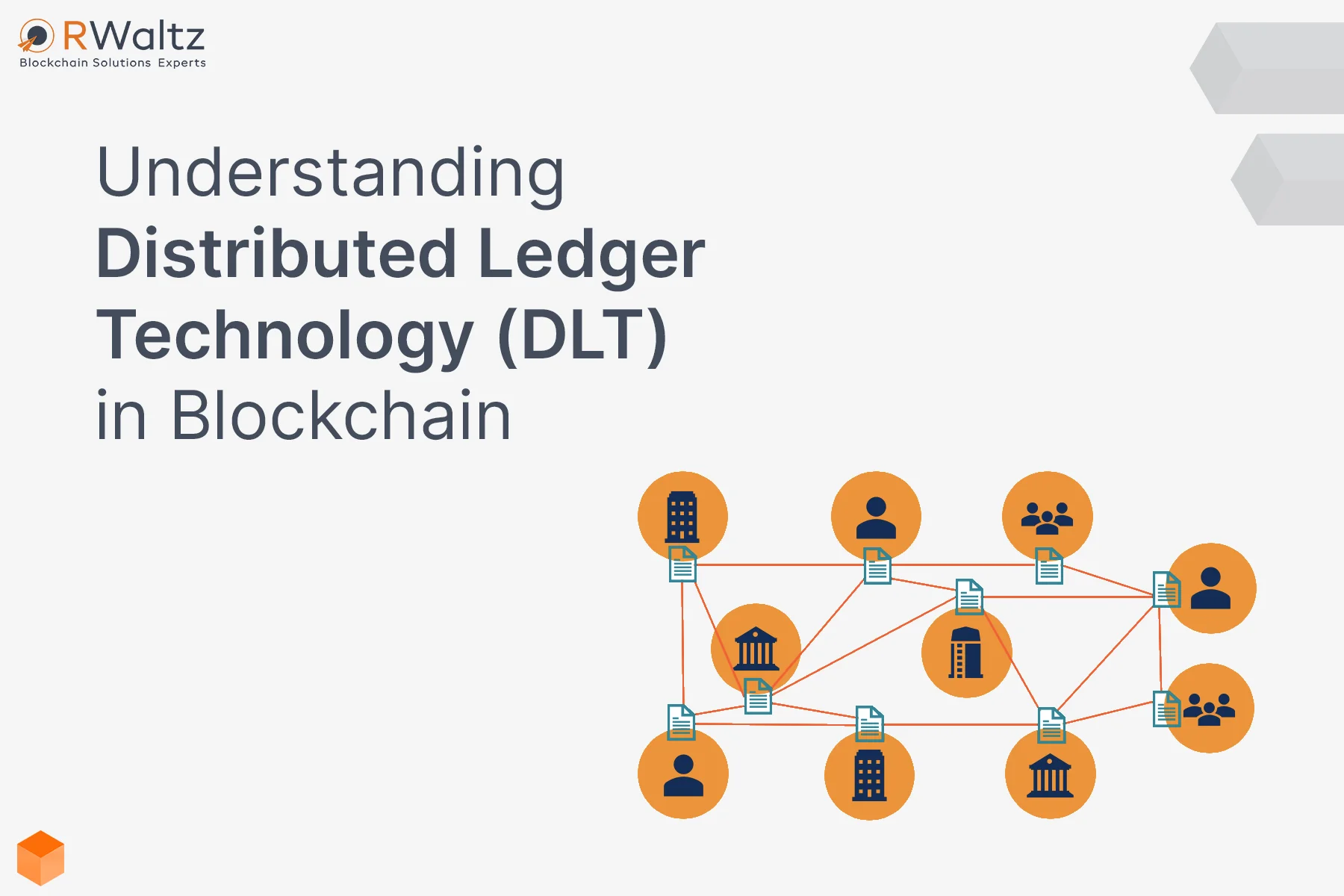
Understanding Distributed Ledger Technology (DLT) in Blockchain
Distributed ledger technology (DLT) is a key component of blockchain and serves as the foundation for recording transactions and data on a decentralized network. DLT allows multiple participants to securely access, verify and update a shared ledger of transactions without the need for a central authority. Let's take a deeper look at how DLT works and its role in enabling blockchain innovations.What is a Distributed Ledger?A distributed ledger is a database that is consensually shared and synchronized across multiple sites, institutions or geographies. It allows transactions to have multiple identical copies maintained on multiple computer nodes in a network. Any changes or additions made to the ledger are reflected and copied to all participants in real-time.Unlike traditional centralized ledgers which rely on a central administrator, distributed ledgers have no central point of data storage or administration. The ledger records are stored in a decentralized manner across the network, eliminating single points of failure. This enhances security, transparency and trust in record keeping.Key Properties of Distributed Ledger TechnologyDecentralization: The ledger is distributed among participants without needing centralized control. This eliminates intermediaries, reduces costs and enhances reliability.Consensus: Changes to the ledger are validated through a consensus mechanism agreed upon by the network participants. This maintains integrity of the shared ledger.Provenance: The ledger provides a chain of custody for transactions, enabling participants to trace the origin and ownership history of assets.Immutability: Once data is recorded on the shared ledger, it cannot be altered retroactively. This creates permanent and tamper-proof records.Finality: Approved transactions are final when consensus is reached and cannot be reversed. This provides transaction certainty.Cryptography: Cryptographic techniques like digital signatures, hashing and Merkle trees secure the ledger contents and validate transactions.Types of Distributed Ledger TechnologyThere are mainly three types of distributed ledger technology: Blockchain: This is the most common form of distributed ledger technology. Transactions are recorded in consecutive blocks which are chained together chronologically to create permanent and immutable records. It enables peer-to-peer transfer of value without intermediaries. Bitcoin is the most well-known application of blockchain. Directed Acyclic Graph (DAG): This uses a DAG data structure to record transactions across multiple channels simultaneously. Unlike blockchain's sequential structure, DAG enables faster transactions and no transaction fees. IOTA and Nano are examples of DAG-based DLT. Hashgraph: This uses a patented gossip protocol that allows nodes in a network to efficiently share transactions via gossip. It offers faster consensus and throughput compared to blockchains. Hedera Hashgraph is a leading hashgraph-based distributed ledger.How Distributed Ledger Technology WorksThe key steps involved in a distributed ledger network include: Initialization: The participating nodes begin by establishing a peer-to-peer network, rules of participation, consensus mechanism, cryptography standards, governance protocols etc. Transaction request: A node requests a transaction like transfer of assets which is digitally signed and broadcast to the network. Validation: Network nodes validate the transaction according to predefined rules. Invalid transactions are rejected. Consensus: The valid transaction is added to a new block or entry which is shared across nodes to confirm its validity via a consensus mechanism. Recording: Once consensus is reached, the approved transaction is timestamped and irreversibly recorded in the shared ledger. Finality: The transaction is complete, altering the states of the participating accounts or assets permanently. Reconciliation: All copies of the ledger are updated and reconciled in real-time across the distributed network.Consensus Models in Distributed Ledger TechnologyConsensus refers to the process by which participants in a distributed ledger agree to validate transactions and record new data. Some common consensus mechanisms include: Proof-of-work - Participants prove through computational work that they have invested resources to validate transactions. Used in Bitcoin. Proof-of-stake - Selects validators based on the stake they hold in the network's assets to validate transactions. Used in Ethereum. Practical Byzantine Fault Tolerance (PBFT) - Enables nodes to reach consensus via voting by exchanging messages between nodes. Used in Hyperledger. Proof-of-Authority - Uses approved validators chosen based on reputation to validate transactions and blocks. Used in private blockchains. Directed Acyclic Graph (DAG) - Enables asynchronous and parallel transaction validation across multiple nodes with no central coordinator. Used in IOTA, Nano.Benefits of Distributed Ledger TechnologyDecentralization - Eliminates central points of failure and the need for intermediaries.Trust - Enhanced security, transparency, and audibility build trust.Efficiency - Faster, low-cost transactions and settlements compared to traditional systems.Reliability - Distributed nature increases resilience against outages or manipulation.Provenance - Maintains immutable history of asset ownership and transactions.Automation - Smart contracts enable complex business rules and workflows to be automated.Tokenization - Assets like contracts or property can be represented as digital tokens.Immutable Records - Information recorded on the shared ledger cannot be altered, deleted, or lost.Use Cases of Distributed Ledger TechnologyFinancial systems - Payments, asset transfers, capital markets, trade finance.Supply chains - Tracking goods movement, certifications, and provenance.Healthcare - Electronic health records, benefits processing, clinical trials.Government - Land registries, identity management, voting systems.Energy - Trading carbon credits, renewable energy certificates (RECs).Media - Digital content ownership and distribution, intellectual property.Real estate - Property transactions, title transfers, landlord-tenant agreements.Legal - Contracts, patents, wills, company registrations.Insurance - Claims processing, know your customer (KYC) processes.Challenges with Distributed Ledger Technology Scalability - Current limits in transaction processing and data storage need to be overcome. Interoperability - Cross-chain interaction and standards need further development. Compliance - Aligning DLT solutions with regulations remains a challenge. Usability - User experience and interfaces need improvement for mass adoption. Energy Use - Proof-of-work consensus is energy intensive. Alternatives need growth. Security - Ensuring resilience to attacks like 51% attacks remains vital. Privacy - Providing user anonymity while meeting compliance needs further work.The Future of Distributed Ledger TechnologyDLT is rapidly evolving with extensive investments in research and development. Areas of expected growth include: Enterprise adoption of distributed ledgers for streamlining business processes and data sharing. Integration of DLT, IoT, AI and machine learning to create intelligent decentralized networks. Cross-chain interoperability and atomic swaps enabling seamless transactions across ledgers. Development of decentralized data storage and cloud solutions to store massive amounts of data. Evolution of consensus protocols and governance models for public distributed ledgers. User-controlled digital identities underpinned by DLT will expand participation. Tokenization of assets like real estate, commodities, intellectual property will increase liquidity. Faster transaction speeds, scalability and energy efficiency will enhance usability. Use of directed acyclic graphs and hashgraphs as high performance alternatives to blockchain. Growth of decentralized finance built on open distributed ledgers.ConclusionDistributed ledger technology provides a revolutionary decentralized approach to record-keeping and transactions compared to traditional centralized accounting systems. By eliminating intermediaries and counterparty risks, DLT enables peer-to-peer transfer of value and facilitates collaboration at unprecedented scale. As blockchain, DAGs, hashgraphs and related innovations continue maturing, DLT promises to transform enterprise systems and business models across industries and reinvent economic coordination.As a leading blockchain development company, RWaltz specializes in leveraging distributed ledger technology to build customized decentralized solutions for clients globally. Connect with our experts to assess how DLT can transform your business!
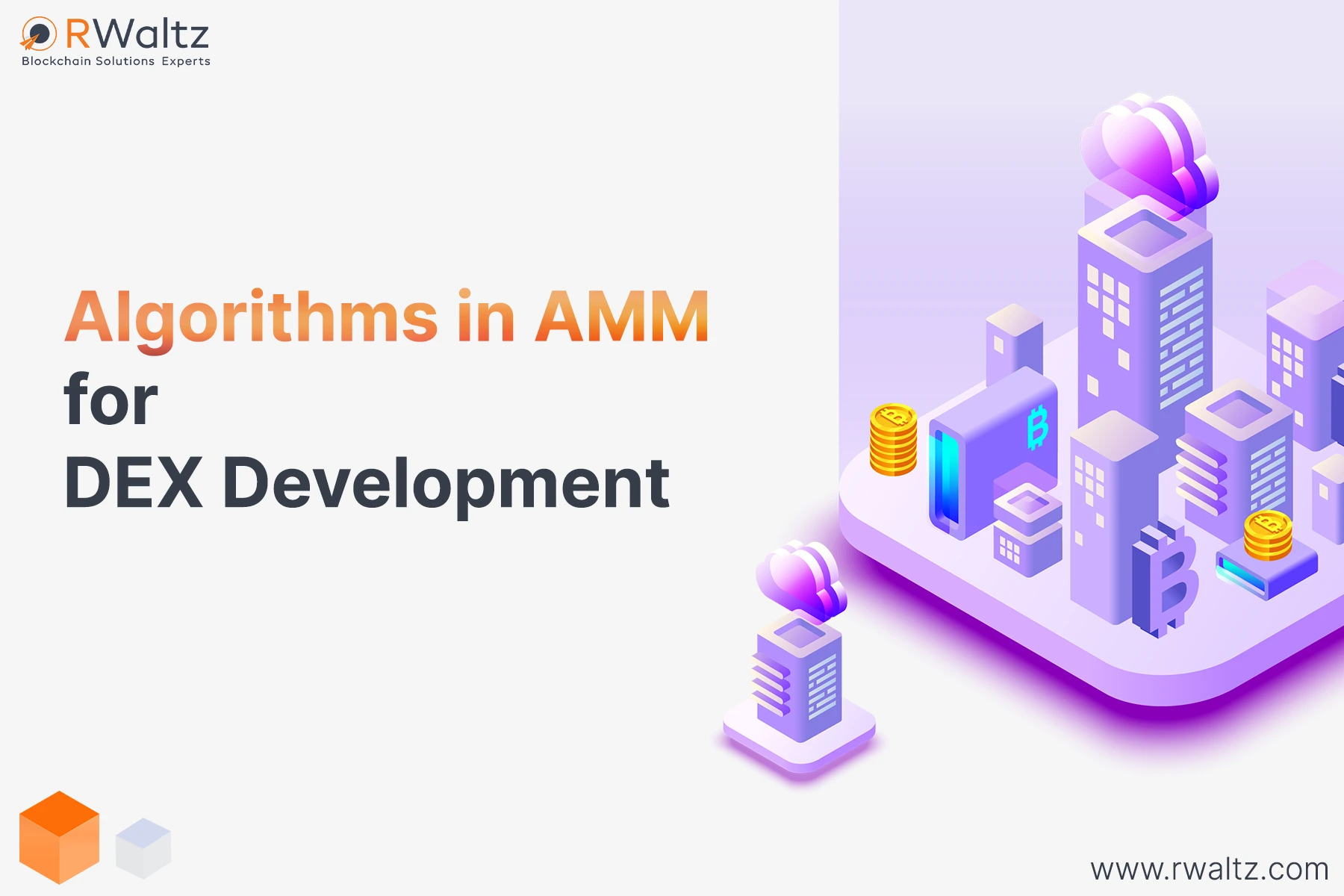
Algorithms in AMM for DEX Development
Decentralized exchanges (DEXs) have become an integral part of the cryptocurrency ecosystem, providing a means of trustless trading without centralized intermediaries. A core component enabling decentralized trading on DEXs is the automated market maker (AMM). AMM algorithms help provide continuous liquidity and price discovery on DEX platforms.In this article, we'll explore key AMM algorithms and how they facilitate decentralized cryptocurrency trading.What is an Automated Market Maker?An automated market maker (AMM) system provides liquidity to a decentralized exchange using a mathematical formula. Unlike traditional order book exchanges, AMMs don't require buyers and sellers to place orders. Instead, liquidity pools are created programmatically.The AMM uses an algorithm to determine asset prices based on the liquidity pool's supply and demand for tokens. This algorithm replaces the order-matching function performed by centralized exchanges.Key Benefits of AMMs: Always provide liquidity, even for low-volume assets No order matching needed Fairer prices determined algorithmically Increased decentralization through trustless tradingPopular AMM AlgorithmsThere are several AMM algorithms, each with its own unique mechanisms for facilitating trading. Let's explore some of the most widely used.Constant Product Market MakerThe constant product market maker (CPMM) is the most common AMM algorithm, used by leading DEXs like Uniswap. It works by maintaining a constant product between the quantities of token pairs in a liquidity pool:x * y = kWhere x and y represent the quantities of tokens X and Y in the pool, and k is a constant.Whenever a trade occurs, the product is maintained by adding or removing liquidity from the pool. This adjusts the relative token prices automatically based on supply and demand.CPMM Benefits: Simple and efficient algorithm Fair token prices based on ratios No external data needed to set pricesCPMM Drawbacks: Prices can fluctuate with large trades Impermanent loss for liquidity providers Overall, CPMM offers a straightforward way to facilitate AMM trading, making it a popular choice despite some drawbacks. Invariant Market MakerThe invariant market maker (IMM) aims to improve on CPMM by using a different formula to determine prices:x * y = k / (x + y)Rather than a simple product, it divides the product by the sum of x and y token amounts. This helps mitigate some issues like price volatility and impermanent loss.IMM Benefits: More stable prices Lower impermanent loss Resilient against manipulationIMM Drawbacks: Added complexity Reduced liquidity for large trades For developers looking for an AMM with stronger guarantees, IMM offers a more robust algorithm than CPMM. Kyber Network's Constant Function Market MakerKyber Network proposes an alternative AMM model called the Constant Function Market Maker (CFMM). It determines prices using the following formula:x * y = k * f(x, y)The function f(x, y) incorporates additional factors beyond just the ratio between token amounts x and y. It takes into account the trading volume and ratios between reserves to improve the market making algorithm.CFMM Benefits: More efficient prices Considers multiple liquidity sources Dynamic based on real-time dataCFMM Drawbacks: Requires oracles for price data Higher gas fees due to complexity For developers wanting a data-aware solution, CFMM leverages external information to optimize the AMM algorithm. Uniswap V3's Flexible AMMUniswap V3 introduces a flexible AMM model (FMM) with customizable liquidity ranges. Liquidity providers can set price ranges for adding funds to a pool. This allows concentrating liquidity at desired prices.The FMM formula uses the midpoint price x to determine the pool price y:y = x + s * (x - x)Where s is a parameter between 0 and 1 for the price range. This formula enables adjustable liquidity allocation.FMM Benefits: Customizable liquidity ranges Improved capital efficiency Higher yield potentialFMM Drawbacks: Added complexity for LPs Fragmented liquidity For developers wanting more configurability for liquidity provisioning, FMM adds advanced parameters.Evaluating AMM SolutionsWhen evaluating AMM solutions, here are some key considerations: Required capital efficiency Ability to handle trading volumes Price stability needs Integration complexity Customizability needsDevelopers should assess their specific exchange requirements to determine the optimal algorithm. A combination of multiple AMMs can also be leveraged.Building a Custom AMMFor teams wanting maximum control and customization, building a proprietary AMM algorithm is an option. This allows creating an AMM tailored to your exchange model and tokenomics.Key aspects of a custom AMM include: Formulating pricing equations and ratios Programming liquidity pool interactions Developing oracles for external data Programming incentive mechanisms Configuring exchange parameters and interfacesWhile complex, a custom AMM unlocks capabilities aligned with your DEX's needs.ConclusionAMM algorithms are critical for enabling decentralized trading on cryptocurrency exchanges. Teams have a variety of options to evaluate from established CPMM and IMM models to more advanced CFMM and FMM algorithms.For people looking to develop out a new decentralized exchange protocol, AMM technology is a crucial component. Assessing your requirements and exploring different AMM solutions will allow creating an automated market maker optimized for your platform's needs. Reach out if you need any guidance building a custom algorithm or implementing an AMM for your DEX architecture.
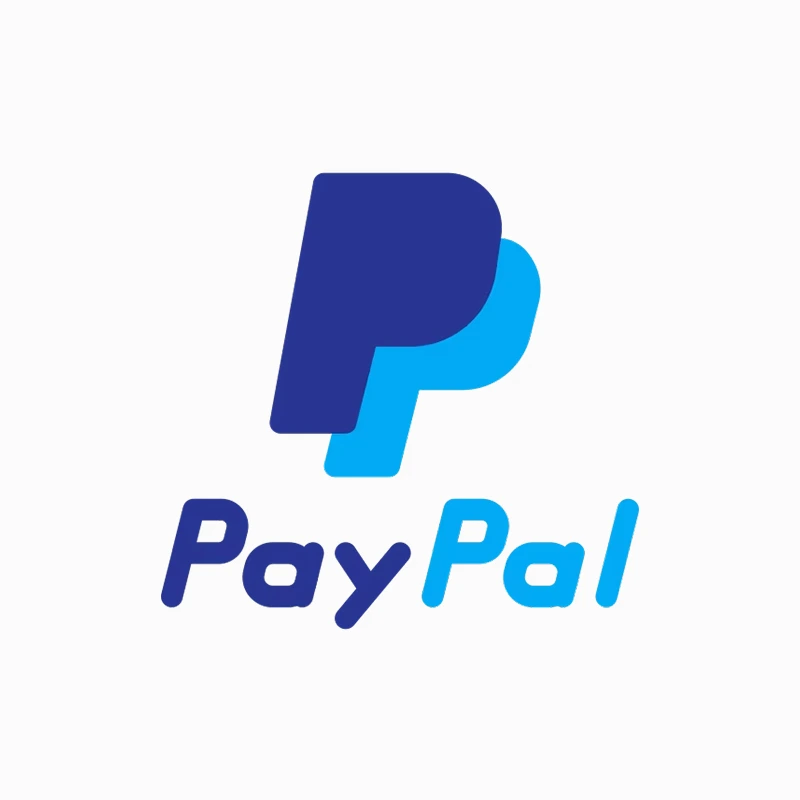
The Effects of PayPal's Stablecoin on Global Banking
PayPal's new stablecoin PYUSD is a big deal for global banking. As the first stablecoin from a major financial company, it could really shake things up.Sending Money Overseas:International money transfers are one area in which PYUSD could be a game-changer. Due to bank fees and regulations, sending money abroad can be tedious and expensive. Without all the typical banking middlemen, PYUSD has the potential to facilitate quick and inexpensive international transfers.Micropayments:PYUSD has enormous potential for micropayments. These are little transactions, such as those for online subscriptions or content. Currently, bank transfers and credit cards aren't the most micropayment-friendly options. PYUSD might give users and businesses additional possibilities.Lower Fees: PYUSD is a threat to the domination of big banks over payments, beyond money transfers and micropayments. PayPal's entry into stablecoins as a significant payments processor could offer it an advantage over conventional banks. PayPal may increase the number of people using its payment facilities by offering reduced prices and simpler options.PYUSD shows how global banking is evolving. Stablecoins are catching on because they have advantages over old payment methods. For banks to stay competitive, they'll have to adapt to these changes.Here are some of the ways PYUSD could transform banking:More competition - PYUSD brings healthy competition for cross-border and micropayments. This could lower costs and improve services.Financial innovation - Stablecoins enable new financial products like lending platforms and investment funds. This innovation can make finance more dynamic and efficient.Mainstreaming crypto - PYUSD could bridge the gap between the average user and cryptocurrencies. This may boost demand for Bitcoin, Ethereum, etc.Regulatory changes - PYUSD may lead regulators to update their approach to crypto regulation, like implementing stricter rules.In short, PayPal's stablecoin launch is a big step that could reshape banking. Banks need to keep up with the crypto evolution to stay relevant.If you wish to create your own stablecoin then RWaltz is the best company as a solution partner for Token Development Services.Feel free to book a free consultation for your project.
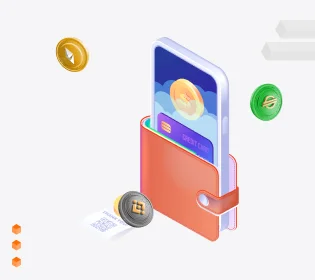
What are the benefits of Crypto Staking?
Crypto staking has become an increasingly popular way for cryptocurrency holders to earn passive income on their digital assets. Staking allows you to earn rewards on coins you already own by helping validate transactions on proof-of-stake blockchains. Here are some of the main benefits of crypto staking: Earn Passive IncomeOne of the biggest advantages of staking is that it allows you to earn passive income on coins you would otherwise just be holding in your wallet. Staking rewards are typically paid out on a regular basis, so it provides a steady stream of income that requires very little effort on your part once you have set up your staking wallet. The actual yield varies based on factors like the specific coin being staked, the amount staked, and the staking pool, but APY yields of 5-15% are common. This provides a great way to grow your crypto holdings over time.Support Network SecurityStaking helps secure proof-of-stake networks like DeFi platforms by having token holders lock up their coins to validate transactions. The more decentralized the network of validators, the more secure the network. By staking your coins, you help ensure the network remains decentralized and secure against attacks. Your staking contributes to the overall health and security of the blockchain network and DeFi ecosystem. Retain Ownership of Assets With staking, you retain full ownership of your coins. This differs from lending platforms where you relinquish control of your crypto to the lending platform. With staking, your crypto assets remain in your possession the entire time, giving you peace of mind. You maintain full control of your private keys as well.Easy to Get StartedStaking has become very easy for everyday crypto users to get started with. Many cryptocurrency wallets and exchanges now offer built-in staking services that allow you to stake DeFi tokens with just a few clicks. All you need is to hold the stakable coins in a compatible wallet or on a supported exchange to begin earning rewards. Some platforms even offer “staking pools” that allow you to stake with other users to meet the minimum staking amounts of certain DeFi networks.Hedge Against VolatilityStaking provides a way to earn on your crypto even during periods of price volatility. So even if the market enters a downturn, you can still generate yields on your staked assets. This helps hedge against market swings and continue growing your portfolio. The rewards earned from staking provide a buffer against declining asset values.Compounding RewardsMost staking rewards are paid out on a regular basis, like daily or weekly. This allows you to compound your earnings by staking the earned rewards. As the rewards accumulate over time, they can be re-staked, earning you even greater rewards through the power of compounding. Your staking balance steadily grows allowing for exponentially higher earnings over long time horizons.Support Blockchain GrowthBy providing validators and helping secure blockchain networks, staking directly contributes to the growth and adoption of blockchain technology and DeFi. It incentivizes more users to participate in consensus building. Your staked coins allow more nodes to join and enhance the capabilities of the DeFi ecosystem. Staking gives you a way to support the growth of decentralization.Environmentally FriendlyUnlike crypto mining, staking does not require massive computing power which consumes enormous amounts of electricity. It has a negligible environmental footprint in comparison to energy-intensive mining operations. This makes earning yields through staking much more environmentally sustainable. Especially as concerns around climate change and carbon footprints escalate, staking provides a green way to earn from crypto.Access to New CoinsMany new crypto projects like DeFi tokens distribute a portion of their tokens to stakers on their network. By staking on up-and-coming networks early on, you gain access to new token rewards before the projects gain mainstream adoption. These new tokens can appreciate tremendously if the project succeeds, providing substantial upside for early stakers. This gives stakers access to promising new assets.Hold Long Term StrategiesThe rewards from staking incentivize holders to adopt longer-term holding strategies. To maximize yields, long holding periods are required. This helps stabilize and support the long-term prospects of digital assets as investors lock up their DeFi token stakes. Cryptocurrency gains more legitimacy as an asset class as stakers hold onto their investments for lengthy periods rather than short-term trading.Avoid Trading Fees Day trading can often result in substantial fees that eat into profits. Staking allows you to earn yields on coins without constantly buying and selling them. This avoids significant trading fees like exchange fees, spreads, and withdrawal/deposit charges. Your assets can appreciate just from staking rather than actively trading them while incurring transaction costs.In summary, crypto staking provides a simple way to put your digital assets to work generating rewards. The passive income, support of blockchain and DeFi networks, environmental benefits, access to new assets, and holding incentives make staking an appealing option for any cryptocurrency investor. As staking protocols and options continue advancing in the coming years, crypto staking will likely play an increasingly pivotal role in the digital asset ecosystem. The benefits make staking a compelling tool for anyone aiming to maximize their holdings over the long term and support the growth of blockchain technology and decentralized finance.DYOR:Before getting started with crypto staking, it is important to do your own research (DYOR) to determine which projects and staking options make the most sense for your investment goals and risk tolerance. Make sure to evaluate factors like staking minimums, lock-up periods, supported wallets, and potential yields. Research the long-term viability and adoption potential of any network you plan to stake on. As with any investment, staking does carry risks like price volatility and locking up assets. So do your homework to find the staking opportunities that best fit your overall crypto investment strategy. The rewards can be well worth the effort for those who carefully research their options and wisely manage their staked assets over time.Are you looking for cutting-edge DeFi application development? Look no further! Reach out to RWaltz for expert solutions tailored to your needs. Get started with a FREE consultation for your project today. Let's build the future of decentralized finance together. Contact us now!

What is Blockchain Interoperability in Transactions across Crypto Exchanges?
Blockchain interoperability - it's the tech superpower bringing different crypto crowds closer.See, blockchain networks are like islands scattered across the crypto seas at first. Bitcoin over here. Ethereum land way over there. And that tiny Polkadot island starting to rise. Each has its own language and ways of doing things. Trying to get them to work together can feel like chaos.But bridges are starting to connect these lands. With interoperability, assets and data can move freely between blockchain islands to where they’re most needed.No more hassles of visa applications or changing currencies at the border! Just direct flights of value across networks.Why Do We Need This Connectedness?Well, no blockchain has superpowers to rule everything alone right now. Teaming up makes them stronger, without risking their unique cultures.It also saves crypto citizens from the headache of constantly swapping passports to access different islands. As a trader trying to sail between exchanges on different blockchains, I'd keep hitting roadblocks.Need to transfer Bitcoin from Kraken to my FTX wallet? Sorry, they don't speak the same language, so I'd have to bridge manually. The fees, delays and complexity made me tear my hair out!With interoperability, I can directly trade my Bitcoin for an Ethereum token on Uniswap to catch a red hot opportunity. No detours, no wasted time. Just fluid movement between decentralized finance (DeFi) ecosystems.How Do We Connect These Crypto Islands?We need to build bridges that allow secure passage but aren't too disruptive for existing networks.One approach is wrapping tokens in a passport of sorts to comply with the target network. For example, wrapped Bitcoin (wBTC) lets me use Bitcoin seamlessly on Ethereum's roads.Another tactic is making handshakes or short term agreements between networks to safely transfer value. Like a ferry service between two islands!There are also still-experimental tunnel protocols aiming to enable two-way, continuous transfers. And of course, alliance platforms like Polkadot specifically designed to unify different chains.But What's In It For Island Networks?It might seem counterintuitive for sovereign blockchains to share power. But here’s how it helps them: More versatile economic activity for users Increased adoption for smaller networks by connecting with major chains Ability to specialize while relying on allies for other needs Higher overall liquidity, security and efficiencyThere's some work still needed in protocol upgrades, testing, and getting networks onboard. But the global policy seems clear - increased connectivity between crypto networks benefits users and projects alike!The future looks bright, as long as security and common interest unite these decentralized islands. United we stand, divided we fall!If you are looking for any kind of Crypto Exchange Development, DEX, CEX, or clone of popular exchanges then you are the right platform. Book your free consultation today.
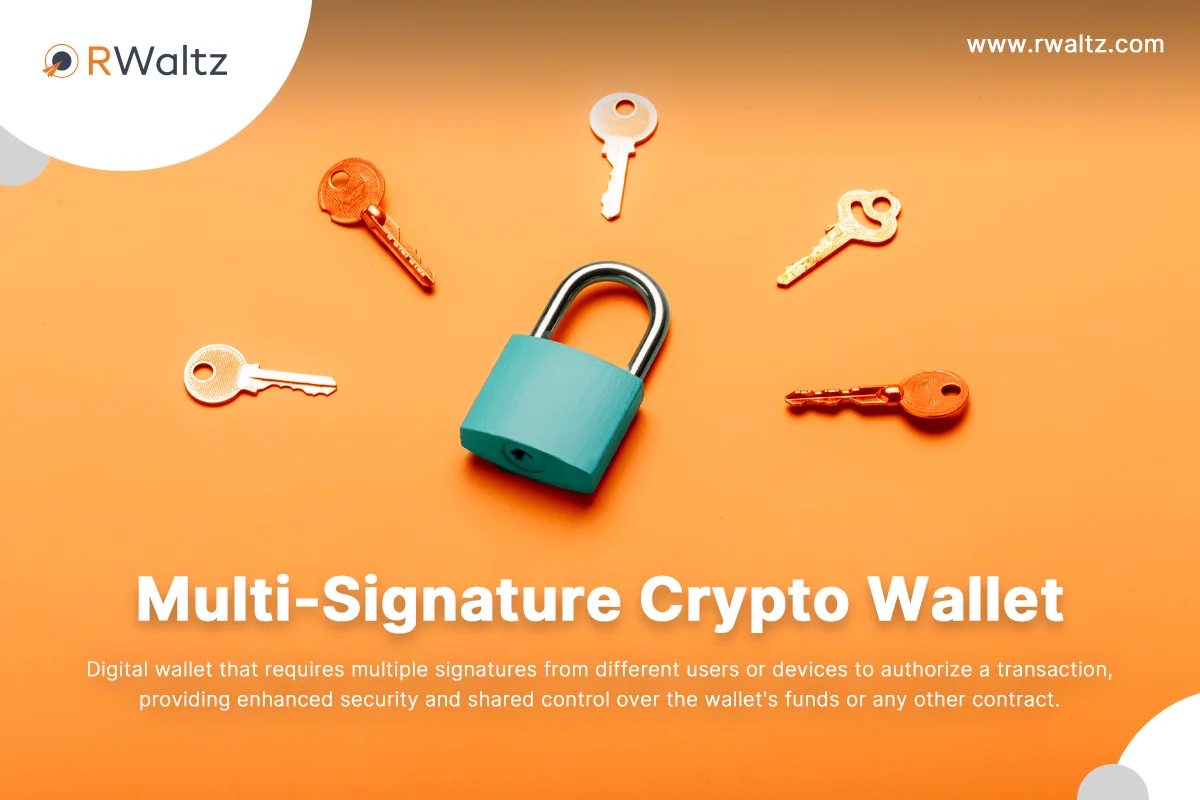
Multi-Signature Crypto Wallets: The Future of Organizational Decision Making
Introduction:As digital currencies and blockchain technology gain wider adoption, digital asset management has become an increasingly important concern for users. Cryptocurrency wallets have become the primary tool for managing digital assets, and the need for secure wallet solutions has never been more pressing. In this knowledge base article, we will discuss the significance of multi-signature crypto wallets and how they enhance security in digital asset management.What is a Multi-Signature Crypto Wallet?A multi-signature crypto wallet is a digital wallet that requires multiple signatures or approvals before any transaction can be executed. It provides an additional layer of security for users who want to protect their digital assets from theft, hacking, or other forms of unauthorized access. In a multi-signature wallet, several private keys are required to sign off on a transaction before it can be executed.Multi-signature crypto wallets can be used for various cryptocurrencies, including Bitcoin, Ethereum, Litecoin, and many others. They are available in multiple forms, including hardware wallets, desktop wallets, and online wallets.Hardware wallets are physical devices that store a user's private keys offline. These wallets are considered the most secure type of wallet because they are not connected to the internet and cannot be hacked remotely. Some popular hardware wallets that support multi-signature functionality include Ledger Nano S, Trezor, and KeepKey.Desktop wallets are software wallets that are installed on a user's computer. These wallets are convenient because they can be accessed from anywhere, but they are also vulnerable to malware and hacking. Some popular desktop wallets that support multi-signature functionality include Electrum, Armory, and Copay.Online wallets are web-based wallets that can be accessed from anywhere with an internet connection. These wallets are convenient, but they are also vulnerable to hacking and other forms of cyber-attacks. Some popular online wallets that support multi-signature functionality include BitGo, GreenAddress, and Coinbase.In addition to these types of wallets, multi-signature functionality can also be built into smart contracts on blockchain platforms such as Ethereum. This allows for more complex multi-signature arrangements, such as requiring multiple parties to sign off on a transaction before it can be executed. Overall, multi-signature crypto wallets provide an additional layer of security and protection for users who want to safeguard their digital assets. They are beneficial for businesses, joint accounts, and other situations where multiple parties are involved. By requiring multiple signatures to approve any transaction, multi-signature wallets help to reduce the risk of theft, fraud, and other types of unauthorized access to cryptocurrency holdings.Types of Multi-Signature Crypto Wallets:Multi-signature crypto wallets can be created using different combinations of signatures, depending on the level of security required. The most common types of multi-signature crypto wallets are: 2-of-2: This type of wallet requires two signatures to execute a transaction. It is commonly used for joint accounts, where both parties must approve transactions. 2-of-3: This type of wallet requires three private keys, but only two are needed to sign off on any transaction. It is commonly used for businesses or organizations where multiple people need to approve transactions. 3-of-5: This type of wallet requires five private keys, but only three are needed to sign off on any transaction. It is commonly used for high-security accounts, such as those that hold large amounts of digital assets.Use Cases of Multi-Signature Crypto Wallets: Decentralized Autonomous Organizations (DAOs): Multisig wallets can be used to govern DAOs, which are organizations that operate autonomously without a central authority. In a multisig DAO, decisions can be made by a group of members with different levels of authority and decision-making power. Secure messaging: Multisig wallets can be used to secure messaging systems, where multiple parties must authorize a message before it can be sent or received. This can be useful in situations where sensitive information needs to be shared securely. Smart contract execution: Multisig wallets can be used to execute smart contracts, which are self-executing contracts that can be programmed to perform specific actions when certain conditions are met. By requiring multiple signatures to execute a smart contract, the risk of a single point of failure is reduced. Voting systems: Multisig wallets can be used to create secure and transparent voting systems, where multiple parties must authorize a vote before it is counted. This can be useful in situations where the integrity of the voting process needs to be ensured. Access control: Multisig wallets can be used to control access to sensitive data or resources, where multiple parties must authorize access before it is granted. This can be useful in situations where security and privacy are critical. Business accounts: Companies can use multisig wallets to manage their finances, requiring multiple executives to approve transactions. This can help prevent fraud or mistakes by ensuring that no single person has complete control over the company's funds. Escrow services: Multisig wallets can be used as a secure way to hold funds during transactions between two parties. For example, in a real estate transaction, a multisig wallet could hold the funds until both the buyer and seller agree to the terms of the sale. Crowdfunding platforms: Crowdfunding platforms can use multisig wallets to hold the funds raised until the fundraising goal is met. This ensures that the funds are only released to the project once it has the necessary support. Joint accounts: Spouse or partner, family member, or business partners can use multisig wallets to manage joint accounts, requiring both parties to sign off on any transactions. This can help prevent disputes or disagreements over spending. Non-profit organizations: Multisig wallets can help non-profit organizations manage their funds transparently and securely. By requiring multiple signatures to approve transactions, the organization can ensure that funds are used for their intended purpose and that there is no fraud or mismanagement.Benefits of Multi-Signature Crypto Wallets:Multi-signature wallets provide an additional layer of security and protection to users who are concerned about the safety of their digital assets. Here are some benefits of multi-signature crypto wallets: Shared Control: Multi-signature wallets can be controlled by a group of people, providing a transparent way of managing funds, especially for businesses and organizations. Enhanced Security: Multi-signature wallets require more than one signature to authorize transactions, making them more secure against hacks and thefts. Trustless Transactions: With multi-signature wallets, you don't need to trust a single person to authorize a transaction. Instead, multiple parties must confirm the transaction, ensuring it's legitimate. Reduced Risks: With multiple keys needed to authorize transactions, the risk of losing funds due to a single point of failure is significantly reduced. Customizable Authorization: Multi-signature wallets allow you to customize the authorization process, such as the number of required signatures or the time frame in which the transaction should be authorized. Improved Accountability: With multi-signature wallets, it's easier to track who authorized a transaction, providing greater accountability and transparency.Overall, multi-signature crypto wallets offer a more secure and transparent way of managing cryptocurrency funds or any other contract.If you are looking for Multisig Wallet Development Company you can reach to us. Our Experts will consult and develop the wallet as per your requirements.
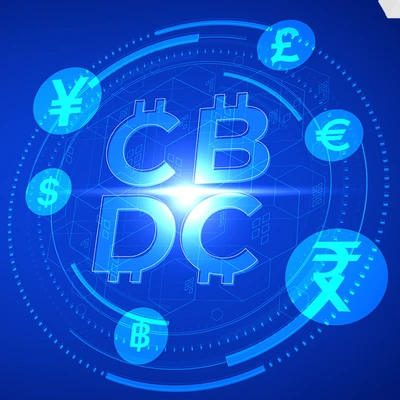
CBDC- A New Revolution into the FinTech!
Blockchain Development is leading the edge over the tech trends and transforming the way business is done. Majorly, Blockchain Technology has revolutionized the traditional financial ecosystem with Defi Development by introducing a decentralized version of fund transfer.Now, a new trend in the Blockchain space has captured the attention of the fintech and that is CBDC- Central Bank Digital Currency. A Deep Dive into Central Bank Digital Currency (CBDC)Central Bank Digital Currencies (CBDC) are termed digital tokens, just like the cryptocurrencies that are issued by a central bank or a nation’s monetary authority. These currencies are assigned the value of the specified country’s fiat currency. In other words, it is defined as the digital form of the country’s fiats. Countries across the world are developing CBDCs and many of them have already implemented them. With countries transitioning to a digital age, understanding CBDC becomes crucial to explore its effects on economies, existing financial networks, and stability. Let’s go into detail to explore more.Discover the Types of CBDCs for a Detailed Outlook! There are two types of Central Bank Digital Currencies (CBDCs), which are wholesale and retail. Let’s explore more about them. Wholesale CBDCsWholesale CBDC is much like financial institutions that hold reserve deposits with a central bank. It enhances the payments and security settlement efficiency, also eliminating liquidity risks. These CBDCs are mostly used in an interbank system to check the effects of cross-border payments.Retail CBDCsRetail CBDCs refer to government-backed digital currencies which are used by businesses and consumers. These CBDCs generally eliminate the intermediary risks associated with the bankrupting of private digital currency issuers and losing of customer assets. Check Out Why CBDCs are Gaining Momentum! A CBDC eliminates all the third-party risks associated with the system like bank failures, liquidity risks, etc. It lowers the cost of cross-border transactions by reducing complex distribution systems and raising the jurisdiction cooperation between the governments. CBDCs can directly establish the connection between central banks and consumers, thus removing the need for expensive infrastructure. The dollar being one of the most preferred currencies across the world, a U.S. CBDC supports and preserves its dominant position. Cryptocurrencies being highly volatile, CBDCs provide businesses and consumers with stable means of exchanging digital currency. CBDCs Vs Cryptocurrencies- Are They Similar? RWaltz- Pioneers in Blockchain Development Services RWaltz is a leading Blockchain Development Company with a wide range of services like cryptocurrency development, token development, NFT Marketplace Development, Coin Listing, Launchpad Development, Crypto Exchange Development, DeFi Development, DApp Development, Smart Contract Development, Smart Contract Audit, and much more. Clients across business verticals trust us for our service excellence. If you are looking for a Blockchain Development Company, connect with us! Schedule a demo now! Wrap UpHopefully, the above article has enlightened your knowledge of CBDC. The future is near when these digital currencies will revolutionize the fintech sector with their storming use cases.
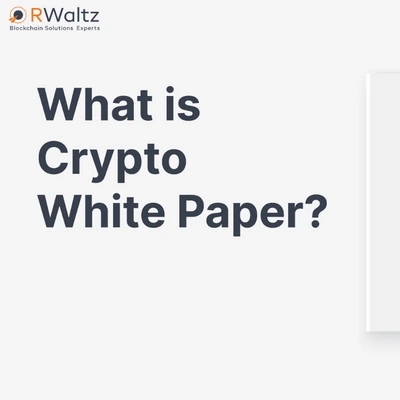
White Paper- The Crux of Blockchain Projects!
White Papers have turned out to be popular and powerful weapons for Blockchain Developers. A wide array of Blockchain Development Service providers are drafting white papers to present their solutions and their benefits to investors. Let’s dive in to explore white paper. How Do You Define White Paper for Blockchain Development? A white paper refers to a document released by developers that outlines in-depth information about a specific Blockchain solution. It highlights the problems addressed, solutions offered, benefits, and Blockchain technology used. The White paper also contains different forms of data like stats, diagrams, and formulas that explain the working of smart contracts for the specified Blockchain solution. Checklists You Should Consider While Writing a White Paper for Blockchain Solutions! 1) Introduction to the Project The white paper must begin with an introduction to your blockchain project and must outline the problems the project is willing to resolve. Also, the overview should indicate the solution the readers can expect from the project. Make the overview more engaging by specifying the benefits of the blockchain solution. 2) Write the Disclaimer Many Blockchain Development Service providers offer white paper drafting as a service but very few of them specify the disclaimer in the document. The disclaimer section should introduce the legal information of the Blockchain project. This section includes legal notice or restrictions applicable to the project. 3) The Motivation Behind the ProjectThe reason for developing this project should form the crux of this section. This segment gives a brief understanding of the problem the project aims to resolve and also describes how this Blockchain solution stands out in the market. The market research and statistics will depict the exact need for the project in the existing market. 4) Real-world Utility of the Blockchain Project A variety of Blockchain projects are deployed for a wide array of industries based on their needs. The utility of Blockchain projects varies from the finance industry to supply chain management. So, it is mandatory to specify the industry the Blockchain project is serving and how it is adding value to the business.5) Tokenomics Most Blockchain projects launch tokens and thus the whitepaper should have a section to specify Tokenomics. This section explains the working and distribution of tokens. However, make sure the Tokenomics of the project’s token is explained in-depth and it makes investors less speculative about the Blockchain project. This section should present the value to the market and distribution to investors, developers, crypto enthusiasts, etc.To understand Tokenomics in detail, click here - 6) Consensus Mechanism This refers to the most critical part white paper, where the Blockchain developers specify the consensus mechanism used for the project. There are various types of consensus mechanisms like proof of work, proof of stake, etc. Specify the consensus mechanism and why it was preferred for the project. Explain the benefits of the consensus mechanism used and how it is different from others.To explore more about consensus mechanisms and their types, click here. 7) Roadmap This section explains the scope of the project in the future. The investors too are keen to understand the future of your project i.e. for how long it will sustain in the market. So, describe the goal of the project and plans which are achievable and not exaggerated. 8) Blockchain Technology Specify the Blockchain technology the project has been built on. Also, mention the benefits of leveraging the technology and how it stands different from other Blockchains. 9) Team Members who have worked Don’t forget to mention the team, who has worked hard on the project. The team of developers and testers should receive their share of the limelight. Add bios and photos of the team members who have worked on the project. Wrap Up Hopefully, the above article has enlightened your knowledge of white paper. If you are looking for a Blockchain development company, make sure the company also offers whitepaper drafting for your project. RWaltz is one such company! Dive in to explore our Blockchain Development Services, and connect to our experts now.
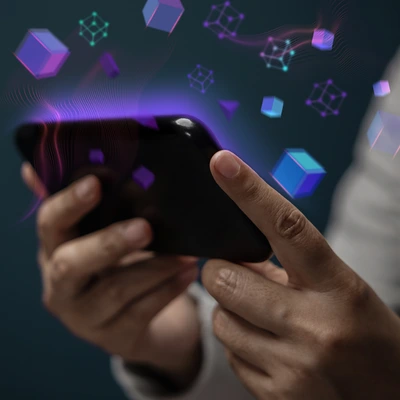
NFT Marketplace Aggregators- The Epicenter of NFT Marketplaces!
The NFT market is not just buzzing but it is booming now with billions of NFTs being traded each day. A wide array of NFTs are listed for sale across platforms and it becomes difficult for NFT enthusiasts to jump from one marketplace to another to keep track of each NFT Drop. To combine different blockchains and different marketplace NFTs at one place, NFT Marketplace Aggregators came into the picture. Let’s Dive in Deep to Explore NFT Marketplace Aggregator! NFT Marketplace Aggregators refer to a platform that offers NFT enthusiasts to seamlessly trade NFT collections from across the platforms eliminating the need to visit multiple NFT Marketplaces. NFT Marketplace Aggregators are platforms that combine the NFT inventories across multiple platforms and list them for sale into a unified interface. This platform offers convenience for buyers to compare the NFT prices and purchase NFTs from various sources on a single platform. Top Three Benefits of NFT Aggregators You Can’t Ignore! A Single Unified Interface:NFT Aggregators offer a unified platform to ensure the convenient buying of NFTs from multiple sources without having to switch between marketplaces. Bulk Purchase: NFT aggregators allow users to make bulk NFT purchases simultaneously instead of buying each NFT individually over different platforms. Enhance Search Efficiency: The NFT Marketplace aggregators enable NFT enthusiasts to browse for NFTs through multiple search options like searching through creator name, description, etc. 3 NFT Marketplace Aggregators You Should Explore this Year! Genie.xyz:The very 1st NFT Marketplace Aggregator that was developed is Genie.xyz. This platform provides a library of NFTs to the users listed on multiple platforms like Opensea, NFTX, NFT20, and LooksRare.Gem.xyz:Gem.xyz is one of the popular NFT Marketplace aggregators offering a shopping cart, flash bot, and whale purchase as the main features. Leveraging these features, the users on Gem.xyz platform stay updated with the latest trends in NFT Marketplace Development. The platform updates the users with the market trends without charging any additional charges and allowing users to generate profits. It lists NFTs from five popular Marketplaces that include, Opensea, X2Y2, LooksRare, and NFTX. Rareboard:Rareboard is another popular NFT Marketplace Aggregators built on BNB Chain. It allows the users to access the NFTs and their prices listed on the rarity dashboard. It has incorporated the top 10 NFT Marketplaces on the BNB chain network. These Marketplaces include NFTKey, BinanceNFT, Galler.io, NFT Trade, etc. Sintryx NFT Marketplace - An aggregated Platform for NFT Marketplace by RWaltz! Sintryx NFT bridges the gap between market participants and brings liquidity to secondary trading. RWaltz developed this aggregated platform to ensure the convenient buying and selling of NFTs across multiple marketplaces. RWaltz is a reliable NFT Marketplace Development company that offers customized solutions based on business requirements. If you are looking to develop an NFT Marketplace Aggregator like Sintryx NFT, click here to explore the portfolio. Schedule a demo with us and get consulted now! Wrap Up Hopefully, the article was a perfect guide for you on NFT Marketplace Aggregators.
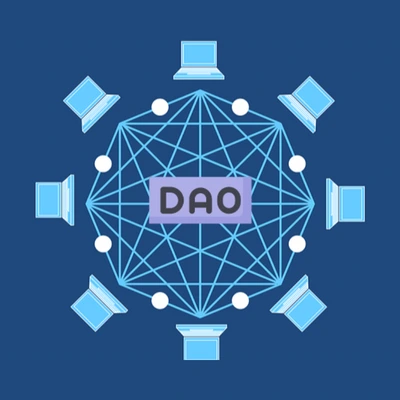
Insightful Takeaways to Keep Your Tabs on DAO
The advent of Decentralized Application Development introduced the concept of DAO. According to a 2022 survey, the total market capitalization of DAO accounted for $21 Billion as of January 2022. Let’s explore more about DAO.A Deep Dive into DAO! A Decentralized Autonomous Organization or DAO is defined as a collectively owned organization that is governed over by Blockchain. It is termed to be an emerging form of legal structure with no central body governing the process and where members share a common mission. In other words, the organization doesn’t have a CEO or CFO who can manipulate or force the decision. Pre-defined rules in the Blockchain code define the organization process. Popularized through Decentralized Application Development, DAOs are integrated to formulate smarter decision-making in a bottom-up management approach. DAOs have in-built treasuries which can’t be accessed until the group has permitted to do so. Here, the decisions are governed through voting ensuring transparency and participation from all. Top 4 Reasons You Should have a Decentralized Autonomous Organization! Democratic Decision Making:Decisions in DAOs are collectively governed by a group of members instead of relying on a single entity. The decision-making process involves a voting system where all the members participate to make a smarter decision ensuring transparency. Community:DAO enables people from across the world to come together and construct a single vision. The token owners can interact with other investors through just an internet connection irrespective of their location. Unaltered Documents:No authority can access or modify confidential documents without the permission of a majority of the members of the organization. Also, alterations made will be reflected to all the members across the system. Smart Contracts: DAOs are based on self-executing contracts which contain immutable code. Smart Contracts ensure quick and convenient decision-making through the voting system eliminating the need for the physical presence of individuals. Rules and regulations, guidelines, functionalities, and contract addresses are a few details coded in the smart contract. Here’s the Working Process of DAO, You Might be Curious to Know! DAOs are based on smart contracts, which are logically coded self-executable agreements ensuring smarter decision-making. The decisions are powered by the underlying activities on the blockchain. These contracts are highly verifiable, visible, and auditable publicly making it easier for any potential member fully understand the functioning of protocols at every step. Once the rules & regulations are formally integrated into the blockchain, it's time to look out for a way to receive funds and the path to bestow governance. The funds are normally raised through token issuance where the protocols sell the tokens and raise funds thus filling the DAO treasury. The token holders in return for their fiats are offered certain voting rights which are generally proportional to their assets. Once the DAO treasury is filled, the DAO is ready for deployment. Once the code is published, it can’t be altered. No special authority can change the rules of DAO, it’s purely the token holder community having the right to decide it. Dapp Vs DAO- Similar or Different? Let’s Automate it! Hopefully, the DAO article was insightful for you. For any other query, you can connect us. Be fully automated and make smarter decisions powered by DAOs. If you are looking for a Decentralized Application Development Company, we are the right choice for you! Let’s automate your business with a decentralized move. Hurry up! Launch your DApp now!
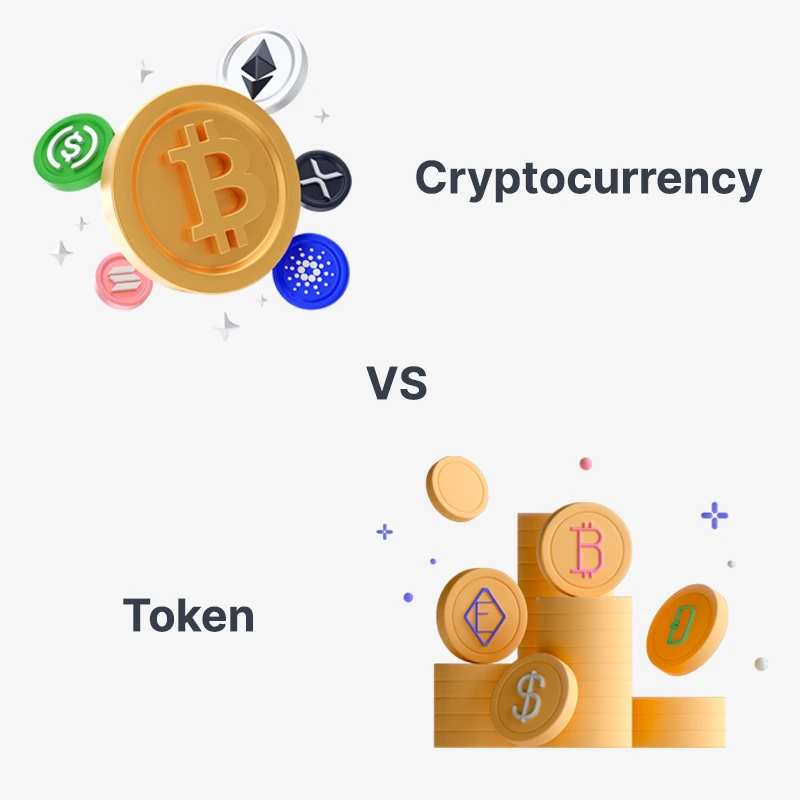
Crypto Coin Vs Crypto Token: What is the Difference?
Almost everyone gets confused when it comes to differentiating coins and tokens. They both are very much alike on a fundamental level but, still exhibit different properties. Before we explore coins and tokens let’s understand digital assets. Let’s Dive in to Explore Digital Assets! A Digital asset is a non-tangible asset that is created, stored, and traded on a virtual platform in a digital format. In the context of Blockchain Development, Digital assets refer to cryptocurrencies and tokens. They are the subclasses of digital assets that utilize cryptography and encryption methodologies that assure the authenticity of these assets. Cryptocurrency Definition You Need to Know! A Cryptocurrency or a crypto coin is termed to be the native asset of the blockchain network which is traded, used for storing value, and utilized as a medium of exchange. The crypto coin is considered to be Blockchain’s native currency as it is issued directly by the blockchain protocol. Crypto coins are not only used to execute transactions on the network but also to incentivize users and keep the network secure. Characteristics of Cryptocurrencies You Shouldn’t Miss! Cryptocurrencies are decentralized in nature i.e. there is no central authority governing or controlling the transactions. Crypto coins use cryptography to secure the system Crypto transactions are irreversible as no authority can help the users in case the transaction goes wrong. Token Definition You Should Study! Tokens are defined as digital assets defined by smart contracts on the existing blockchains. These crypto tokens share deep compatibility with the coins on the same network but, they are completely different digital assets. A wide array of token standards used for token development are majorly built on Ethereum. The most commonly used token standard for token development is ERC-20 and ERC-721. Benefits of Tokens You Shouldn’t Ignore! Crypto Tokens can be traded globally across the world ensuring access to millions of investors. The smart contracts integrated into the tokens ensure transactions are traceable, irreversible, and transparent. Difference Between Crypto Coins and Tokens You Didn’t Know! Let’s Wrap Up Hopefully, you have understood the thin line of difference between coins and tokens. For further queries, you can connect to our team. If you are looking for token development service, we are the right choice for you. Launch your crypto coin or token with us now!

A 2022 Smart Contract Audit Guide to Boost Your Code’s Security!
Businesses are integrating Blockchain solutions to ensure seamless operations. Smart Contracts play a vital role here, as they automate business processes. But these self-executable agreements are susceptible to security breaches and here the smart contract audits come into the picture. A Deep Dive into Smart Contract AuditsA Smart Contract Audit refers to an extensive analysis and systematic examination of smart contract code that forms an integral part of Blockchain and cryptocurrency development. These audits generate reports that identify errors, vulnerabilities, and security issues along with suggestions to fix these loopholes. Smart Contract Audit services play a vital role in Blockchain solutions as they mostly cater to financial assets. Important Perks You Should Ponder on While Choosing a Smart Contract Audit Service! Avoid Heavy Loss: Even minor flaws can result in huge losses after the application launch. Auditing the smart contract code at the early stage of development cycles eliminates the heavy losses. Prevent Hacking Attempts: The Smart Contract Audits identify the security loopholes and generate reports containing errors and security measures to be taken. These security audits ensure the smart contracts are free from vulnerabilities and the possibility of the system being hacked is nearly zero. Expert Review:Some of the Smart Contract Audit Service providers also double-check the code manually to eliminate false results. Continuous Assessment: The Smart Contract Audits perform timely assessments of your codes enhancing the development environment. Analytical Reports: The Smart Contract Audit Service providers generate the analytical reports where the errors are identified and mitigation suggestions are specified. These reports assist the developers to resolve the issues quickly. Smart Contract Audit Process Classification You Shouldn’t Ignore! Manual Auditing: Manual Smart Contract Auditing Process refers to a group of auditors or experts that examine each line of code for compilation issues. These issues also aid in identifying minor security errors that are often neglected like poor encryption methods. Manual Smart Contract Auditing is classified into two types: Performing an exploratory verification depending on the developer’s experience Checking the code based on the standard list of errors Automated Auditing: Automated Smart Contract Auditing refers to bug-detection software that detects the exact location of the errors in the code. The projects needing faster time-to-market generally choose automated smart contract audits ensuring speedy identification of vulnerabilities. A 5-Step Smart Contract Audit Process You Should Follow! Collecting Code SpecificationsTo confirm the guaranteed incorporation of third-party smart contracts, auditors collect the code specifications and scrutinize the architecture. This step assists the auditors in analyzing the goals of the project and identifying its scope. Execute Unit TestsThe auditors test the cases to verify if the smart contracts function as desired. This involves both automated and manual testing to check the overall smart contract code. Choose the Auditing Approach This step involves manual smart contract audits where auditors inspect the smart contract code to spot minor errors. This approach helps the auditors to efficiently identify the front-running attacks. Initial Report Once the Smart Contract Audit is completed, the auditors will specify the flaws in the code and give their feedback to the project team. There are a few smart contract audit service providers that help the developers fix each bug detected. Final Report Once the bugs are fixed, the auditors draft and publish the final report considering measures taken by the developers to resolve the raised issues. Our Smart Contract Audit Services You Need To Explore! RWaltz is a reliable Smart Contract Audit Company, whose audit reports are accepted by the top 10 exchanges. We ensure the robust security of your smart contract code through our audit reports. Hurry Up! Let’s audit your smart contract right away! Click here to explore more. Let’s Audit ItHopefully, this 2022 guide will direct you to smartly choose a smart contract audit service provider to boost your code’s security. For further queries, connect to our solution experts. If you are looking for a smart contract audit company, we are the right choice for you! Get your code optimized and secured with us.
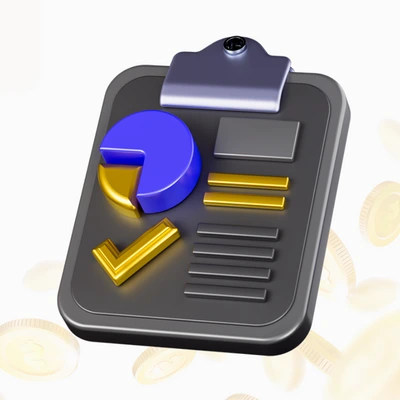
How Do I Register My Token on CoinMarketCap
For a newly launched crypto token, its visibility is the key to its success. Here, visibility refers to token listing on reputed websites and exposure to a massive number of investors. CoinMarketCap is one such website offering Cryptocurrency Listing. What is CoinMarketCap? CoinMarketCap is considered to be one of the largest cryptocurrency listing websites. This website offers easier tracking of cryptocurrencies and availing data about them. This website offers free-of-cost listing services and has predefined criteria for listing coins. There are certain requirements or criteria that need to be fulfilled before listing. Let’s dive in to explore. What is the Requirement to Process the Coin Listing Request? Provide information about Cryptographic methods, consensus algorithms, distributed ledgers, peer-to-peer technology, smart contracts, medium of exchange, and decentralized application. It should have a block explorer and a functional website. It should be active and publicly traded on at least one crypto exchange platform with material volume and depicting tracked listing status on CMC. Provide details of the project representative for query clarification about the token to be listed. Evaluation Framework of CoinMarketCap Once the requested information is submitted, CoinMarketCap evaluates the token and information shared.Here are a few evaluation frameworks. Trading Volume and Market Pairs: Trading volume and liquidity are crucial to establishing market prices for users to avail and sell digital assets. CoinMarketCap also evaluates market pairs on supported exchanges. Community Interest & Engagement: CoinMarketCap evaluates your project’s usefulness and its ability to foster meaningful interactions with its community. Market Fit: A token addressing a specific pain point, problem, or use case is more likely to gain traction in this process.Feasibility: This Exchange listing platform evaluates your token to check if it is feasible to implement in the present scenario. Token Uniqueness: Your token is examined on the basis of unique and interesting characteristics, that expand its use cases helping the ecosystem to grow. CoinMarketCap Listing TiersThere are several listing tiers available but, one should opt for tracked listing. Inactive Listing: The project status is set to inactive due to the absence of market data from at least one CMC- supported exchange. For reactivation review, the token must be actively traded with the material volume on at least two exchanges supported by CMC. Unverified Listing: This listing involves projects whose price data is displayed through automated processes but, CMC has not yet reviewed it. Untracked Listing: Projects that don’t satisfy the requirements of CoinMarketCap but, satisfy some areas' evaluation framework. Tracked Listing: Projects that meet the guidelines of CoinMarketCap and exhibit strengths in areas of the evaluation framework. Looking for Hassel Free Crypto Listing Service? Finding this process long and tedious? RWaltz is here to help you with hassle-free listing not only on CoinMarketCap but on the top 50 Crypto exchanges. Click here, to explore our commission-free coin listing services. Wrap UPHopefully, the above article will help you list your newly created token on CoinMarketCap. If you are looking for hassle-free listing services, RWaltz is here to help you. Scroll to our services and explore, how our Coin listing services will benefit your business.
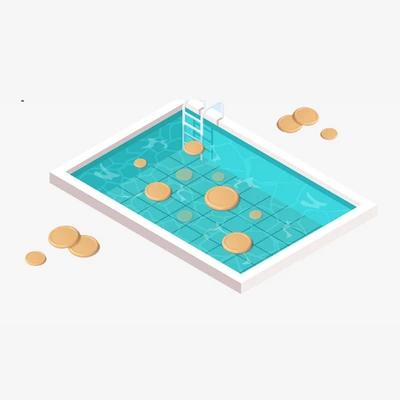
Liquidity Pools- The Building Blocks of Decentralized Exchange Development
What is a Liquidity Pool? Liquidity pools are defined as crowdsourced pools, where cryptocurrencies or tokens are locked in a smart contract facilitating trades between the assets on a Decentralized Exchange (DEX). Most of the Defi platforms use automated market makers rather than traditional markets enabling automated trading of digital assets through the liquidity pools. The Liquidity Pools depict a mechanism enabling users to pool their assets in a DEX’s smart contracts that offers asset liquidity to the traders for currency swap. Addressing the challenge of limited liquidity supply, automated market makers offered incentives to supply these pools with the assets without the intermediary. The trading turns easier on Decentralized Exchanges with increasing assets added to the pool and the rising liquidity of the pool.What is an Automated Market Maker?Automated Market Makers (AMMs) refer to a part of decentralized exchanges (DEXs) that eliminate the need for a middleman while crypto trading. These are autonomous protocols on the DEX platforms that automate liquidity. These AMM protocols use smart contracts (self-executing computer programs) to determine the price of digital assets and provide liquidity. The users don’t trade against the counterparties but they trade against the liquidity locked into smart contracts. What are Arbitrage Traders?Arbitrage Traders exploit the tiny differences in price between identical assets in multiple markets. The arbitrage trader is defined as a trader who buys an asset in one market and sells it in another market at the same time to analyze the difference and efficiency between the markets. In standard terms arbitrage is defined as buying and selling of shares or digital assets in multiple markets to receive profit from inevitable differences in the prices at the same time. Arbitrage traders are popular for enhancing the efficiency of the financial markets, by bidding for the lower-priced assets and selling off the higher-priced assets. What is the Purpose of a Liquidity Pool? During a trade, investors or traders encounter a difference between the executed and expected price, which might lead to illiquid markets. The liquidity pool eliminates the concerns of illiquid markets offering incentives to the users and giving liquidity for a share of trading fees. Trading through Uniswap liquidity protocols eliminates buyer and seller matching. In other words, traders can exchange their tokens and assets through liquidity provided by users and transact through smart contracts. What are Liquidity Pool Tokens? Liquidity Pool Tokens also known as Liquidity provider tokens are given to users who provide liquidity in the pools. Once you deposit a pair of tokens in the pool, you’ll receive LP tokens as a “receipt”. These tokens perform as a receipt that allows users to claim the original stake and interest earned. What is a Price Impact? Price Impact refers to the difference between the current market price and the price you will pay during a swap on a decentralized exchange. The price impact occurs due to the pricing of the DEX platforms. The change in the ratio of assets in the pool leads to one asset turning expensive and the other one becoming inexpensive. When the supply of one asset increases the supply of the other one decreases making the decreasing asset more expensive. The more the shift in ratio, the more the price changes. What is Slippage Tolerance? When a trader tries to execute an order on the market at one price but in the end pays more than expected or even less due to the recently executed trades is slippage. Slippage Tolerance is defined as the adjustment of the price “movement” limit by the number of digital assets a user is willing to bear. This number is presented in the form of a percentage of the total exchange value. In simple words, it is the difference between the token price we can tolerate that occurs while we carry out the operation. If the token is more or less then the price, the operation is halted. What is a liquidity provider? A liquidity provider refers to a market broker or institution that acts as a market maker in a chosen asset class. The liquidity provider offers crypto assets to a platform helping them with decentralized trading. These market makers in return are rewarded with fees generated by trades on that platform which might be thought of as passive income. The assets provided by the user are locked for the time frame user has chosen to provide liquidity. Which are the popular Liquidity Pool Providers? Decentralized exchanges use Automated Market Markers to leverage liquidity pools for enabling permissionless and automated trading of digital assets. Here’s a list of popular platforms offering liquidity pools. Uniswap Uniswap is considered to be one of the crucial entries in the liquidity pools based on its trading volume. The platform enables decentralization of trade between ETH and ERC-20 tokens. Uniswap offers a competitive advantage as it operates as an open-source exchange and assists any individual to launch a liquidity pool for any token without any fees. Balancer The balancer is an Ethereum-based liquidity pool that serves as a non-custodial portfolio manager and price sensor. It offers the users the flexibility to customize pools along with the trading fees earned by subtracting or adding liquidity. The platform offers multiple pooling choices that include private, smart, or shared pools. In March 2020, Balancer introduced a liquidity mining facility by distributing BAL governance tokens to the liquidity providers. Curve Finance Curve Finance is a decentralized liquidity pool that serves favorable opportunities for stablecoin trading. The platform offers 7 different pool pairs with distinct ERC-20 pool pairs. Thus, it supports swapping for various pools of crypto assets and stablecoins, which comprise BTC, PAX, BUSD, and many more. Wrap Up Hopefully, the article has enlightened you on liquidity pools. For further queries connect to our experts. If you are looking for a Blockchain and Cryptocurrency Development Company, you are at the right place.
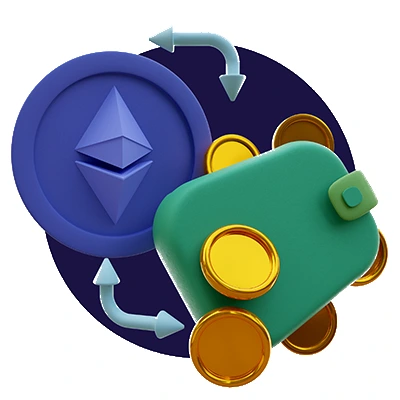
What is Crypto Exchange?
The proliferation of crypto assets generated widespread interest and lead to a debate over the future of Cryptocurrency for this emerging digital economy. Cryptocurrency Development is revolutionizing the financial ecosystem by offering an array of potential benefits to the users. Crypto Exchanges have revolutionized traditional crypto trading and made it much easier for crypto enthusiasts to acquire these digital currencies. What is a Crypto Exchange? Crypto Exchange is defined as an online trading platform to buy, sell, and exchange cryptocurrencies. This platform enables the users to trade one crypto for another i.e. convert Bitcoin to Litecoin. It also enables people to buy cryptocurrencies with fiat currency.What is White Label Crypto Exchange? A white label cryptocurrency exchange is a ready-to-deploy protocol with a market-ready backend and a customizable front-end. The white label cryptocurrency exchange development facilitates customizing UI/UX based on the business requirements enabling the application to be launched quickly in the market.Types of Crypto ExchangesCentralized Crypto Exchange (CEX) Centralized Crypto Exchanges have intermediaries that function as banks for crypto trading. The centralized exchange depicts a traditional cryptocurrency exchange in the crypto sphere. These exchanges are governed by a central authority offering both crypto-to-crypto and fiat-to-crypto trading. These platforms often function as reliable intermediaries for trades and act as custodians by managing and securing the funds. Generally, CEX platforms verify identity and ask for Know Your Customer(KYC)details, Anti-Money Laundering (AML), and Counter-Terrorism Financing (CFT) checks before the user begins trading. Decentralized Exchange (DEX)Decentralized exchange refers to an alternative to a centralized exchange. Decentralized Cryptocurrency Exchange is a platform where there is no central point of failure i.e. it facilitates crypto trading without the involvement of a third party thus eliminating the commission fees. The platform automates transactions and trades through smart contracts and decentralized applications.Peer-to-Peer Exchange (P2P)Peer-to-peer (P2P) Exchange is a platform that allows people to trade directly with one another eliminating the need for a centralized party to facilitate transactions. P2P does not demand any KYC details before initiating the trade. Peer-to-peer exchange is based on the concept of decentralized exchange enabling direct trading without the involvement of a third party or central authority. The major difference between DEX and P2P is the escrow, which plays a vital role and the escrow wallet is controlled by the admin.Wrap UpHopefully, the article has enlightened your knowledge of Crypto Exchanges. For more queries, connect with our team. If you are looking for cryptocurrency exchange development RWaltz is the right choice for you! Hurry up! Schedule a meeting right away!
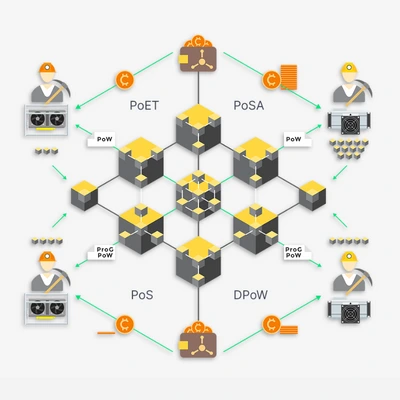
Terminologies You Should be Aware of Under Consensus Algorithm
Blockchain is distributed decentralized network offering immutability, privacy, security, and transparency. There is no central authority governing the Blockchain, yet every transaction in Blockchain is secured and verified. Here, the consensus mechanism plays a crucial role. What is Consensus Algorithm? A consensus algorithm in Blockchain Development depicts a process that is used to avail agreement on a single data value among distributed processes or systems. This algorithm is used only in distributed systems. The consensus algorithm expects a reply from 51% of resources at a time to ensure the whole system is fault-tolerant. What is Proof of Work (PoW)?Proof of work is defined as a consensus mechanism used to validate the alphanumeric codes called hash, which is calculated by the miners. Every time a new block is added to the Blockchain network, proof of work is used to verify the recent transactions. With Proof of Work (PoW), miners are completing mathematical puzzles to earn the mining rewards. What is Proof of Stake (PoS)? Proof of Stake is termed as a consensus algorithm that determines who will validate the next block based on how many coins the user is holding. Proof of stake is used to avoid the computational cost involved in proof of work. Here, the validators don’t collect the block rewards instead, they receive network fees as their rewards. What is Delayed Proof of Work (DPoW)? Delayed Proof of work (DPoW) depicts a hybrid consensus mechanism that enables one blockchain to leverage the security offered through the hashing mechanism of secondary blockchain. It is a security mechanism that is generally defined as the modified version of Proof-of-Work algorithm. The primary blockchain on DPoW might use PoW or PoS consensus, while the secondary blockchain will use PoW consensus mechanism.What is Proof of Elapsed Time (PoET)? Proof of Elapsed Time (PoET) is one of the fairest consensus mechanisms that chooses the next block through fair means. PoET is widely used for permissioned Blockchain Development. This algorithm offers a fair chance of creating its own block for every validator on the network. All nodes wait for a random amount of time and add proof of their wait in the block, broadcasting the created blocks to the network. What is Proof of Stake Authority (PoSA)? Proof-of-Stake Authority (PoSA) is a hybrid consensus mechanism that is a combination of both Proof-of-Stake and Proof-of-Authority. It supports smaller block time and lowers costs that comes at the cost of network decentralization and security. This mechanism is mostly used by Binance Smart Chain. What is Proof of Capacity (PoC)? The Proof of Capacity (PoC) mechanism allows the validators to invest their hard drive space instead of burning coins and investing in expensive hardware. The mechanism depicts that the more the hardware space the validators have better are the chances of being selected for mining the next block and earning the block reward. Wrap Up Hopefully, the above article has enlightened your knowledge of Consensus Mechanisms for Enterprise Blockchain Development. For further query, connect to our experts.If you are looking for an Enterprise Blockchain Development Company, take a look at our services. Schedule a meeting with us and lets take your project ahead.
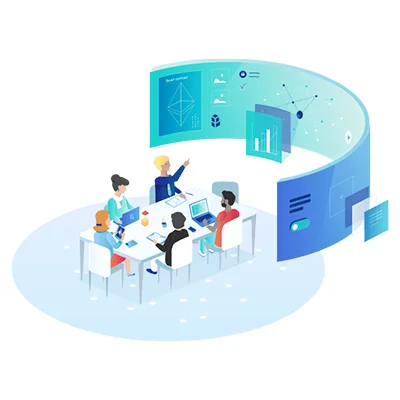
Front-Running Attacks in Blockchain
Blockchain Development is gaining popularity but, at the same time attackers are finding innovative strategies to crack the transactions on it. Transactions in Blockchain are broadcasted to the network, where the miners select transactions and validate them into a valid block. This block is later added to an immutable chain of blocks where the transactions are visible to the nodes before the miner processes the transaction and it is propagated to the nodes. This is where the front-running attack comes into the picture.What is a front-running Attack? During this process, a malicious node can see the transaction, identify its purpose and send its own malicious request based on the initial transaction. Taking advantage of this process, the attackers add transactions to the blocks based on transaction fees. The attacker ensures his transaction processes before any other transaction by integrating a higher transaction fee with it. This is called a front-running attack in Blockchain. Which are the possible Front-end Attackers? Miners Miners can control the order of transaction execution and hence can conduct these attacks. They can blend their transactions without broadcasting them. Full Nodes Full nodes can see unconfirmed transactions. For Ethereum, gasPrice is a crucial factor for a profit-motivated miner to prioritize orders. The higher the gasPrice more the chances of transactions being selected. Thus, any Ethereum full node can front-run pending transactions by sending its own modified transactions with a higher price. How to Mitigate these front-running Attacks in Blockchain?Front-running is the integral feature of Blockchain Development and transaction fees are a crucial part of this environment, thus its ability to pay for priority is not an implementation error. The easiest way to escape front-running attacks is to pay transaction fees high enough then the attackers. But this solution is expensive and thus is an unsustainable way of getting rid of these attacks. Transaction SequencingThis method helps to tackle the asynchronous behavior of transactions. Ethereum selects these transactions that are stored in pending transaction pools while creating blocks. The transactions don’t have a predefined order for selection but, the miners can put them in arbitrary sequence. Since there are no rules, profits are possibly the primary reasons for miners to choose transactions from pools. FIFO (First-in-First-Out) is not-feasible for distributed ledgers since the order of transactions is not fixed. Thus, we have an alternative that is a trusted third party, that can be used to assign sequential numbers to transactions. But, this conflicts with Blockchain technology’s core innovation of distributed trust possibly adding a single point of failure. This can lead to an additional delay in the transaction validation process. Another alternative to this is sequencing transactions pseudo-randomly which is spotted in Bitcoin’s Canonical Transaction Ordering Rule. This rule makes front-running attacks statically difficult by adding a security layer and the system won’t be immune to these attacks. Zero Knowledge Proof Zero Knowledge Proof is an encryption protocol with probabilistic assessment. ZKP is a cryptographic method used to prove a specific piece of information without revealing the content of that knowledge. Zero Knowledge Proof of Work or Zero Knowledge Proof of Computation comes into the picture when a prover convinces the verifier about the correct execution of computation on secret data, without unveiling the confidential information. Wrap UPHopefully, the above article has enlightened your knowledge of front-running attacks and their remedies. If you have any queries related to Enterprise Blockchain Development, feel free to connect us. Are you looking for Enterprise Blockchain Development Services? Scroll yourself to our services and let’s take your project ahead.

How Marketing Managers Can Leverage NFT Marketplace
A few months ago, NFT Development was just a buzz. Fast forwarding the time, NFT Marketplace is making headlines every day with its new and unique way to market and advertise brands.NFTs have been in existence since 2017 with the launch of CryptoPunks a collection of 10,000 unique digital characters. But, NFT Development gained popularity with CryptoKitties, a virtual cat trading game that went viral. How Marketers Can Leverage NFT Marketplace? Create Brand Awareness To carry out their brand awareness campaigns, Marketers have started crafting their own NFT Marketplace. They can create digital versions of physical products and can mint them as NFTs. Not only big brands but even small brands like RTFKT developed NFTs to create brand awareness and these NFTs went viral with the brand garnering popularity. NFTs have paved the way for Metaverse exposing the marketer’s products to the massive number of users in the metaverse. Marketing firms have started leveraging NFTs to create a whole new virtual brand experience through 3D models, videos, audio, gifs, collectibles, etc. NFT Development is assisting the companies to efficiently market the unique perks or benefits of the products received by the customers. Protect Brand Image While smaller brands are trying to create awareness, legacy brands are leveraging NFT Marketplace Development Service to protect their brand image. Leading brands like Robert Mondavi are using NFTs to protect their wine providence rather than expanding the audience. Emphasizing the thoughts of modern consumers, brands have started presenting their core values through NFTs. Marketers of different brands are demonstrating the brand’s dedication to social causes by utilizing the funds raised from NFTs thus improving the brand image. Kinetic Sand partnered with artist Dam Lam to create and sell digital assets on NFT Marketplace Developments raising money for the boys and girls club of America. This initiative was intended to help them grow their arts and creative experience program. Smarter Promotions and Events Marketing agencies have started embracing NFTs to generate coupons, promos, and access codes that can be tracked. Marketers are offering exclusive deals to their community members for new purchases of products.Streetwear brand “The Hundreds” stepped into NFT Marketplace Development with their Adam Bomb Squad NFT Collection. This digital art series was massive with a sale of 25000 digital art pieces within one hour. AMC theatres offered NFTs to the 1st few attendees. When the tickets were out for sale, the theatre offered 1st 86,000 investors who reserved tickets an opportunity to avail of free NFTs. Also, the user who purchased the ticket but didn’t go to the movie was no longer eligible for NFT. This is an efficient way to promote events and tickets. Hopefully, the above article has enlightened you on NFT Marketplace Development. For further queries, connect to our experts.

What are the key takeaways of CAR NFT
NFT Marketplace Development Service is transforming the automobile sector by adding brand value to the automotive brands and their car designs. Car manufacturers are now partnering with NFT Marketplace Development Company to craft NFTs of their signature car designs or videos. Today, the NFTs are being used to maintain vehicle ownership or even the entire information.Let’s dive in to learn more about Car NFTs: What is a Car NFT? A Car NFT refers to non-fungible tokens specifically designed with car owners in mind. Automobile manufacturers are experimenting with multiple types of NFTs for cars, which might be as a marketing stunt or to leverage the tamper-proof property of NFTs. The 5x WHAT Does Car NFT Refer to: Artwork released as an NFT by a car brand A clip of a live car racing event Proof of ownership of a car Access key to a vehicle Record the service history of a vehicle The 5x What does tokenize car ownership include: Car ownership token Car registration token Car insurance token Car activation token: lock and engine Car sharing or rental token The 3x WHY of Tokenized Car Ownership Include: Utility through better integration: The car is driven by the digital wallet Utility through less friction: tokens share the info so car owners don’t need to Liquidity via rental: sweat the asset without a middleman3X WHAT are the Benefits of NFTs: Streamline the process: Car NFTs ensure the entire information of the vehicle is stored within a token offering a streamlined process. Eliminate Intermediaries: NFT Development for Cars simplifies the business process between two parties eliminating the middleman. NFTs Establish Trust: Smart Contract development in NFTs integrate the element of trust since they are immune to alterations and are highly secure. Let’s Conclude: Hopefully, the above article has enlightened you on Car NFTs. If you have any queries, get back to our experts and resolve your doubts right away!Are you looking for an NFT Marketplace development company? Scroll yourself to our services. Hurry up! Schedule a meeting with our experienced professionals and share your project idea to get a quote.

What Does NFT Marketplace Means for Domains
Revolutionizing the internet era, NFT Marketplace Development is creating hype for domains too. Domain NFTs live on a public Blockchain and enable the user to have complete control of their stored data. What is a Domain NFT? Domain NFT is defined as a suite of smart contracts i.e. software written on a public blockchain. NFT Marketplace ensures the data stored isn’t controlled by a single entity or a company, instead is transferred to the user. Domain NFT is similar to the traditional domains with a thin line of difference. Annual Registration Fees: Since NFTs are stored on public Blockchains, it offers users to completely own their Domain NFTs. These domains in the NFT Marketplace Development have no expiration and there is no need to renew them eliminating the fees. Simplified Wallet Address: Domain NFT Development uncomplicates the multiple wallet addresses replacing them with a single domain name. Why Domain NFT Development is Important? To simplify the crypto transactions by replacing the complicated wallet addresses with the domain name as a username. Domain NFT Development enables the user to login into applications with a domain name as a universal username in web3. Unlike the traditional domain names, NFT Marketplace Development offers domains that users have complete control of. The user will buy the domain for once but, will own it for life. It simplifies the creating and hosting of websites, ranging from personal websites to NFT Marketplaces. Top Use cases of Domain NFTsContent CreationDomain NFT helps content creators retrieve control and ownership of their digital identity. NFT Marketplace Development eliminates the need for content creators to rely on social media to host their content. Instead, they can use blockchain technology to host digital content on the decentralized web. The creators hosting the content on Domain NFT Development can own the data and analytics. Professional WebsitesCompanies can start hosting their website on Domain NFTs rather than hosting on traditional ones. The NFT Domains mitigate multiple risks in the online businesses like paying recurring hosting charges, staying bound to platform terms and conditions, or domain companies reclaiming the website. Communities and ForumsNFT Domains redefine how users interact with each other in digital communities and forums. These communities and forums can benefit through free and inclusive discussions on decentralized sites with no need to rely on centralized services. Wrap UpHopefully, the article has enlightened your knowledge of Domain NFT Development. For any query, connect to our experts. Are you looking for the NFT Marketplace Development Company? You are at the right place, schedule a meeting now.

Fashion NFTs: What NFT Marketplace Means to the Lifestyle Industry
Fashion is known for setting trends may it be lifestyle or NFT Marketplace. Vogue Business Index features 17% of the fashion brands that have leveraged NFT Development. Why Fashion Brands are Leveraging NFT Marketplace Development? NFT Marketplace offers a unique way to represent the fashion brands digitally Create an exclusive and personalized experience for customers through unique fashion NFTs Earn revenue on NFT Marketplace by selling these digital assets Generate excitement through NFTs amongst the audience for a new product launch Tailor unique loyalty programs by crafting NFTs Give reason to the customers to understand your USPs Stay ahead of the competition with NFT Marketplace Development ServiceTop 5 NFT trends in the Fashion Industry RTFKT – Virtual Sneaker DropsThe RTFKT brands established in 2019 gained momentum for selling virtual sneakers. RTFKT’s collaboration with a young and rising crypto-artist crafted a series of three sneakers accompanied by digital merchandise. Leveraging NFT Marketplace Development Service, RFTKT earned USD 3.1 Million by selling 600+ sneakers. Winners could also redeem a physical version of sneakers but, the value was all in limited edition digital iterations. Gucci- Luxury Fashion House with NFT Short filmsGucci- the iconic Italian fashion brand’s NFT wasn’t styled after fashion goods but, was inspired by a film. This 4-minute film was auctioned for 25000 Million USD at Christie’s auction. This was Gucci’s 1st NFT that was a part of the Aria Collection- created to celebrate its 100th anniversary. Louis Vuitton and NFT Games To celebrate its founder’s 200th Anniversary on 4th August, Louis Vuitton the iconic fashion brand came up with a unique idea to combine fashion and NFT Marketplace. It introduced “Louis the Game”, which is an adventure game where players ought to traverse through a dollhouse belonging to Vivienne. This game featured 30 hidden NFTs with 10 NFTs in collaboration with “Beeple”, who is a popular NFT artist.The NFT Hoodies by Overpriced Overpriced to be considered as the world’s 1st NFT-driven fashion brand. Its 1st drop comprised of a physical hoodie that splashed a scannable code enabling the person to show their NFTs to anyone they wish to. This hoodie was sold on NFT Marketplace Development BlockParty for USD 26000. NFT Enters Fashion Week The outbreak of COVID-19 led to fashion weeks going Digital and NFT Marketplace played a crucial role here. “French Fashion” and “Haute Couture Federation” collaborated with the “Arianee” platform for NFT Development. These NFTs could be exchanged in 2022 men’s fall/ summer fashion week in Paris or even in other highly rated fashion exhibitions. Wrap UpHopefully, the above article has delivered enough knowledge on fashion NFTs. If you have any questions regarding NFT Marketplace Development Service, feel free to connect us.Are you looking for an NFT Marketplace Development Company for your fashion brand? Scroll yourself to the best we can offer you and schedule a meeting with to take your project ahead.
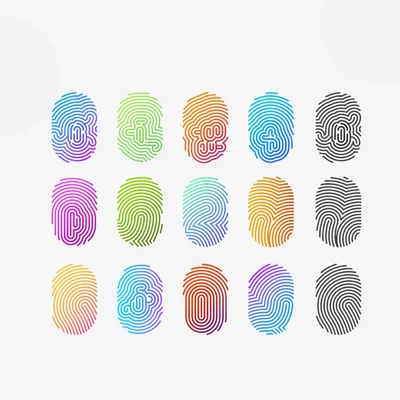
What does NFT Marketplace Means for Identity
NFT Development refers to creating digital assets of real-world objects like artwork, animations, images, virtual land, collectibles, etc. With its popularities across industries, NFT Marketplace is being widely accepted by businesses and investors. The growing popularity of NFTs stepping ahead with NFT-enabled IDs.Let’s dive in deep to explore more.Verifiable Identity with NFT MarketplaceWe have witnessed multiple use cases of NFTs that surround capturing and claiming ownership of digital assets. NFTs have paved the way in real estate where firms are leveraging NFT Marketplace Development to verify physical assets. A similar concept is being applied to people, where individuals can verify their online identity through NFT Development.NFT-enabled tokenized identity with on-chain data offers interesting perks like control, security, transparency, trust, and value. Verifiable Identity brings a concept of eliminating the need to carry multiple documents. Identity NFT will carry the entire identity information of an individual.What are the Benefits of NFTs for Identity?1. No need to carry multiple documents2. All documents right from education market sheets to driving licenses can be accessed on a single NFT 3. Ensure security and privacy of identity with NFT 4. Derive a digital identity to the user5. Eliminate the tedious and time-consuming identity verification processesThe Ghazali Effect: Indonesians Sell their ID cards as NFTsThe Ghazali success in NFT Marketplace is defined by people not only selling random stuff but also their IDs as NFTs. Indonesians clicked photos of their ID cards and sold them as NFT on Marketplace. Account Yahlya_kids sold the selfie with their Identity card on NFT Marketplace Development as an NFT for 0.5 Eth.Wrap UpHopefully, the above article has helped you learn about Identity NFT Development. If you have any queries, feel free to connect to our experts. Are you looking for an NFT Marketplace Development Company? You are at the right place, schedule a meeting with us to take your project ahead.
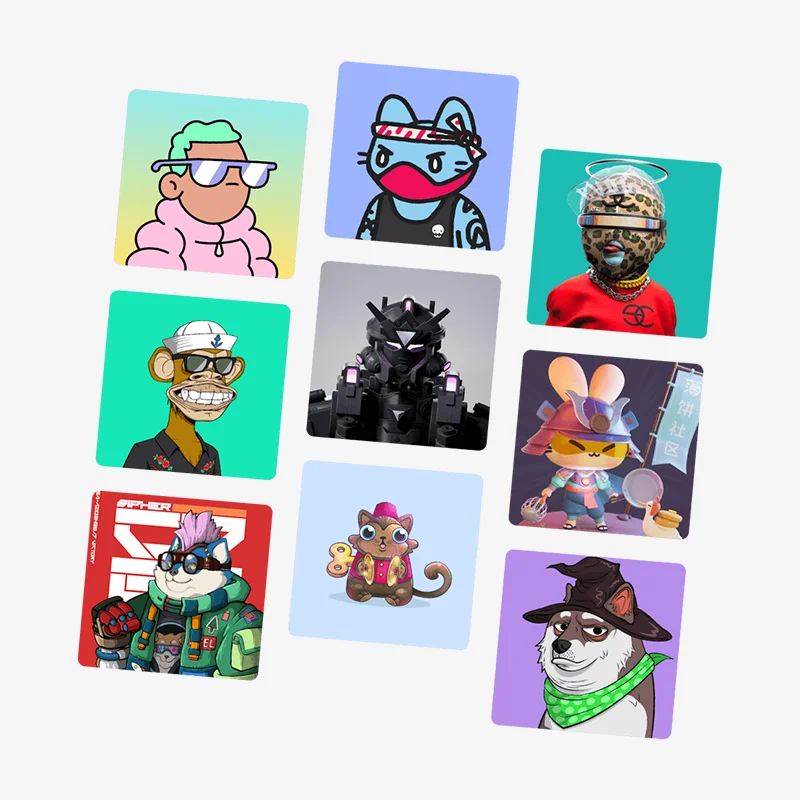
What does NFT Marketplace Means for Digital Collectibles?
NFT Marketplace Development has opened gateways for Digital Economy with every industry leveraging NFTs. In the present scenario, the NFT Market is largely driven by Digital collectibles. Why NFT Marketplace is a Game Changer for Digital Collectibles? Before NFTs, the digital files could be easily duplicated or copied making it difficult to differentiate them from original files. Thus, buying and collecting digital art or collectibles was a tedious task. NFTs have however enabled replicating certain traits that are limited to items in the physical world, like uniqueness, proof of ownership, and scarcity. This helps creators to own and sell their digital art in a true sense thus crafting a new market for their original art and collectibles. NFT Marketplace offers the creators a percentage of all future sales for their NFT Collectibles. NFTs are helping artists and creators earn additional revenue by displaying the digital collectibles on NFT Marketplace. In addition, NFT Marketplace eliminates the middleman to verify the authenticity of work, displaying the details to everyone in the marketplace. This ensures transparency. What Does a Buyer receive on Purchasing NFT Collectibles? Digital Collectible: A user buying an NFT collectible on NFT Marketplace receives a piece of digital art, video clip, trading card, photo, a piece of music, etc he or she has paid for. In other words, a user receives an NFT Collectible he made a purchase. Ownership Certificate: The NFT Development offers the certificate of ownership to the buyer ensuring the same NFT isn’t bought by another buyer. Proof of ownership is an important factor in the NFT sphere. Top NFT Collectibles to watch for? PsychoKitties: The New Era"PsychoKitties: The New Era" NFT Collectible feature 10,000 unique metaverse characters that are generated from 96 hand-drawn trains with multiple levels of rarity. Two PsychoKitties on NFT Marketplace development are not similar and hence can be owned by two different persons on Blockchain. Loaded Lions “Loaded Lions” is the 1st platform-owned profile picture (PFP) project launched in the NFT sphere. These NFT collectibles consist of 10,000 unique and algorithmically generated PFPs. Loaded Lions are the NFT Collectibles on the NFT Marketplace depicting a brave and Bold bunch always living life to the fullest. The TRIP: Genisis The TRIP: Genisis is the NFTs featuring Mushroom Character PFP collection. These NFT collectibles are a collection of 9989 unique PFPs with around 200 individual traits. Wrap UpHopefully, you have acquired enough knowledge of NFT Collectibles. For any query regarding NFT Marketplace Development or NFT Development, feel free to connect us. If you are looking for a top-notch NFT Marketplace Development Company, your search ends right here! Schedule a meeting with our team to take your project ahead.
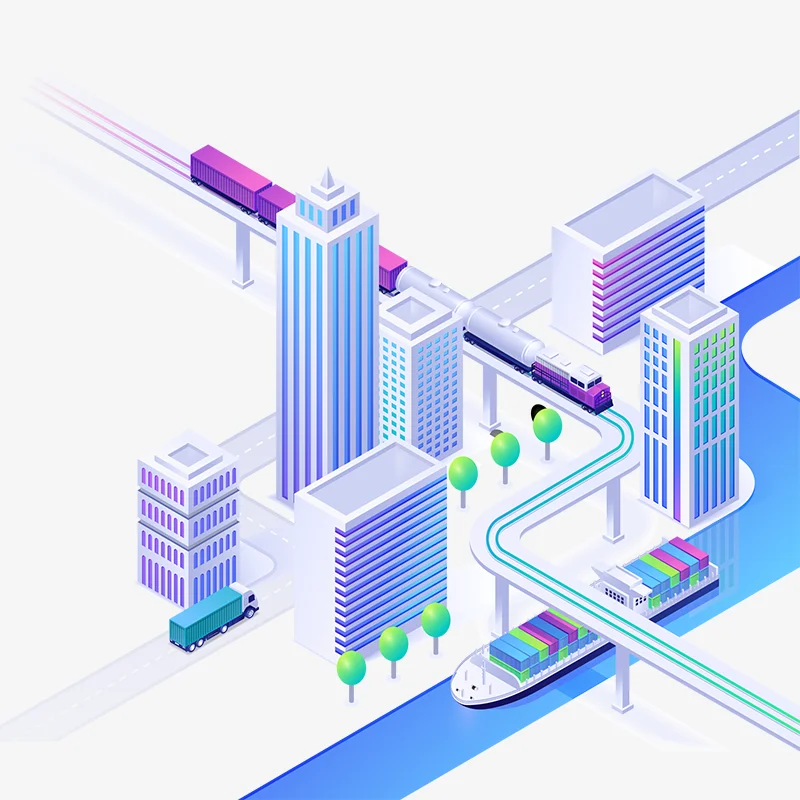
What NFT Marketplace Means for Real Estates?
NFT Marketplace Development Services are setting technological trends across industries. From record-breaking NFT arts to marketing strategies, NFT development is transforming it all. The industries changing at a slow pace like real estate have also begun leveraging NFT Marketplace Development. Three Real-World Applications of NFT Marketplace in Real Estate? Fractional Property Ownership NFT Marketplace has stormed the real estate world too. The real estate NFT refers to depicting the ownership of physical property and fractional ownership is an example of this. The property owners can sell a part of their real estate to multiple small investors by issuing tokens on Blockchain. The investors can hold these tokens to receive a rental income for the token issued. This enables people to buy or sell fractional ownership in rental estates eliminating the middle-man potentially in a liquid market. Property Sales Real estates can be converted into NFTs to own and sell them digitally. NFT-backed properties on Blockchain can be instantaneously bought and sold via Smart Contract Developments. Thus, NFTs help in increasing liquidity in the land and properties. Tokenization of property opens gateways to a wider consumer base. Mortgages NFTs in real-estates offer mortgaging since it enables shared ownership. The owner of NFT-backed property on an NFT Marketplace Development can apply for a loan through lending platforms. These lending platforms enable lenders to receive repayments using blockchains based on the amount they had lent. Top Metaverse Leveraging NFT Marketplace In 2021, NFT Marketplace witnessed a record of $4.3M paid by Republic Realm for virtual land in the Sandbox. It was the largest purchase of virtual land ever. Decentraland Created in 2015, Decentraland depicts a virtual world focused on building and owning an NFT virtual space called “land”. This NFT i.e. virtual space is divided into parcels and is bought with Mana, the cryptocurrency token for this virtual land. The transactions associated with the process are recorded on the Blockchain and the NFT is transferred to the buyer’s digital wallet. Once the user has signed up, he needs to create his digital wallet and purchase the parcel to own the land. Since the buyer has full control of his digital environment, he can build structures, develop games or even create art. Polka City Polka City is termed to be a revolutionary real estate NFT Marketplace that enables users to own virtual lands and generate income. These digital assets are contract based making it easier to generate income that is paid in the platform's native token POLC. Once you sign up with Polka City, you can choose the type of investment that suits your preference. Also, it eliminates the need to create a new Blockchain wallet, the existing Ethereum wallet can be integrated to begin earning. SuperWorld SuperWorld is an NFT Marketplace that enables users to create their own world and sell it to earn income. Its Real Estate Platform enables users to buy, trade, and sell NFT pieces of land measuring around 100m x100m in the real world. To get started with SuperWorld, you don’t need to have coding skills or experience in Blockchain. Your real-world knowledge is all you need to begin crafting your property here. The platform offers an opportunity to monetize your property through gaming, analytics, e-commerce, digital commerce, etc. Wrap UpHopefully, the above article has enlightened your knowledge of NFT Marketplace development in real estate. For further questions feel free to connect us. Are you a real estate company and have not yet stepped into the world of virtual land? Scroll yourself to our NFT Marketplace Development Services and take a look at how we can benefit your business. Hurry up! Schedule a meeting with us right away!
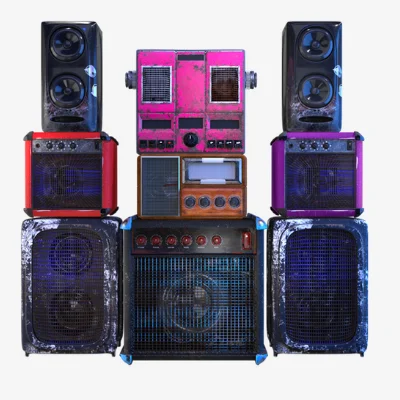
What NFT Means for the Music Industry?
The last decade, witnessed a major transformation in the Music industry with the rise of NFTs and NFT Marketplace Development. NFT development introduced a new way for artists, singers, and musicians to monetize their work.What is Music NFT? Music NFT depicts a certificate of ownership for a unique musical work delivering the exclusive rights of the original content to the creator. An artist can create NFTs of videos, artwork, or even music and monetize them to earn additional revenue. How NFTs are Transforming the Way Music Sounds? The music industry has a huge fan base and minting music NFTs on NFT Platforms is a way for artists to build a sentimental connection with the fan base. NFT platforms introduced a new way to connect fans and musicians, monetizing the music by selling them directly to fans. Additionally, the artists can earn royalties in the secondary market for every sale of music NFTs. Trading music NFTs on NFT Marketplaces has always been a craze. Today, a few of the emerging platforms are exclusively focused on trading and minting music NFTs. The musicians and celebrities are leveraging the NFT Marketplace Development Services, as an advertising medium to stay ahead of the competition and increase their brand presence. Music NFTs are not just a buzz but, have turned into a crucial part of marketing strategy for musicians. How to Create Music NFTs?Creating NFTs refers to minting the NFTs that begin with the original piece of art, music, video, 3d animations, gifts, and images. Post creating your Music NFT, it’s time to choose the NFT Marketplaces like OpenSea, Rarible, etc. You can also create your NFT Marketplace with Blockchain development companies like RWaltz. Post choosing the NFT platform, integrating “Ethereum Wallet” is crucial. NFT Marketplace like OpenSea asks for Metamask integration that can be directly accessed on OpenSea. You can download the Metamask chrome extension to create your account. Minting NFTs will require funds in the Ethereum wallet to pay the “Gas Fee” which is a one-time payment required for each transaction on OpenSea. The last step is creating the account on NFT Marketplace Development you choose and crafting a collection to list your Music NFTs. Which are the top Musicians to leverage NFT Marketplaces? Kings of Leon Kings of Leon turned one of the 1st bands to craft an NFT for their latest album “When you See Yourself”. With the sale of these NFTs, they generated $2 million with six golden ticket auctions.Steve Aoki Steve Aoki, the superstar American DJ and producer earned $4.25 Million with his debut NFT Collection called Dream Catcher. He sold his NFT collections on one of the leading NFT Marketplaces. EminemEminem’s 1st NFT collection, “Shady Con” garnered great success with it being sold on one of the leading NFT Marketplace at the end of April. With the sale, Eminem earned $1.78 Million. This NFT collection was a big hit as it comprised some iconic characters from his music videos.GrimesTikTok’s most popular communist, Grimes launched his NFTs titled “Earth” and “Marks” which brought him the bulk of sales accounting for $7 Million. His video NFT “Death of the Old” managed to earn $389,000.RACThe Grammy Award Winner and the Portuguese-American producer RAC released NFTs related to his new record “YOU”. He earned $708,000 which was more than his combined album sales. Let’s ConcludeHopefully, we have enlightened your knowledge on Music NFTs and NFT Marketplace Development. If you have questions, feel free to connect with us. Are you looking for an NFT Marketplace Development company? Take a look at our services and schedule a meeting right away to discuss your project idea. Let’s together take your NFT project ahead! Hurry up! Lead the competitive edge with our robust NFT marketplace development services.

What does NFT Marketplace Mean to the Gaming Industry?
NFT Marketplace Development is inevitably taking off in the Gaming industry too. Gaming NFT is 2022’s biggest NFT trend, their impact on the world’s 3 billion gamers is hard to ignore.What are Play-to-Earn Games?A gaming NFT platform combines conventional gaming designs and unconventional gaming mechanisms enabling users to have more control over in-game assets. These digital assets are distinguishable and tamper-proof since they are NFTs. The acceptance of NFT Marketplace and NFT token standards enables developers to preserve the uniqueness of these in-game assets like skins, characters, weapons, virtual lands, and much more.This NFT-based ecosystem enables the players to claim ownership of game assets through 3 main gaming strategies. These strategies include creating or breeding new characters, purchasing digital items on native or NFT Marketplace, or unlocking and earning new NFTs. Any one of these strategies you choose will help to earn exclusive ownership of in-game NFTs. These NFTs can be sold to make profits from the trades. Thus, this NFT-based gaming model is called play-to-earn gaming.Why Gaming NFT is Booming? Gaming NFT Marketplace helps the business owner to attract venture capital For every NFT token transacted through the gaming platform, the owner can charge a transaction fee to earn additional income Gaming NFT Marketplace offers to play to earn business model with more flexibility and security The gamers are attracted to the gaming NFT market since they have full control of their in-game assets NFT gaming has opened a unique way for businesses to advertise and market themselves.Which are the Top Gaming NFTs?Axie InfinityAxie Infinity is a Gaming NFT Platform inspired by the Pokemon game series but, with a blockchain twist making the game more exciting. This is an Ethereum-based game, where players breed and collect NFT-based digital pets called Axies. Each Axie has its own genetic imprint and these digital pets are tradable on Ethereum NFT Marketplace. The price of each Axie depends on its rareness and unique traits.Axie Infinity has gained momentum in developing countries like the Philippines, where players earn substantial income by playing NFT games. To begin playing this game, the player needs to purchase 3 Axies. For battle, quest, and adventure mode, the player receives Smooth Love Potion (SLP)- its native utility token as a reward.SplinterlandsSplinterlands depicts a free-to-play NFT-based tradable card game enabling users to earn as they play. The gamers earn rewards when they win card matchups. This gaming NFT Development is built on the Hive chain.To begin playing Splinterlands, the gamers need to buy a starter pack of cards, register a Steem account and unveil these purchased cards on the gaming platform. There might be a possibility that the gamers are lucky enough to have unique and rare cards in their 1st purchase. Also, the probability can be that similar cards appear multiple times. With multiple similar cards, gamers can combine them to boost their powers or sell them to receive cryptos.Star AtlasStar Atlas is one of the most anticipated gaming NFT platforms that is setting new trends in the NFT sphere. This play-to-earn game is a blend of expansive space exploration gameplay, carefully designed strategy elements, and top-quality graphics.This gaming NFT platform is centered around space exploration, mining, and development. It offers the players the flexibility to create their starship, crew, and avatars while setting up mining facilities as they venture across the universe. Most in-game assets are represented on Blockchain as NFTs and will be tradable on Star Atlas NFT marketplace.Wrap UpHopefully, the article has enlightened you on gaming NFT Marketplace Development. If you have any queries, feel free to connect with us!Are you looking for NFT Marketplace Development Service for your gaming platform? Your search ends here with RWaltz- a reliable NFT Marketplace Development Company. Hurry up! Schedule a meeting with our experts right away!

What NFT means for Sports Industry?
The adoption of NFTs is spreading like a wildfire across industries and sports isn’t an exception to this. With 8000+ sports played in the world, NFTs and NFT Marketplaces are disrupting the ecosystem for fans, players, brands, clubs, federations, leagues, and IP owners. What is Sports NFT?Sports NFTs refer to digital collectibles and trading cards of sports celebrities or teams. The Sports NFT is defined as a distinct and non-interchangeable record on a digital ledger. These Sports NFTs can include popular sports moments, athlete assets like bats, jerseys, etc., and trading cards. What are the Types of Sports NFTs? Sports NFTs help the athletes to establish an emotional connect with their fans by creating their NFTs and auctioning or selling them.Trading Cards: Trading card NFTs are popular in some international sports like Baseball, Hockey, and American Football. Besides provoking a nostalgic feeling, collecting the trading cards is a unique way to support your favorite athlete. Athlete Assets: Athlete assets like jerseys, wristbands, socks, boots, signature bats, etc. have a great hype amongst the sports Fanclub. Athletes have moved these assets to NFT Marketplace, integrating NFTs into their advertising strategy. Historic Moments: Historic moments are cherished by fans in every sport and crafting NFTs of such videos has been the latest trend amongst athletes and sports federations. Tokenizing such moments helps sports federations to build curiosity and enthusiasm for their favorite teams and athletes during the sports leagues. Memorabilia: NFTs of Autographs, Trophies, and awards can also be created to establish an emotional connection between the fans and the athletes. Why are NFTs and NFT Marketplaces Important for Sports? Revenue:The primary goal of creating Sports NFTs is to generate revenue for the creators. Every time the NFT is sold the creator will receive some percentage of the NFT sale. Sentimental Connection:Sports NFT help the athletes, sports federations, and teams to generate emotional connections with their fans by auctioning NFTs of their favorite stars. Add Brand Value:NFT Marketplace Development Service is the new sensation in the Sports industry. Leveraging Sports NFTs will help the athlete to garner more popularity and stay ahead of its competitors.Royalties:Trading sports NFTs offer substantial value on the NFT sales in addition to the royalties on secondary sales. Liquidity:Sports NFTs offer quick liquidity, with a massive amount of fans holding NFTs assets of their beloved athletes. Wrap UpWe hope that the above article has enlightened your knowledge of Sports NFT. If you have queries, you can connect to our experts at any time. Are you an athlete or run a Sports Federation? Are you looking for a robust NFT Marketplace Development Company, click here to check what we can offer you. Hurry up! Schedule a meeting right away and let’s discuss your project idea.

Art NFT: What it Means for the Creative Industry?
Art NFT is making a way into the creative industry generating opportunities for artists to list and sell their artworks. NFT Marketplace Development Services offer a virtual museum to the creative industry.What is an Art NFT? Art NFT refers to collectible digital assets to be traded on the NFT marketplace. Art NFT enables the artists to create NFTs of their unique artworks like paintings, sculptures, etc., and list them for sale on NFT Marketplaces. These NFTs carry a digital certificate of ownership showcasing the ownership of the asset produced. What makes NFTs valuable in the art market? Ownership of Digital ArtNFTs and NFT Marketplace emerged as a solution to authenticate the original digital art. It enables the artists to create an NFT of their unique digital art. Crafting an immutable record in Blockchain thus certifying it to be original and unique. Art NFTs enable artists to monetize the artwork by selling them directly to the buyer. Generate RevenueArt NFT has introduced a new way for artists to monetize their artworks. The NFT Marketplace Development for artists brought a quick and accessible way to produce artworks and reap rewards without having to chase payments. Also, some NFT Arts offer royalties to the artist. Every time the NFT is sold, the creator will receive 8-10% off the sale. The percentage will vary depending on the NFT Marketplace, the artist is using. Global Reach NFT Art has moved the art museums online, delivering a plethora of opportunities to artists for listing their artworks on a global scale. NFT Marketplace Development has helped the artists to sell their work to the buyers eliminating the documentation work. This was a bit difficult physical museum since many artists didn’t have access to the buyers on a global scale. Not only artists but, creative designers have also started leveraging NFT Marketplace Development Services to gain exposure for the creative designs in the NFT Market. The designers are creating unique masterpieces and integrating branding strategies to establish an emotional connection with the audience turning them into buyers. Art NFT has eliminated the need for buyers to visit the museums, anyone from anywhere can buy the Art NFT if he has access to the NFT Marketplace. How Can the Artists Capitalize on NFTs? Create and Sell NFTsCreating NFTs of artworks and selling them on the NFT marketplace is the primary way to capitalize on Art NFTs. Digital artists and content creators are crafting NFTs to sell their artworks and reach the secondary market. With every future sale of NFT, the creators earn a royalty income for the original masterpiece. Since NFTs are meant to be timeless, they help artists to construct an unbreakable revenue stream.Invest and Trade NFTsInvestors and collectors interact with NFT Marketplace similar to the way they engage with the stock market. They invest in NFTs, wait for value appreciation, then sell and earn profits. Launch your NFT MarketplaceAnother way to capitalize on Art NFTs is to launch an NFT Marketplace for artists to display their artworks. The artist can opt for his own NFT Marketplace, urging creators to list their NFTs for sale. This will help the artist to generate revenue by receiving the commission from the creators.NFT trading on NFT Marketplace will create a business model for the owner of the marketplace may be an artist or an investor. Companies like RWaltz, offer customized NFT Marketplace Development Services based on the requirements and specifications of the clients. Creating a customized NFT Marketplace with an intuitive interface will garner the attention of artists on a global scale leading to increasing sales on your marketplace and ultimately generating revenue. Here are some NFT projects by RWaltz- a Robust NFT Marketplace Development Company: Meta Master Guild Gaming NFT NFT Marketplace Development ARTII NFT MarketplaceWrap UpHopefully, the above article has enlightened you on the importance of NFT Art in the Creative industry. For further queries, feel free to connect with our experts. Are you an artist and looking for a way out to earn additional revenue? Take your artworks digitally and create your NFT Marketplace for Artists and investors across the world. Hurry up! What are you waiting for? Grab the opportunity and schedule a meeting with our experts to avail our customized NFT Marketplace Development Service.
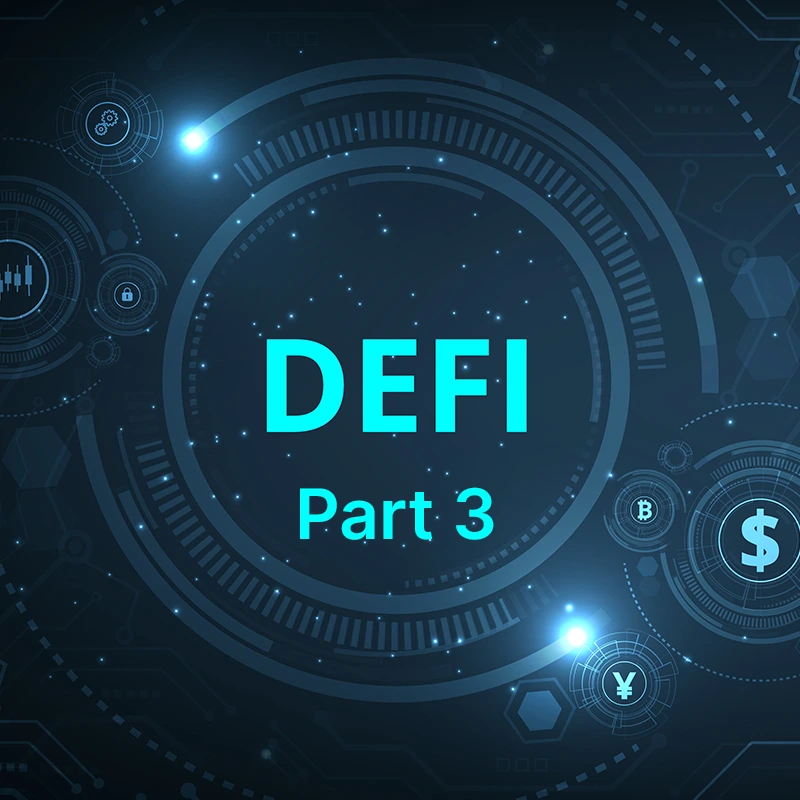
A Deep Dive into DeFi Lending and Borrowing
Decentralized Finance (DeFi) Development Services are gaining momentum with the rising population going digital. DeFi has a wide array of applications in the finance sector, out of which we will dive deep into DeFi Lending and Borrowing. What is DeFi Lending / DeFi Borrowing? DeFi protocols enable users to act as lenders or borrowers in a completely decentralized fashion ensuring the individuals have control of their funds. Decentralized Finance is backed by smart contracts that serve as a digital intermediary between lenders and borrowers. DeFi Lending refers to crypto holders or lenders supplying their tokens or coins into the money market to lend funds to the users and earn passive income or interest on these assets. It is similar to traditional banking with a thin line of difference that DeFi lending operates peer-to-peer eliminating the third parties. DeFi Borrowing refers to users taking a loan from the crypto holders on a decentralized platform through P2P lending. The borrowers offer an asset that can be summed equivalent to the loan amount to borrow the funds from the lender. What is Asset Collateralization in DeFi?Asset Collateralization is termed as a fundamental concept in DeFi, where the borrower pledges an asset for the lender to recover their capital if the borrower defaults on the loan. When a user borrows some assets from the liquidity pool, the user needs to provide the pool with some collateral. In case, the user fails to repay the debt to the pool, the lending protocol doesn’t repay the collateral to the borrower but instead uses the assets to repay the debt to the pool. What is Asset Overcollateralization in DeFi? The borrower on the DeFi platform must deposit a crypto asset that records a higher percentage value that the value of assets borrowed. It is beneficial to leverage asset overcollateralized loans for borrowers only if the end investment raises in value speedier than the interest on the debt. In case, the value of the collateralized asset falls below the total debt price, the borrower may not repay the loan causing it to become insolvent. How Does DeFi Lending / Borrowing Work? DeFi Lending enables anyone to be a lender. A user holding Crypto assets on DeFi can lend the assets to others and earn interests on that loan. The lending process is carried out by the lending pools, where the users can pool their assets and distribute them to borrowers using smart contracts. Since a wide array of ways are available to distribute the interest to investors, the lenders need to research and identify their type. Also, the borrowers need to research lending pools as they have different approaches to borrowing. The borrower needs to deposit collateral via Smart Contract on the DeFi Lending platform that matches the value of the loan amount before borrowing the asset. The collaterals might vary from cryptocurrencies to tokens. There might be a possibility that the value of collaterals to drop down below the debt value. In this case, this will lead to a liquidation penalty. Wrap UpHopefully, the above article has enlightened you on DeFi Lending / Borrowing. If you have queries, feel free to connect with our experts. Are you looking for a reliable DeFi Development Company? If yes, you have landed at the right place! Scroll your cursor to our DeFi Development Services and let’s discuss taking your project ahead.
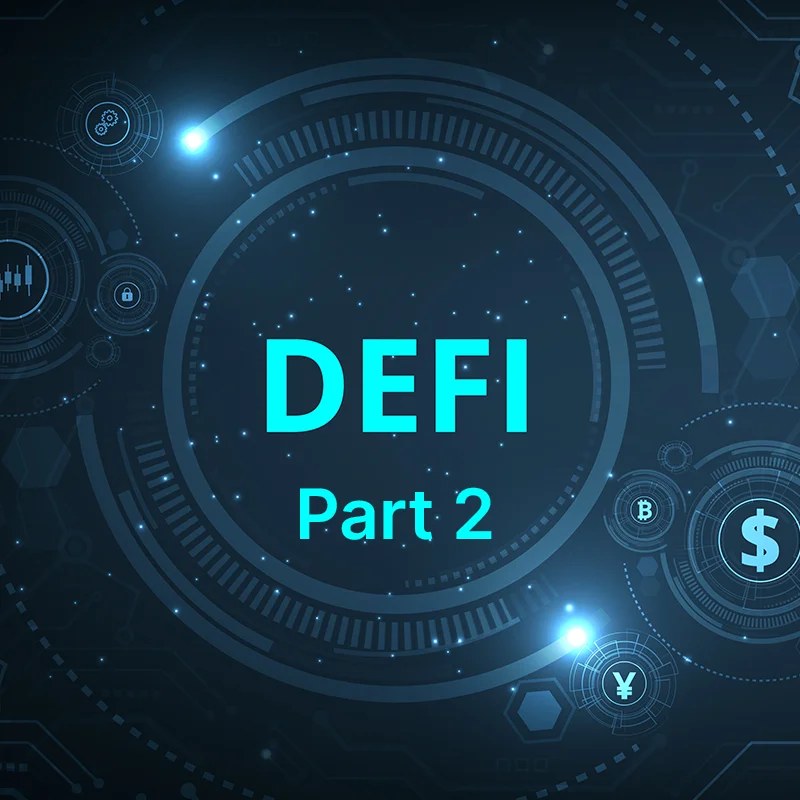
Understanding DeFi Tokens, Defi Wallet, and Defi Exchange
DeFi stands for Decentralized Finance, which utilizes smart contracts instead of traditional financial utilities.What is a DeFi Token?DeFi Tokens are referred to as Ethereum Tokens and they carry a significant market capitalization. They enable users and traders to access financial services in a newly crafted DeFi application. These DeFi tokens enhance major DeFi features like borrowing, lending, investing, staking, trading, and risk management. DeFi Development Services offer Defi Tokens that are divided into three categories:Fee TokensFee tokens are referred to as DeFi tokens that claim a set percentage of fees generated by a specific DeFi protocol. Each DeFi protocol attracts usage fees from the users. A buy and burn mechanism can be used to increase the value of tokens by making them deflationary in nature. Governance TokensGovernance tokens gained momentum with users interested in the growth of the DeFi protocol. The developers of the DeFi protocol can propose the edits and governance tokens can be used by the community members to vote on these proposals. A few times the functionalities of fee tokens and governance tokens are combined into a single token. Collateral TokensCollateral Tokens are defined as DeFi tokens whose price is pegged to the price DeFi protocol is trying to hold. These tokens are crucial for protocols creating synthetic assets.What is a Defi Wallet? A DeFi Wallet depicts a non-custodial wallet that stores cryptocurrency assets. In other words, the custodial wallet means users with seed phrase or private key are given access to your funds. A DeFi wallet is flexible delivering access to a wide array of applications. These wallets enable the complete control of funds by the owner eliminating the third-party interruption. A few popular DeFi Wallets are: Gnosis MetaMask MyCryptoWhat is DeFi Exchange? DeFi Exchange depicts a DeFi platform or an application, which can be used to lend or borrow funds from others, avail insurance against risks, trade cryptos, and earn rewards. These platforms generally do not offer custodial wallets. These platforms enable users to connect through a web3-enabled browser extension or non-custodial wallet like MetaMask. Once the wallet is integrated with the platform with the wallet, cryptos can be exchanged on the DeFi exchange. Popular DeFi Exchanges: Uniswap SushiSwap KyberWrap Up DeFi tokens, DeFi Wallet, and DeFi Exchange fall under the umbrella of DeFi Development. Are you looking for a reliable DeFi Development Company? Scroll yourself to our services and schedule a meeting right away!If you have any queries, feel free to connect with our experts!
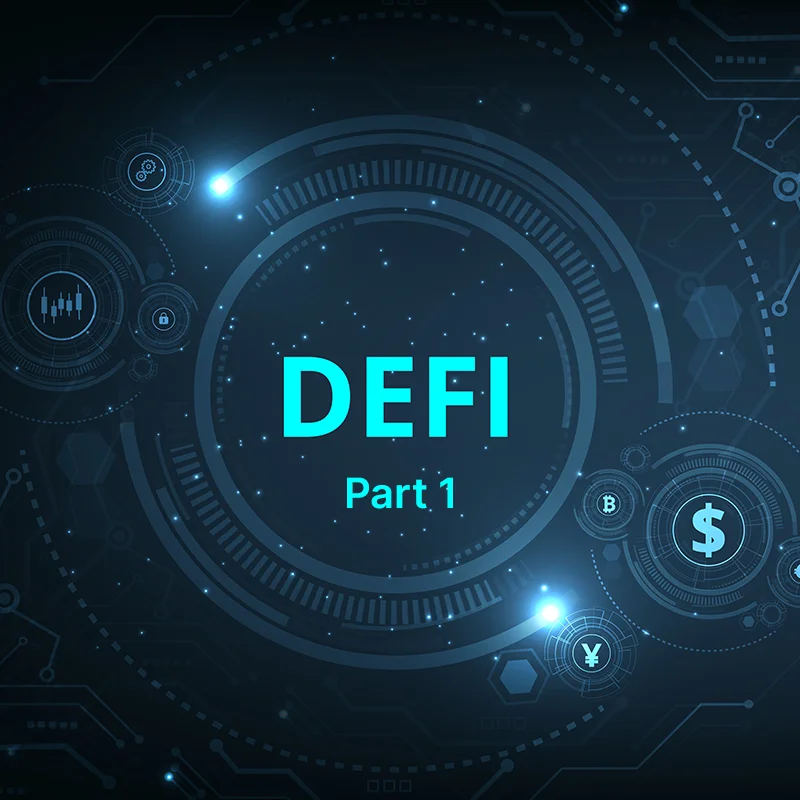
Interesting Takeaways of DeFi Staking
What is DeFi Staking? DeFi staking refers to the locking of Crypto Tokens into a smart contract in exchange to turn a validator for a DeFi protocol and earn additional tokens as a reward. In simple words, it is a practice that enables the user to act as a validator for transactions and receive rewards for the staked assets on the DeFi platform.With the dawn of crypto and Decentralized Finance (DeFi) Development Services, DeFi staking opened the gateway to earn additional profits from crypto assets.What are the Types of DeFi Stakes? Staking Staking involves locking a defined amount of crypto assets to become a block validator in a proof of stake (PoS) Blockchain network. PoS relies on validators to validate the transactions and thus the validators should perform their duties meticulously or else there can be a risk of losing complete stake. In addition, the validators receive staking rewards for creating and validating blocks.Yield FarmingYield Farming is defined as the practice of moving numerous crypto assets to DeFi staking platforms and churn out maximum profit from them. The assets are available on a lending protocol or a liquidity pool to earn a passive income in the form of interest. Also, the users can earn a portion of their revenue generated by the Defi staking platform of their choice.Liquidity Mining Liquidity Mining is termed a subcategory of yield farming that comprises depositing crypto tokens or coins to liquidity pools. These pools play a vital role in Automated Market Maker, where trading is enabled without intermediaries. In general, a liquidity pool has two assets making up a trading pair. Here, the entire system relies on liquidity providers who ensure asset availability at the pools.What are the Benefits of DeFi Staking? DeFi Staking has a wide array of benefits for stakers, staking platforms, and Tokens/Protocols/Blockchain Networks.Benefits of DeFi Staking for Stakers A way to earn passive income Staking with DeFi tokens will help you earn much higher rewards DeFi tokens are protected with highly secure smart contractsBenefits of DeFi Staking for Staking Platforms Increased Liquidity Earn revenue from stakers and networksBenefits of DeFi Staking for Tokens/Protocols/Blockchain Networks DeFi Staking offers to maintain liquidity Energy consumption is low for validating blocks offers dynamic token market capitalizationWrap UpHopefully, the above article has enlightened you on DeFi Staking, Types of DeFi stakes, Proof of Stake, and Benefits of DeFi Staking. In case, you have any doubt feel free to contact us.Are you looking for a DeFi Development Company? Your search ends here, we are the right choice for you! Make a DeFi move with us and schedule a meeting with our experts now.
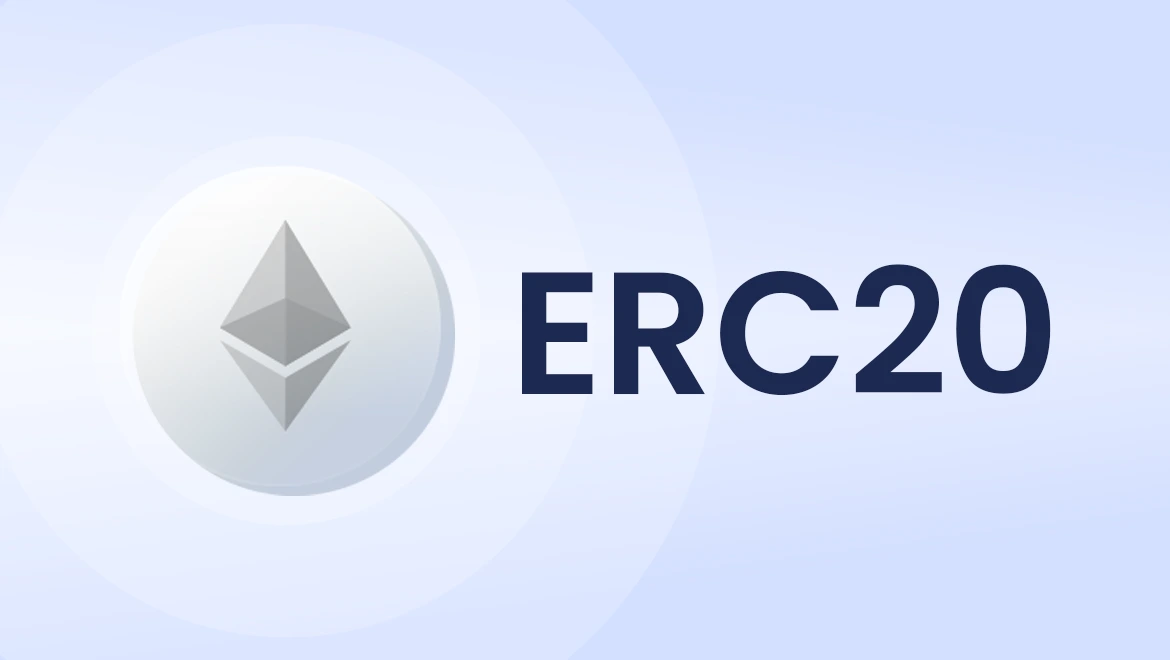
Ethereum Token Standards
Token Standards are defined as the subsets of Smart Contract standards. For Blockchain supporting smart contracts, token standards generally depict how to create an issue, and deploy new tokens based on their underlying Blockchain. In the present scenario, Ethereum is the most commonly used Blockchain to develop Smart Contracts.What are Ethereum Token Standards?Ethereum Request for Comment (ERC) depicts application-level blueprints and conventions in Ethereum. These token standards include the rules that Ethereum-based tokens must comply with. Popular ERC standards describe a required set of functions for a token type, enabling the applications and smart contracts to interact with them predictably.Let’s dive in to explore some popular ERC standards:1. ERC20:ERC20 is the most popularly used token standard on Ethereum. It depicts a technical standard for tokens on Ethereum, offering a list of rules for all Ethereum-based tokens. The ERC20 token is a simple interface that enables creating tokens on Ethereum that can be reused by applications like Defi.2. ERC721:ERC20 token standard defines the fungible tokens while the ERC721 token standard depicts the non-fungible tokens on Ethereum Blockchain. NFT or non-fungible tokens have unique characteristics differentiating them from one another making them a medium to represent collectibles, games, digital arts, domain names, etc. The ERC721 token standard depicts the minimum interface a smart contract will implement to enable crypto collectibles to be owned, managed, and traded.3. ERC777:ERC777 addresses the limitations of ERC20 while being backward compatible. It defines the advanced features for interacting with the tokens like sending/ receiving tokens on behalf of another address. It enables users to reject the incoming tokens from backlisted users.4. ERC1155:ERC20 and ERC721 token standards require a separate contract to be deployed for each type of token. ERC1155 token standard is used to deploy contracts that can manage multiple token types (ERC20, ERC721) at once ensuring cost-effective transactions. Trading multiple tokens can be implemented through this contract and it eliminates the need for approving individual tokens separately.5. ERC2981ERC2981 is a standard way to retrieve information on royalty payments for NFTs (Non-fungible Tokens) enabling universal support for royalties across NFT Marketplaces. It enables ERC721 and ERC1155 interfaces, to signal a royalty amount, a NFT Creator is paid for every sale of that NFT.If you are looking for Token Development Services, get in touch with us. connect to our experts and share your token ideas with us.
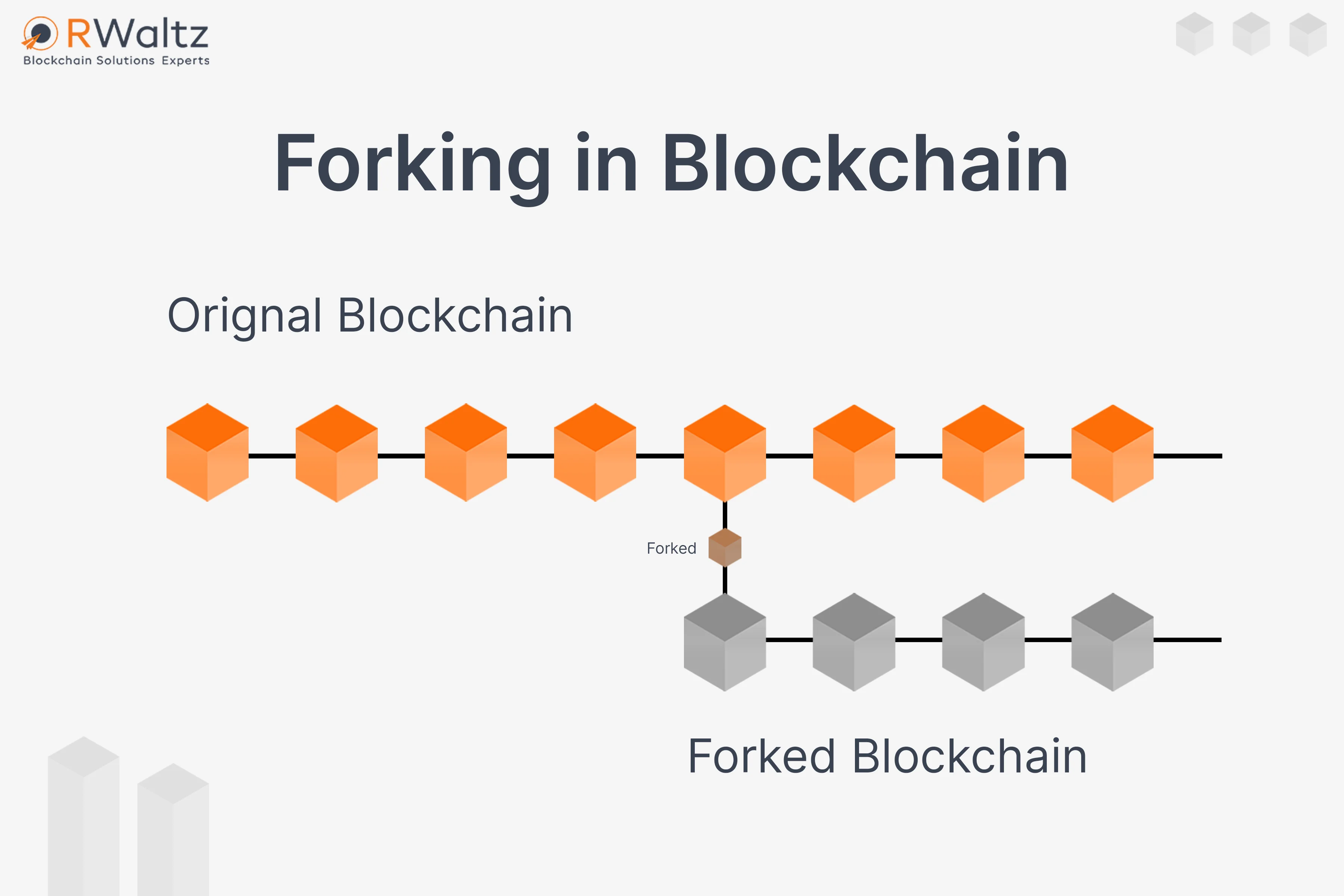
Understanding Forking and its Types
A Fork takes place whenever there is a change in the Blockchain protocol or basic rules. This change in the protocol splits the chain creating a second Blockchain. Thus, Blockchain forks are defined as a split in the Blockchain network. Forks take place when the software of different miners is misaligned. The decision to choose Blockchain resides with the miners and if it isn’t unanimous, then two versions of Blockchain are formed.Types of ForksHard ForksA hard fork is defined as a radical change to the software ensuring users upgrade to the latest software version. It is a change in the rules such that software validation based on old rules will have the blocks created according to the new rules as invalid. Hard fork involves, all nodes upgrading their software based on new rules. In case, one group uses the old software while the other use new software, a permanent split may take place. Soft Forks A soft fork is defined as a change in Blockchain which might occur when old nodes don’t follow a rule that is followed by the new nodes. It is backward compatible. A soft-fork involves the upgraded blockchain validating the transactions, where the nodes that are not updated will still see the blocks as valid. Temporary ForkWhen multiple miners mine a new block simultaneously, the network might not agree to the new block choice. Some may agree to a block mined by one party while others may agree to the alternatives available. This situation occurs because it takes some finite time for the propagation of information across the network which may lead to conflicts in the chronological order of events.We hope that the above KB has enlightened you on Forking and its types. Are you looking for Enterprise Blockchain Development? Scroll yourself to our services and schedule a meeting right away to take your project ahead with RWaltz - A Enterprise Blockchain Development Company.
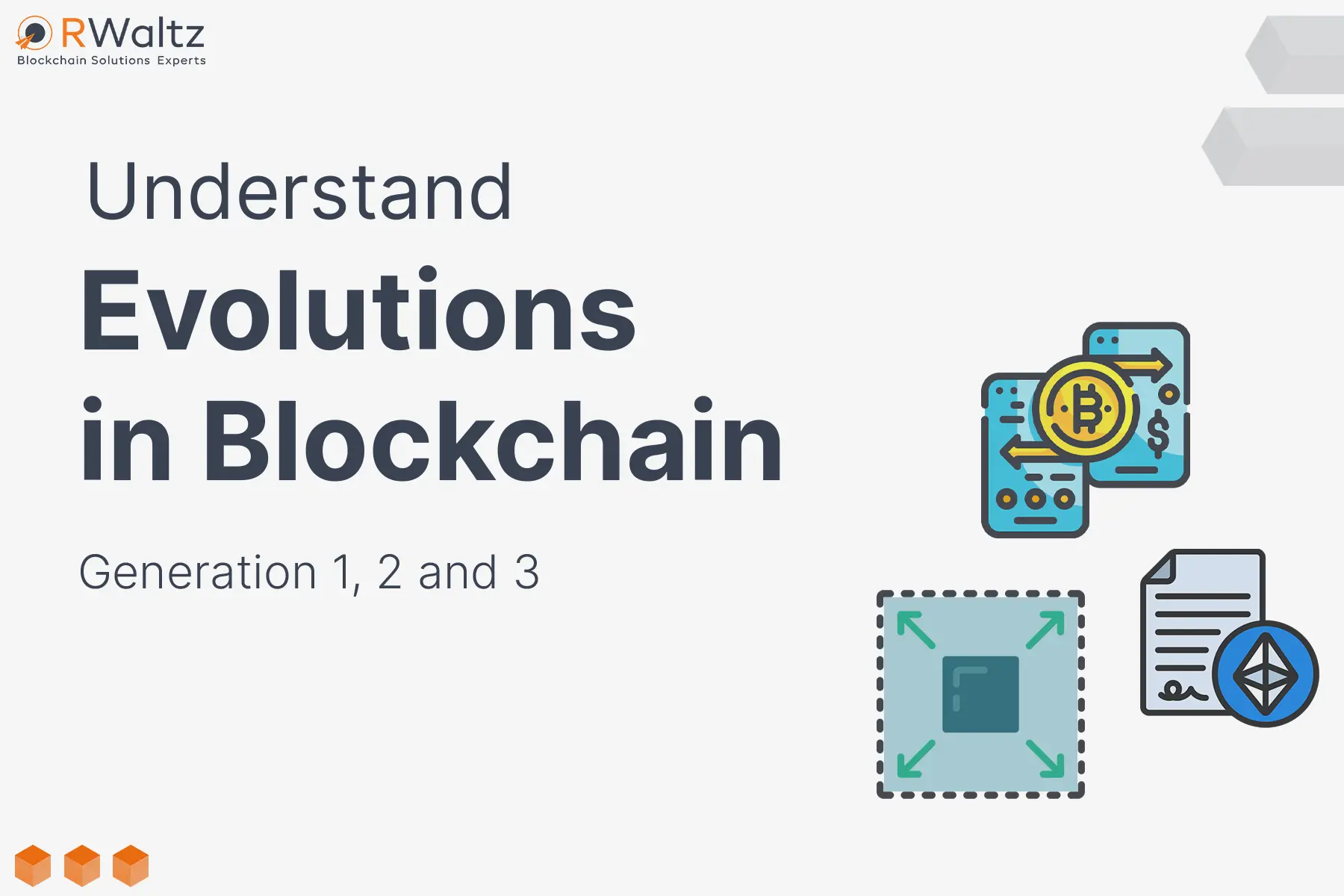
Understand Evolutions in Blockchain
The wide adoption of Blockchain has led to researchers and contributors continuously upgrading this open-source technology. In the present scenario, we have witnessed an evolution of Blockchains for a decade right from the currency to the centralized systems. Let's dig deep to understand the evolution of blockchain from Generation one to the current third generation. Generation 1 Blockchain:Bitcoin is the best example of the generation one blockchain which was used for peer-to-peer currency exchange. That was the only basic purpose of the blockchain in the first generation. Litecoin and Monero are some examples of first-generation blockchains.Let’s name Generation 1 Blockchain as Peer to Peer Generation.Generation 2 Blockchain:At the early adoption of bitcoin, ethereum was launched which disrupted the cryptocurrency market. As ethereum came up with the addon over the blockchain which is smart contracts.Smart contracts enabled blockchain to level up with the use case which was limited only to currency exchange. People could develop applications using smart contracts on the blockchain.Let’s name Generation 2 Blockchain as Smart Contracts enabled Generation.Generation 3 Blockchain:Generation 3 Blockchain was again a motivation because of the drawbacks of the previous generation. People could create the applications but it tested the transaction speed of the Blockchain which was not ready to serve the response that it got. The Foundation of the new blockchains was to overcome this problem and solve the issue of scalability. Solana, Cardano, and Polkadot are some of the Third Generation Blockchains.Let's name Generation 3 Blockchain as Scalable Blockchains.If the above information has kindled your interest then, subscribe to our mailing list and share the information with your network. RWaltz Software is a leading development company in the space of Crypto and Blockchain and has Dev Team that keeps itself updated with the new technologies flooding the market. If you are looking for crypto or blockchain application development, you are moments away to get the best team in this diverse concept. Reach us today in any medium of your choice.
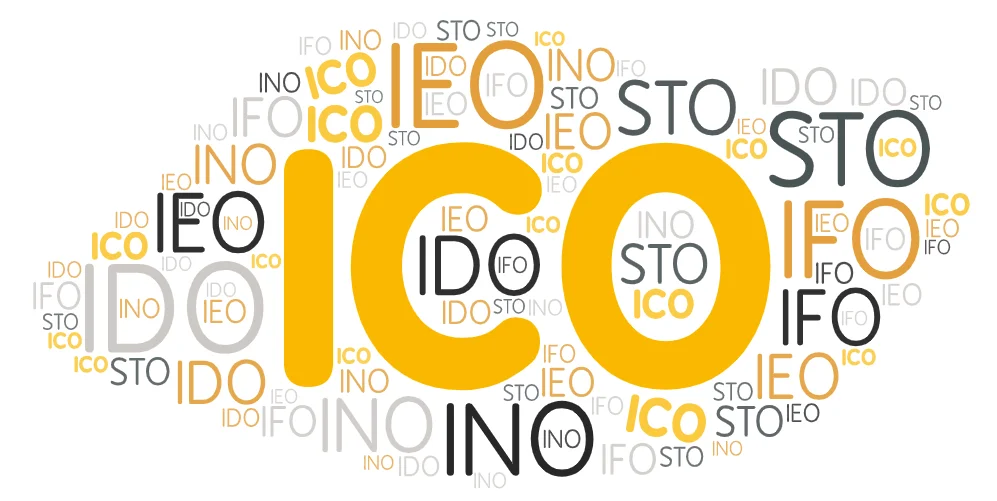
Understanding ICO, IDO, IEO, STO, INO Fundraising models in Crypto
What is an Initial Coin Offering(ICO)? An initial Coin Offering (ICO) in the crypto world is considered to be equivalent to an Initial Public Offering (IPO). Initial Coin Offering depicts a fundraising model that helps raise capital in the cryptocurrency industry. A company or new coin wanting to raise money can launch an ICO to raise capital. The interested investors can buy the initial coin offering to receive a new crypto token issued by the company. Initial Coin Offering begins with a new or an established company looking to raise capital for its growth. It is a crowdfunding event to raise money for a new cryptocurrency asset, company, or venture.What is Initial DEX Offering(IDO)?Initial Decentralized Exchange (DEX) Offering is a crypto token offering running on a Decentralized Exchange. Liquidity pools (LP) play a crucial role here by creating liquidity post-sale. Delivering a cost-effective and easier way for projects to distribute tokens, the initial DEX offering during a token generation event lets users lock their funds in exchange for new tokens. Initial DEX offering is referred to as a successor to ICOs and IEOs, where it aims to raise funds and bootstrap a project. Unlike ICOs and IEOs, where tokens are sold before listing, IDOs are listed immediately on a decentralized exchange. What is Initial Exchange Offering (IEO)? An Initial Exchange Offering (IEO) is defined as a fundraising model that is managed by an exchange platform. Unlike ICO where the project team is responsible to conduct the fundraising, in an Initial Exchange Offering fundraising is carried out on an exchange platform. In IEO, the users can directly purchase tokens with funds available in their exchange wallet. IEO is easy to manage fundraising model, where users just need an account on the exchange platform with some funds in it to participate. The IEOs offer a high-degree trust and transparency, where the exchange is staking its reputation for a project on its platform. What is Initial Farming Offering (IFO)?Initial Farming Offering (IFO) is defined as a fundraising model that helps newly launched Defi projects raise capital by participating in pre-sales events. IFO is considered to be the successor of Initial Coin Offering (ICO), depicting a crowdsourcing method used by crypto projects to raise capital in the early stages. Investors can raise the capital required for the available projects by participating in the re-sales event hosted by the DEX. IFOs are both similar and different to IEOs and ICOs simultaneously, serving as a way to raise funds for crypto projects. What is Initial Liquidity Offering (ILO)? Initial Liquidity Offering (ILO) refers to a fundraising model where a new token is offered to the buyers agreeing to contribute to the liquidity pool. This ensures that Automated Market Maker (AMM) can function since the token is attracting new buyers. It enables multiple projects and startups to raise funds by selling tokens on Defi-based DEX platforms without the need to perform ICO. ILOs can be easily performed on Defi-based DEX platforms since they hold a huge number of investors who might be interested to purchase the crypto tokens immediately for a higher price. These DEXes leverage the AMM mechanism, where liquidity pools are managed by highly skilled liquidity providers. What is Initial NFT Offering (INO)?NFTs have played numerous roles in reaching out to the target audience and creating a buzz for either new tokens or any business. NFT can be used as a marketing tool to attract customers offering them some sort of advantage that is providing some utility to the NFT holder. At such moments initial offering of NFT is the chance for the customer to acquire the NFT and avail of the utility for a particular project.This INO (Initial NFT Offering) can be a marketing tactic or fundraising model. The main thing is to check the number of people who are attracted to the use case and the popularity of the project. Sometimes free NFT offering can come up with a few tasks to accomplish which aid in spreading the project to more people.If you want to develop any fundraising models, please feel free to contact RWaltz - a Crypto and Blockchain Development Company.
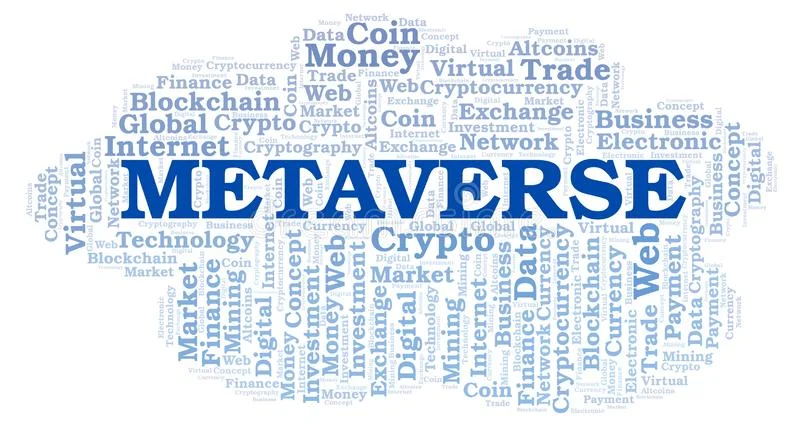
Metaverse - The Next Revolution in the Crypto World
What is Metaverse?The Metaverse depicts an idea of a persistent, online, and 3D universe; combining a variety of different virtual spaces. It can be defined as a future iteration of the internet. Metaverse is a concept that will enable users to work, meet, play games, and socialize together in the 3D space. In the present scenario, Metaverse is partially in existence through video games that offer the closest metaverse experience.Metaverse is the next big thing in the crypto world. Cryptocurrencies can be leveraged for Metaverse since they enable the creation a digital economy with a wide array of tokens and virtual collectibles. However, Metaverse will be driven by an augmented reality where every user will control the character. Besides, gaming and social media Metaverse will combine economies, decentralized applications, digital identity, and other applications. Metaverse will transform the way businesses take place in the coming days and the way people interact with each other, believe market experts.What are the core attributes of a metaverse?The most popular ideas about the Metaverse come from science fiction. The Metaverse is frequently depicted in this context as a kind of digital "jacked-in" internet — a manifestation of actual reality but one grounded in a virtual (often theme park-like) world. So, the core attributes of the Metaverse can be identified as: Synchronous and live: While pre-scheduled and self-contained events will occur, the Metaverse will be a living experience that exists continuously for everyone and in real-time, just as it does in "real life."Persistent: It never "resets," "pauses," or "ends," — it just keeps going endlessly.Available individually and concurrently: Everyone can be a part of the Metaverse and take part in a specific event/place/activity simultaneously and with their agency in the Metaverse.A fully functioning economy: Individuals and businesses should be able to create, own, invest in, sell and be compensated for a vast array of efforts that produce value that others recognize.An experience: It should span both digital and physical worlds, private and public networks/experiences, as well as open and closed platforms.A wide range of contributors: It should be filled with content and experiences developed and operated by many contributors, some of whom are self-employed, while others are informally organized or commercially-oriented businesses.Offer unprecedented interoperability: It should offer remarkable data, digital items/assets, content, and other interoperability between each of the experiences—a car developed for Rocket League (or even the Porsche's website) could be transported over to work in Roblox. Today's digital world operates as if it were a shopping mall, with each store having its own money, unique ID cards, proprietary units of measurement for items like shoes or calories, and various dress rules, among other things.
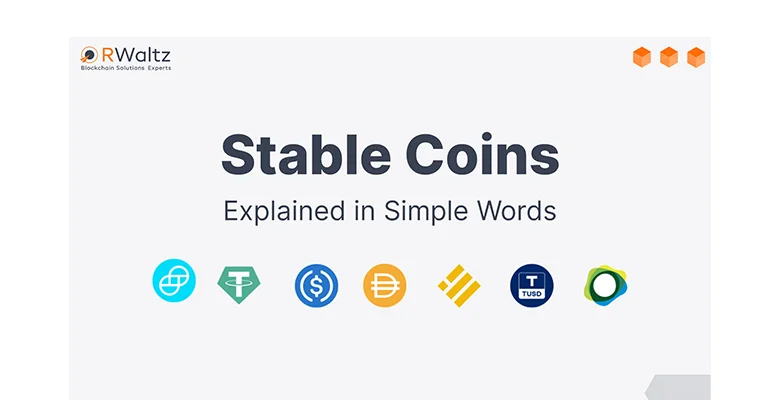
What are Stablecoins?
A stablecoin is defined as a cryptocurrency class offering price stability and is backed by a real-world asset. A stable coin doesn’t fluctuate similar to the other cryptos like bitcoin or ether. Pegged to other assets like the US dollar or Gold they offer fixed value compared to normal cryptocurrencies. With a stable valuation like Fiat currency, they offer mobility and utility like cryptocurrency.Most of the stablecoins are pegged at a ratio of 1:1 with fiat currencies like Euro or US dollars that can be traded on exchanges.
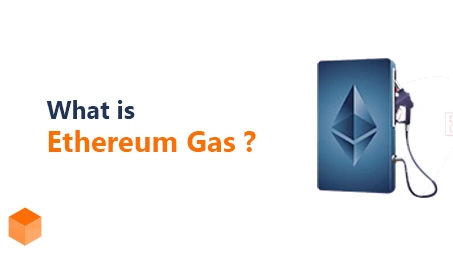
What is Ethereum Gas?
On Ethereum, “Gas” refers to a unit of measurement for the amount of computation power required to execute specific operations on the network. It is a fee or a pricing value needed for a successful transaction or execution of a contract on the Ethereum Blockchain platform. It is priced in small fractions of ether (ETH) popularly termed as gwei and a few times also known as nanoeth of the gas. The appropriate gas fee is determined by the supply and demand amongst the network miners, who can decline the transaction process in case the gas fee fails to meet the threshold. The Ethereum Gas also defines a term called Gas Limit meaning, the maximum amount of gas or energy that can be spent on a transaction. Why Ethereum Needs Gas?Gas can be thought of as the oxygen needed for Ethereum to remain alive. Similar to our own human life-supporting element, Ether gas is used in different ways to facilitate and expedite transactions on the Ethereum network.
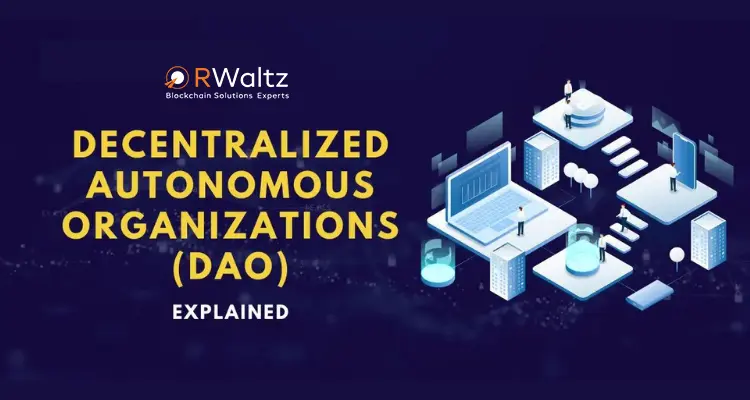
What is Decentralized Autonomous Organization?
Decentralized Autonomous OrganizationDAO stands for decentralized Autonomous Organization. It is defined as a company or an organization that is not controlled by a single institution or managing staff. DAO refers to an organization where all the processes are automated and based on open-source programming code often viewed and used by anyone in the network. Designed to be Automated and decentralized, DAO is an organization structure without a board of directors and management. With an aim to eliminate human error or investor manipulation, DAO is specially designed with all the rules embedded into the code thus removing the hierarchy hurdles and bureaucracy.
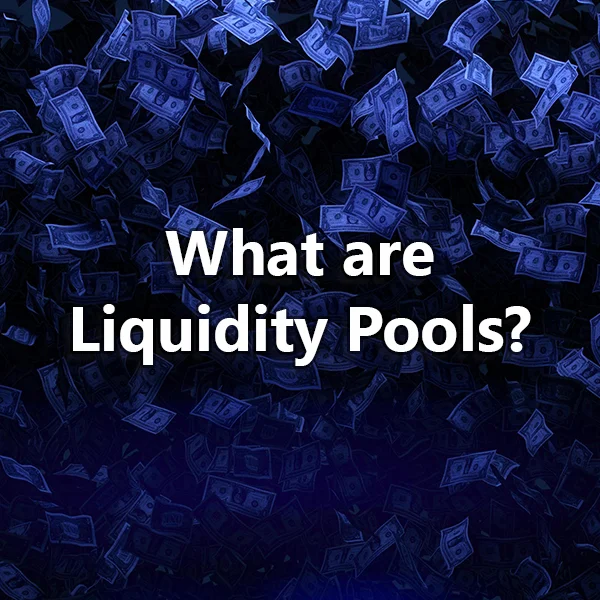
What are Liquidity Pools?
Liquidity pools are defined as crowdsourced pools, where cryptocurrencies or tokens are locked in a smart contract facilitating trades between the assets on a Decentralized Exchange (DEX). Most of the Defi platforms use automated market makers rather than traditional markets enabling automated trading of digital assets through the liquidity pools. The Liquidity Pools depict a mechanism enabling users to pool their assets in a DEX’s smart contracts that offers asset liquidity to the traders for currency swap. Addressing the challenge of limited liquidity supply, automated market makers offered incentives to supply these pools with the assets without the intermediary. The trading turns easier on Decentralized Exchanges with increasing assets added to the pool and the rising liquidity of the pool.
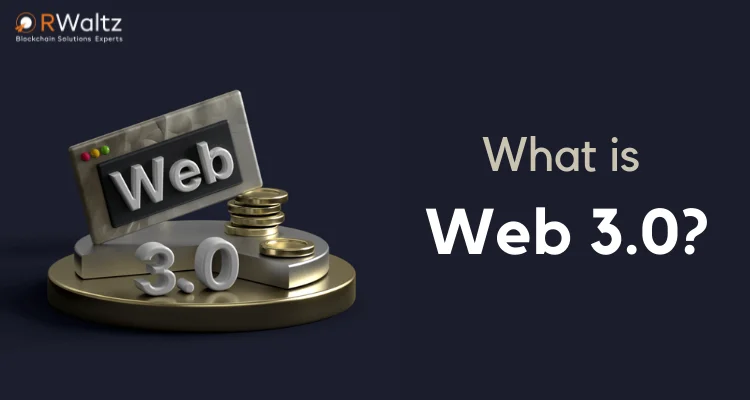
What Is Web 3.0?
Web 3.0 is the upcoming third generation of the internet where websites and apps will be able to process information in a smart human-like way through technologies like machine learning (ML), Big Data, decentralized ledger technology (DLT), etc. Web 3.0 was originally called the Semantic Web by World Wide Web inventor Tim Berners-Lee and was aimed at being a more autonomous, intelligent, and open internet.SourceThe Web 3.0 definition can be expanded as follows: data will be interconnected in a decentralized way, which would be a huge leap forward to our current generation of the internet (Web 2.0), where data is mostly stored in centralized repositories.

Different Types of Tokens in Crypto World
Types of Tokens in Crypto WorldCrypto TokenThe phrase "crypto token" refers to a unique virtual currency token or the method by which cryptocurrencies are valued. These tokens are fungible and tradeable assets or utilities with their own blockchains.Security Tokens A security token is a portable device that electronically authenticates a person's identification by storing personal information. To allow access to a network service, the owner inserts the security token into a system. STS (Security Token Services) creates security tokens that verify a person's identification.Utility TokensUtility tokens are used in the particular system only. More often used for ICOs.Commodity TokensCommodity tokens are tokens backed by standard assets that already have an independent value such as gold, oil, or a fiat currency.Non Fungible TokensNFT stands for Non-fungible Token. It represents digital assets that are diverse from each other with Identification codes. A unit of data stored on a digital ledger namely Blockchain certifying a digital asset to be inimitable or unique ensuring it is not interchangeable is termed as Non-Fungible Token (NFT).If you wish to develop your own token, contact us for restructuring and reframing your idea. Our Consultants will surely consolidate your thoughts regarding the Token development service.

What is Tokenomics?
What is Tokenomics?Formed by pairing Token and Economics, Tokenomics depicts the economics of crypto tokens. It refers to all the quantities of crypto tokens making it appealing to investors. It offers the structure and cycle of how the token is acquired and traded. It also manages all the operations inside the crypto market ranging from private and public sales to airdrop, delivering a framework of all the processes that take place to secure the long-term equilibrium of the ecosystem.

Understanding the Crypto Mining
What is Mining? Mining refers to the process of solving mathematical equations by miners who are rewarded with coins or transaction fees for solving the equations. The transaction details are stored on Blockchain and the transaction is locked once the miner verifies it to be legitimate.

Understanding the Crypto World - NFT
NFT AuctionNFT Auction is a virtual event where participants sell or bid for digital assets or NFTs with an aim to crack the best buying or selling deal.Partial OwnershipPartial Ownership also known as fractionalizing, allows the NFT owners to sell their digital asset into fractions or pieces, where the asset has multiple owners.Full OwnershipFull ownership refers to owning the entire NFT instead of buying it into pieces or fractions. In full ownership, the digital asset is owned only by a single person.NFT StakingNFTs are transferred to a potential platform i.e. the staking platform that takes care of its security and governance. These assets are locked into the smart contract generating an opportunity for the delegators to claim a block and rewards. The staking rewards are determined by the asset’s capacity to develop an income stream like royalties.NFT WalletNFT WalletsNFT Wallets are basically Digital Wallets with the ability to hold NFT over different Blockchains under a single wallet and trade or hold Cryptocurrencies for the exchange of NFTs.

Understand the Crypto and Blockchain World
What is Minting?The process of converting digital assets into a part of Blockchain- a public ledger that remains untampered is called Minting. It is defined as a process of validating information, creating a new block, and recording the information into the blockchain.What is Forking?Blockchain forks are essentially a split in the blockchain network. The process which leads to the divergence of blockchain into two potential paths due to a change in protocol is forking. The network is open source and thus the code is available to everyone to suggest edits or improvements.What is Burning? The act of sending cryptocurrency tokens to a wallet with no private access key, where the tokens can’t be accessed by anyone and are lost forever is coin burning.What is a Gas Fee?Gas Fees refer to the transaction fees paid to the miners by the users on a Blockchain protocol for the transaction to be included in the block.What is a Cryptography?Scrambling sensitive information in the form of ordinary text into a code that can’t be read without a private key is cryptography. It is used to secure the information between sender and receiver.
Recent Knowledge Base
Let's Build Your Vision Together
Get Started with RWaltz Today!




